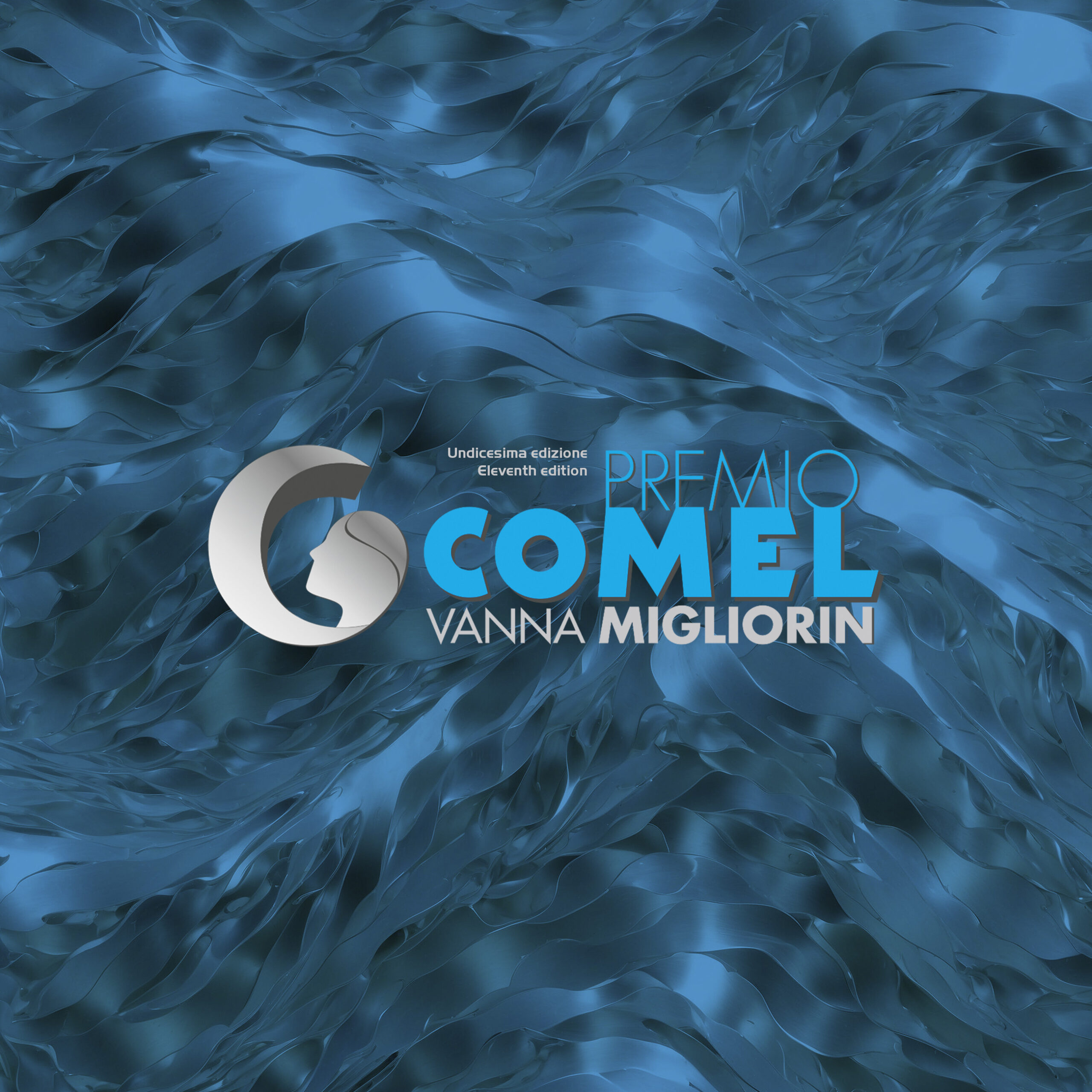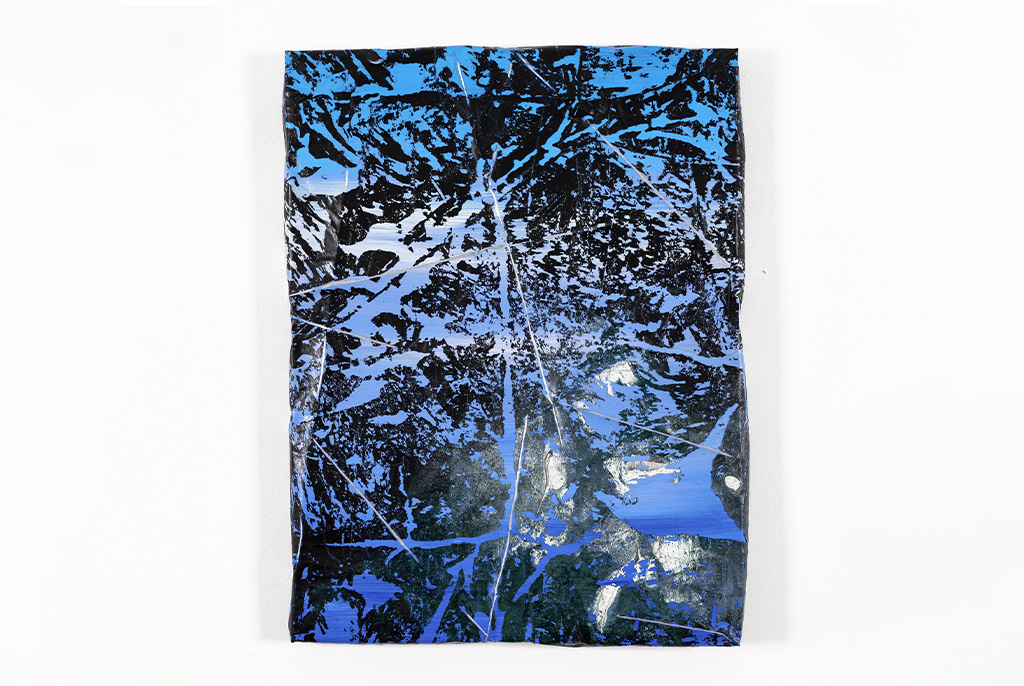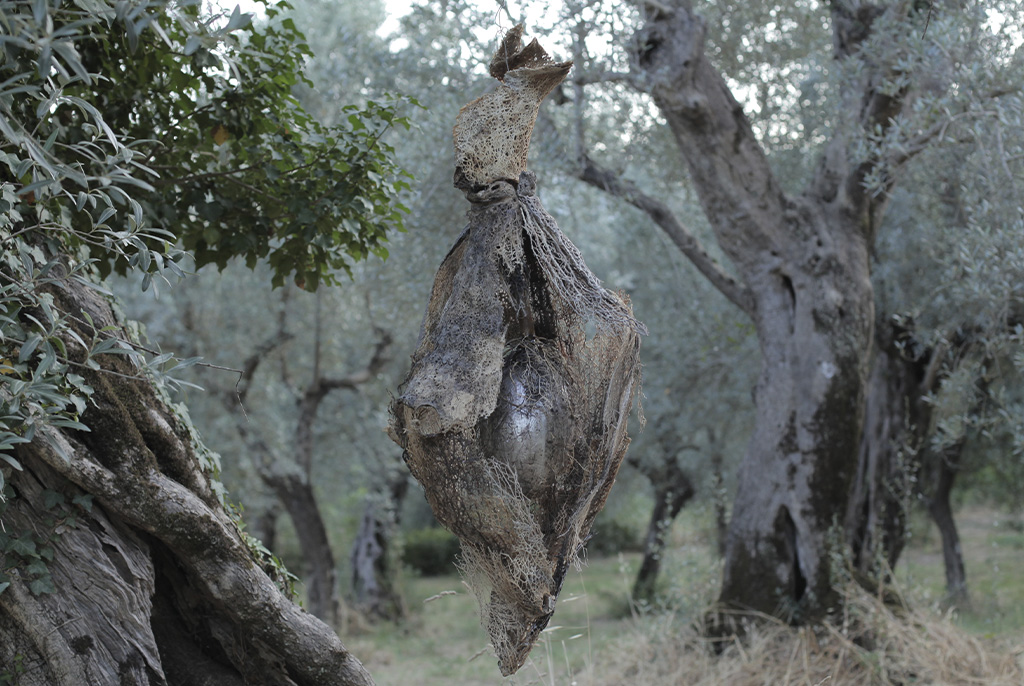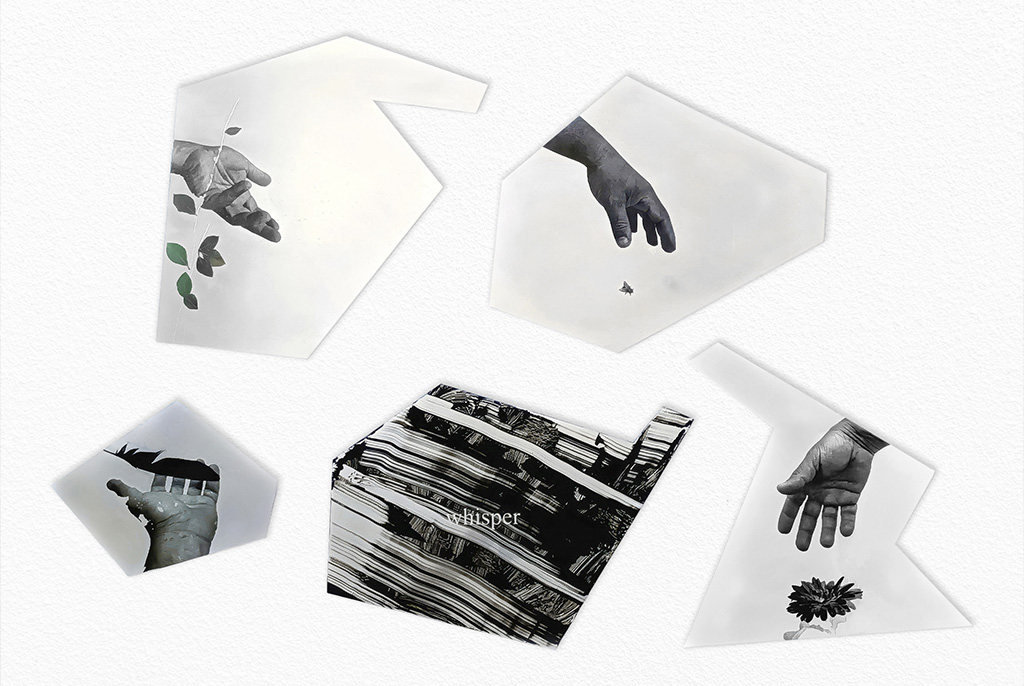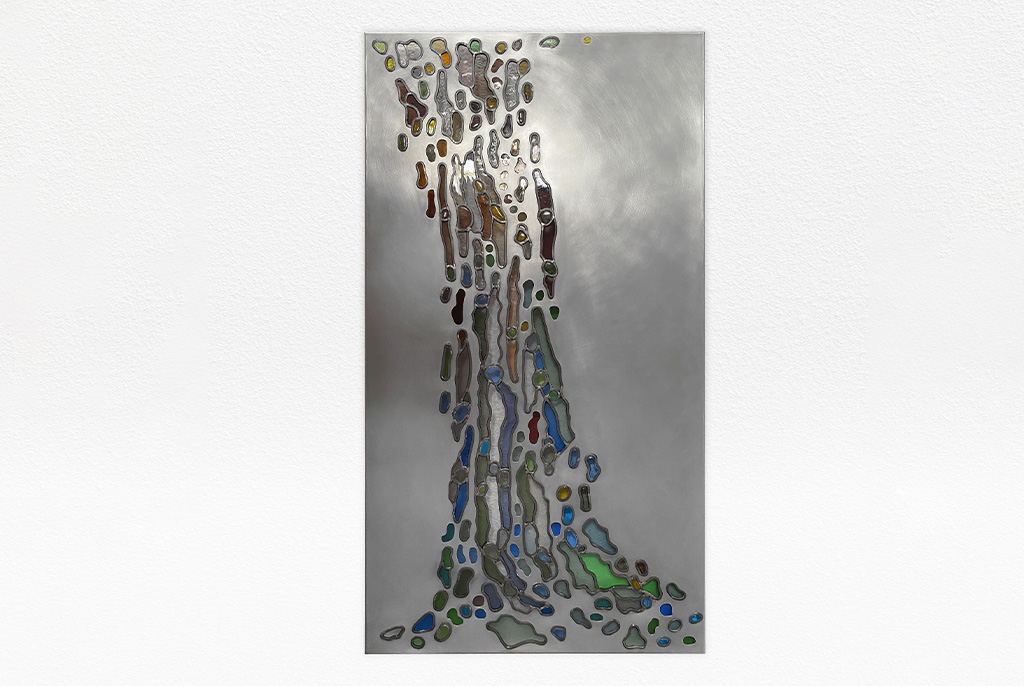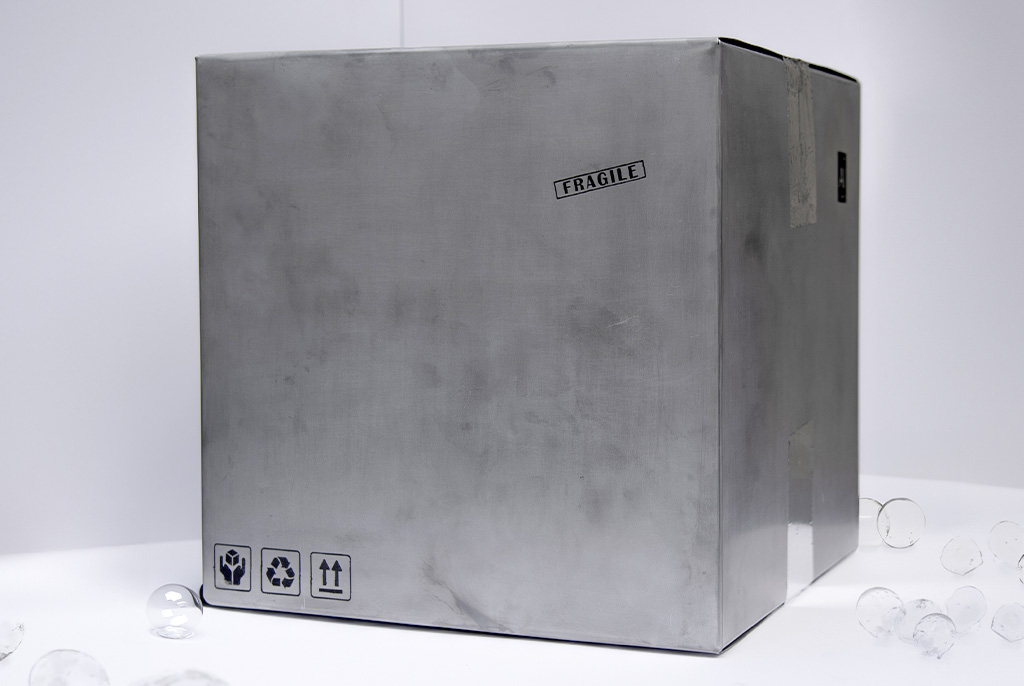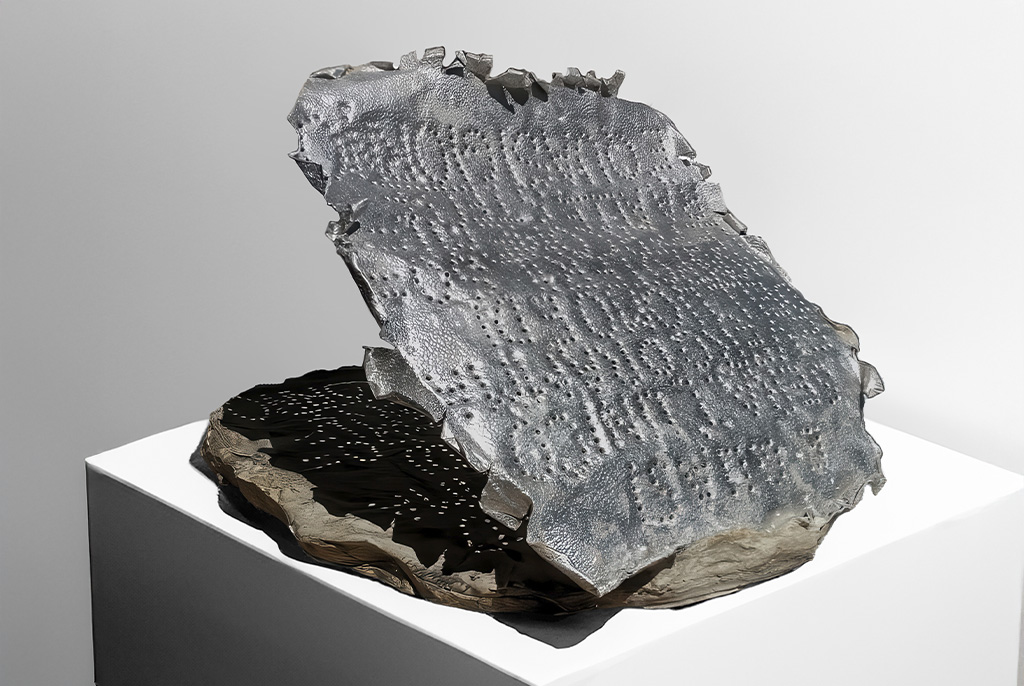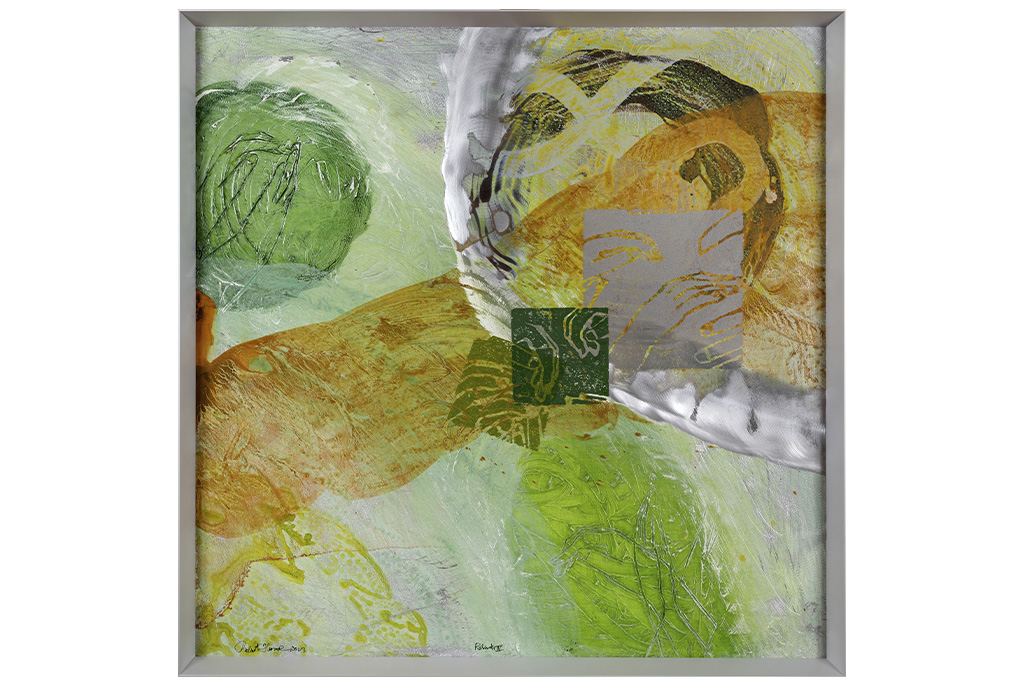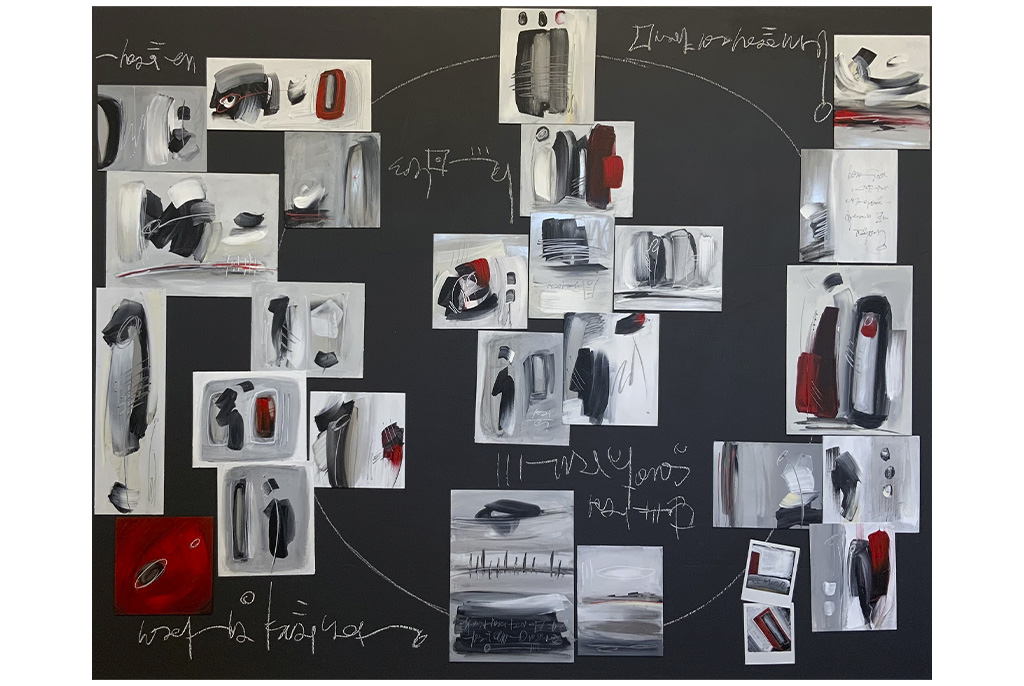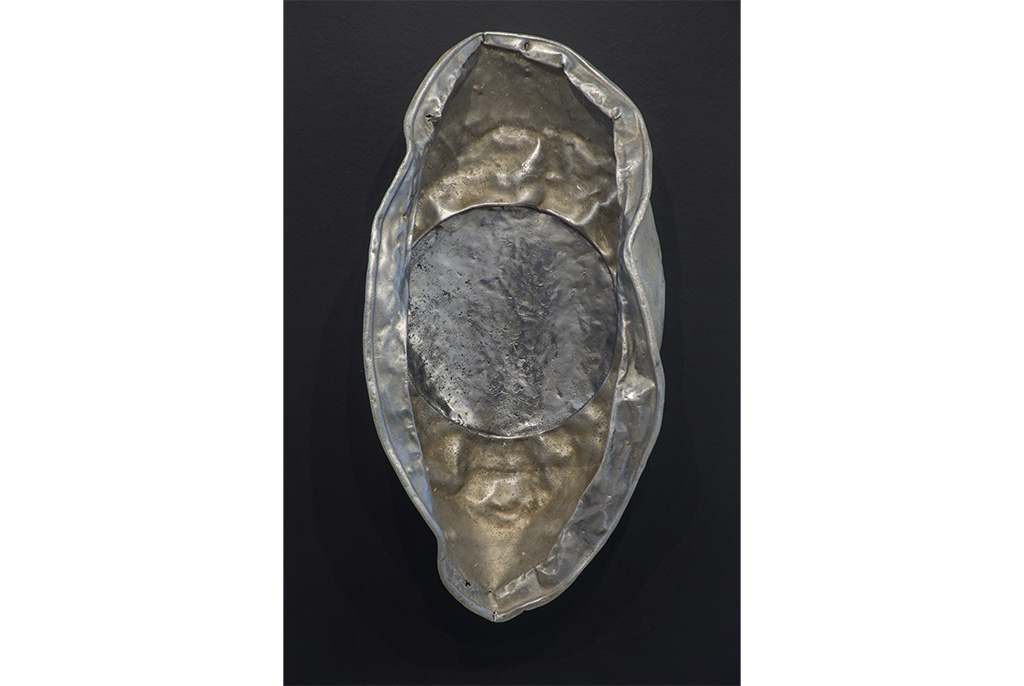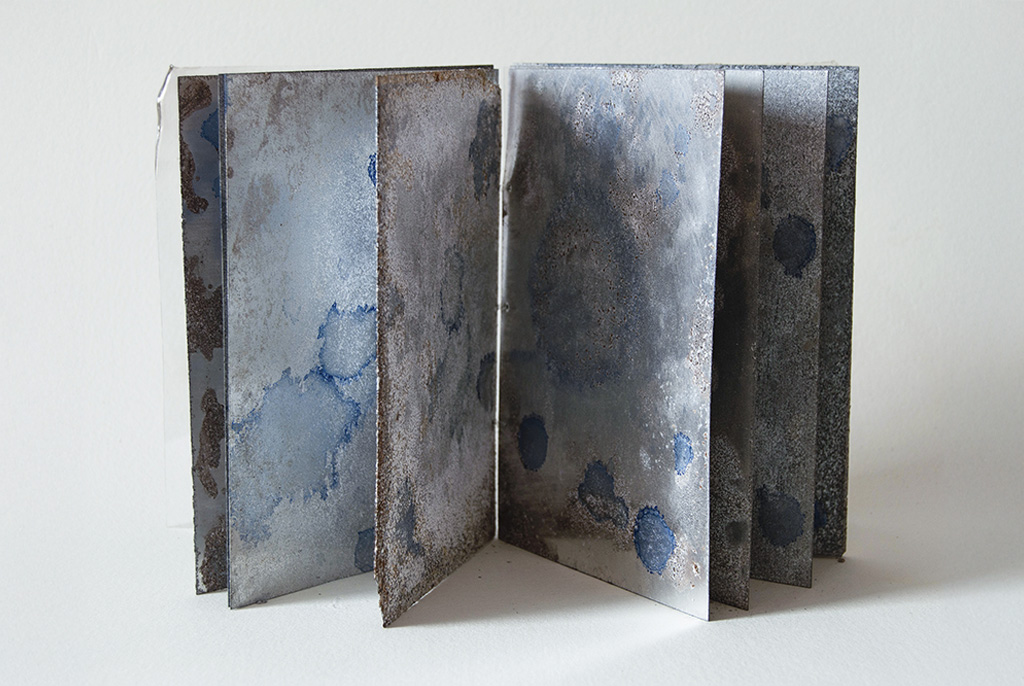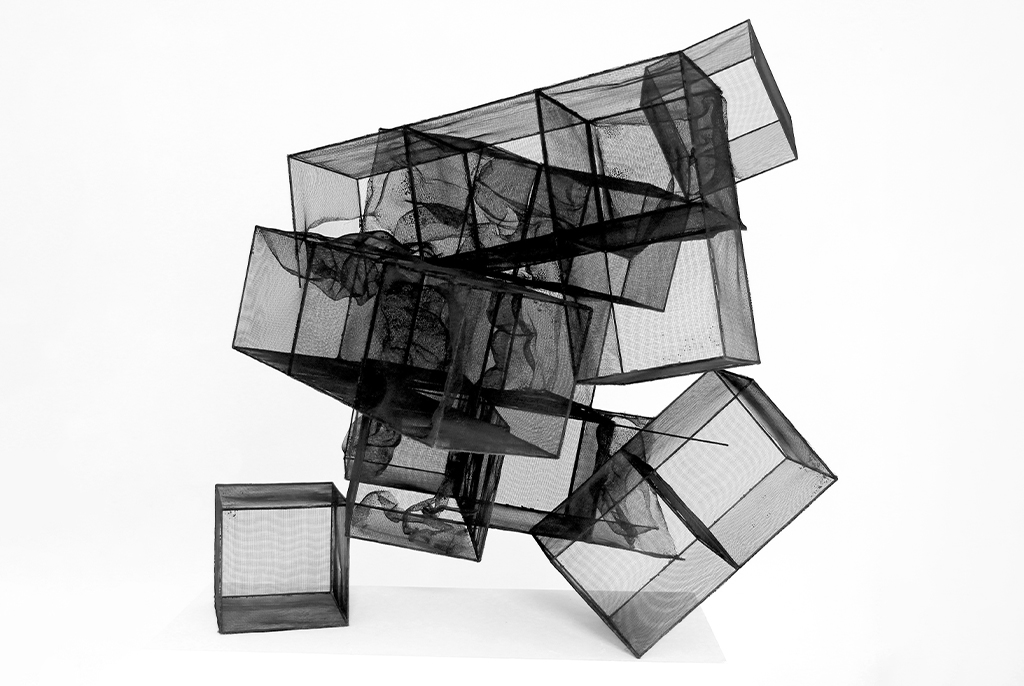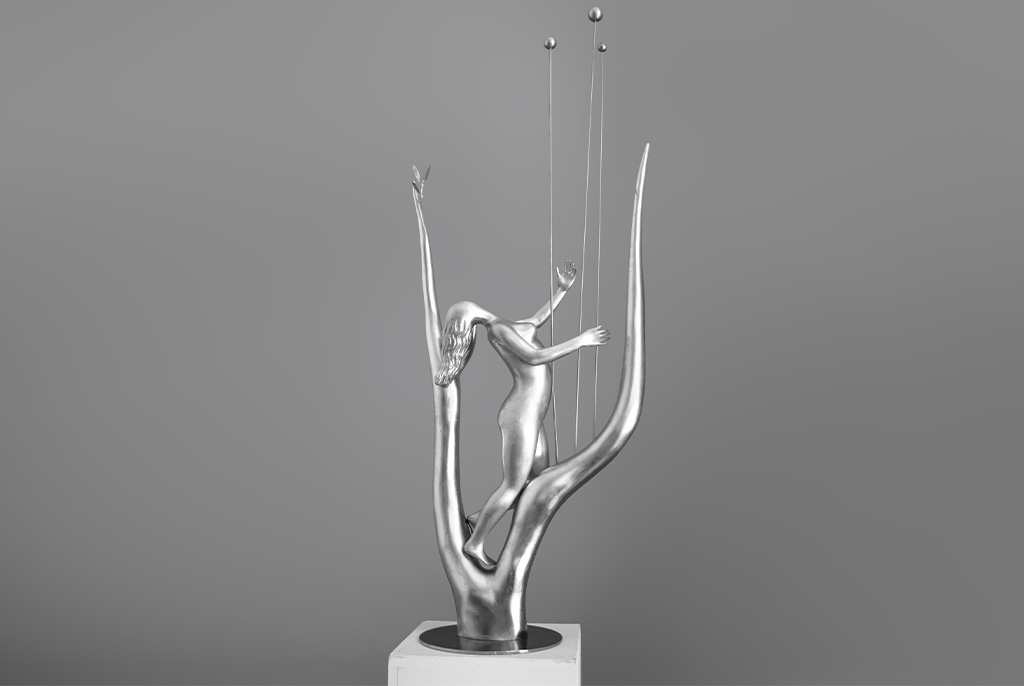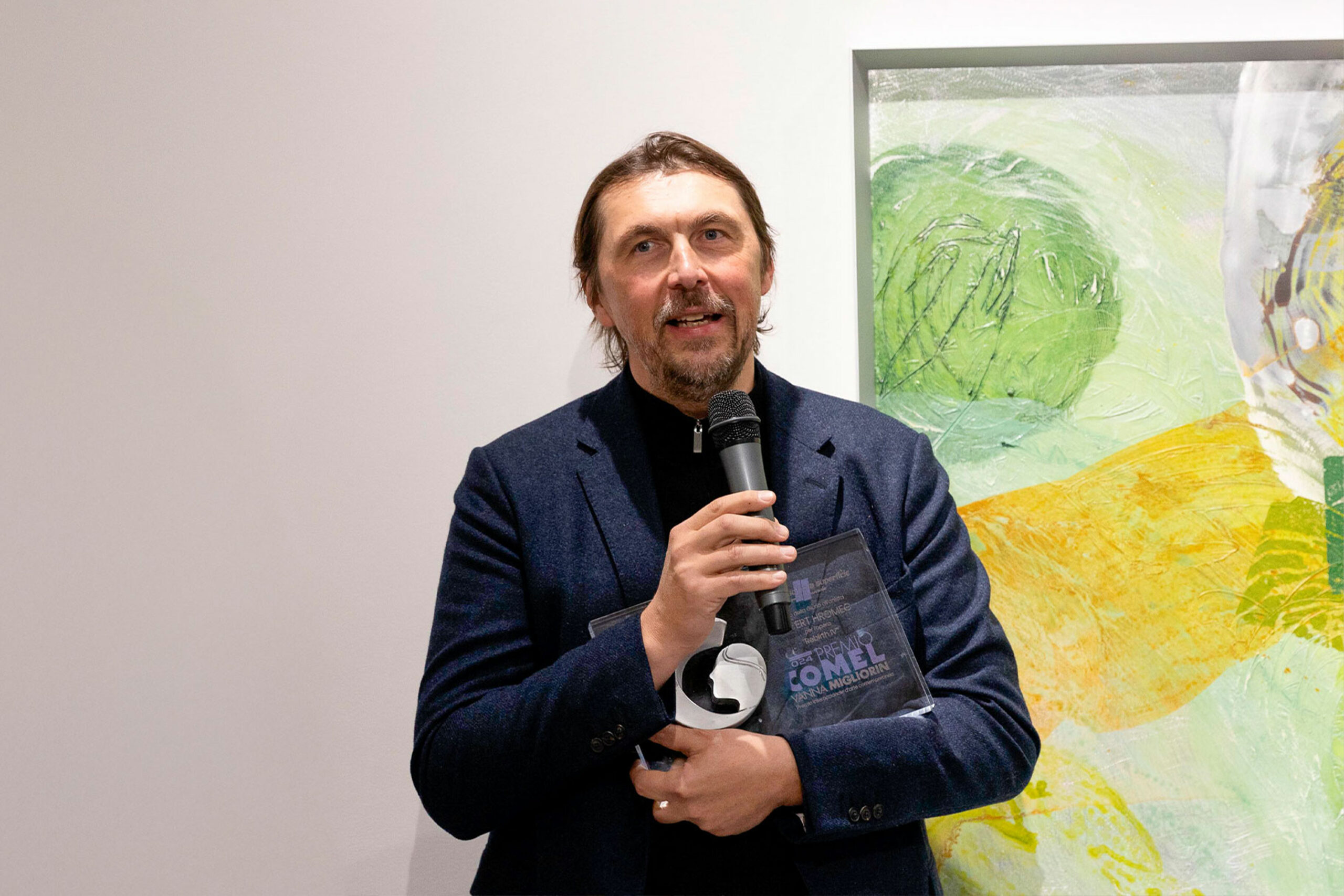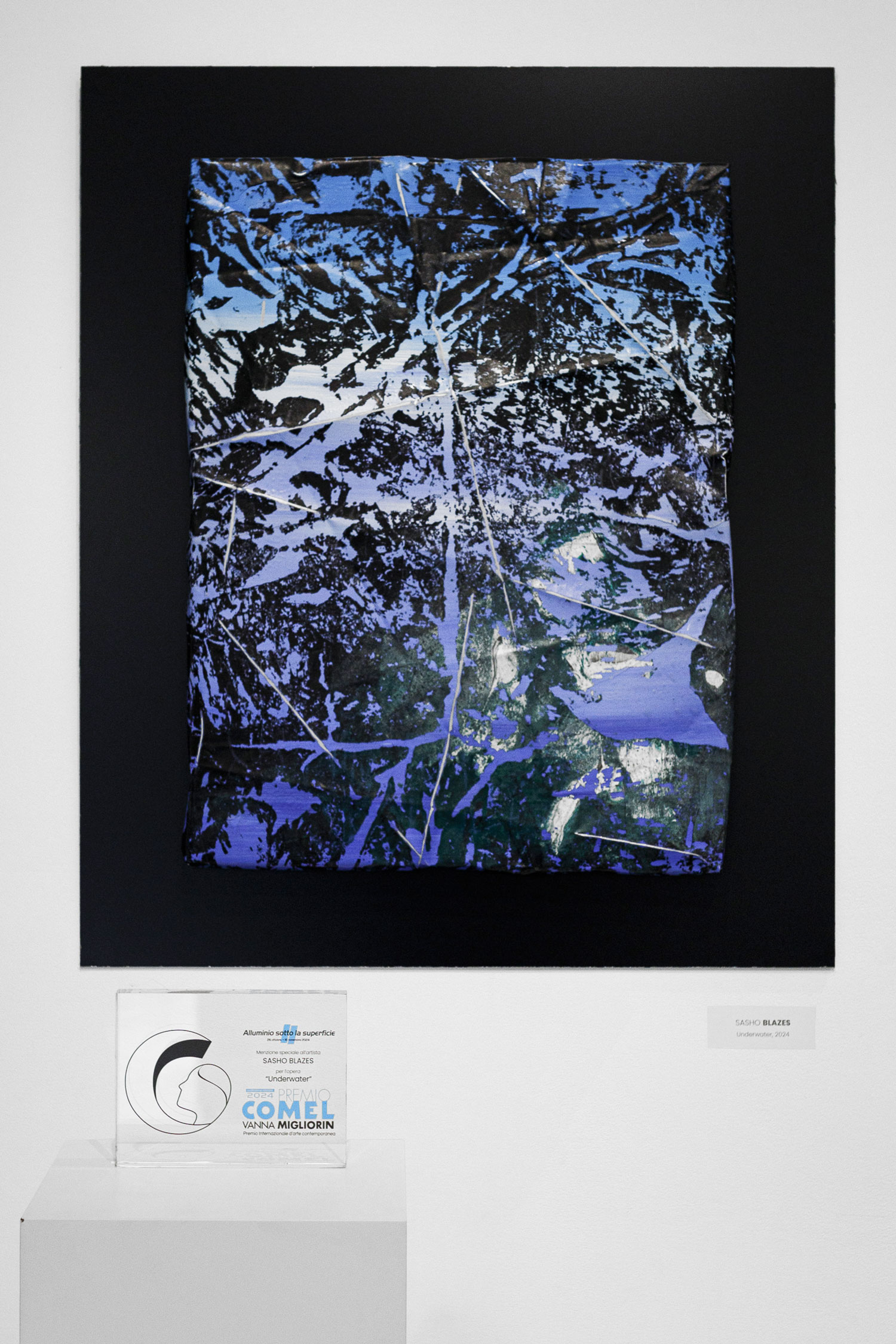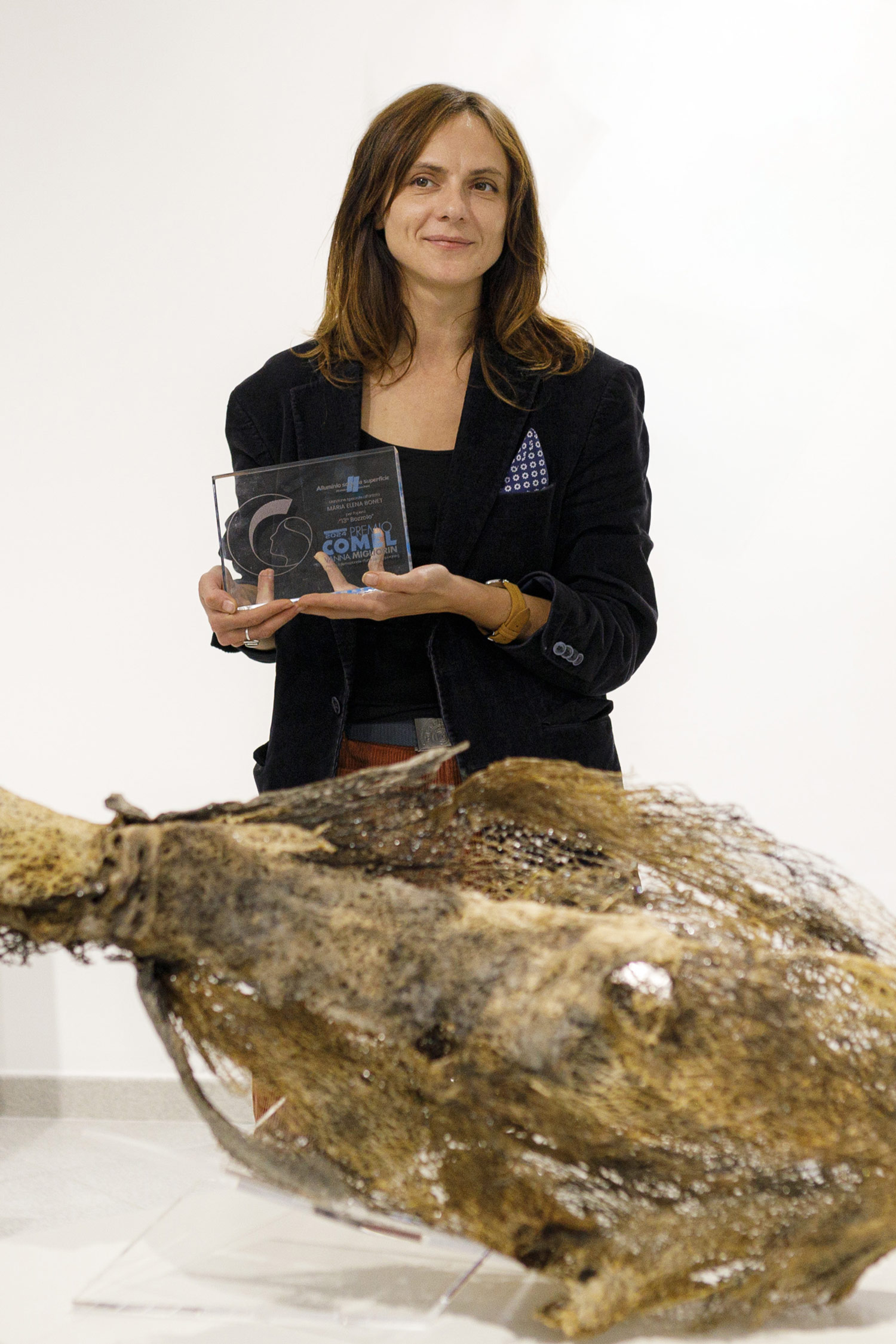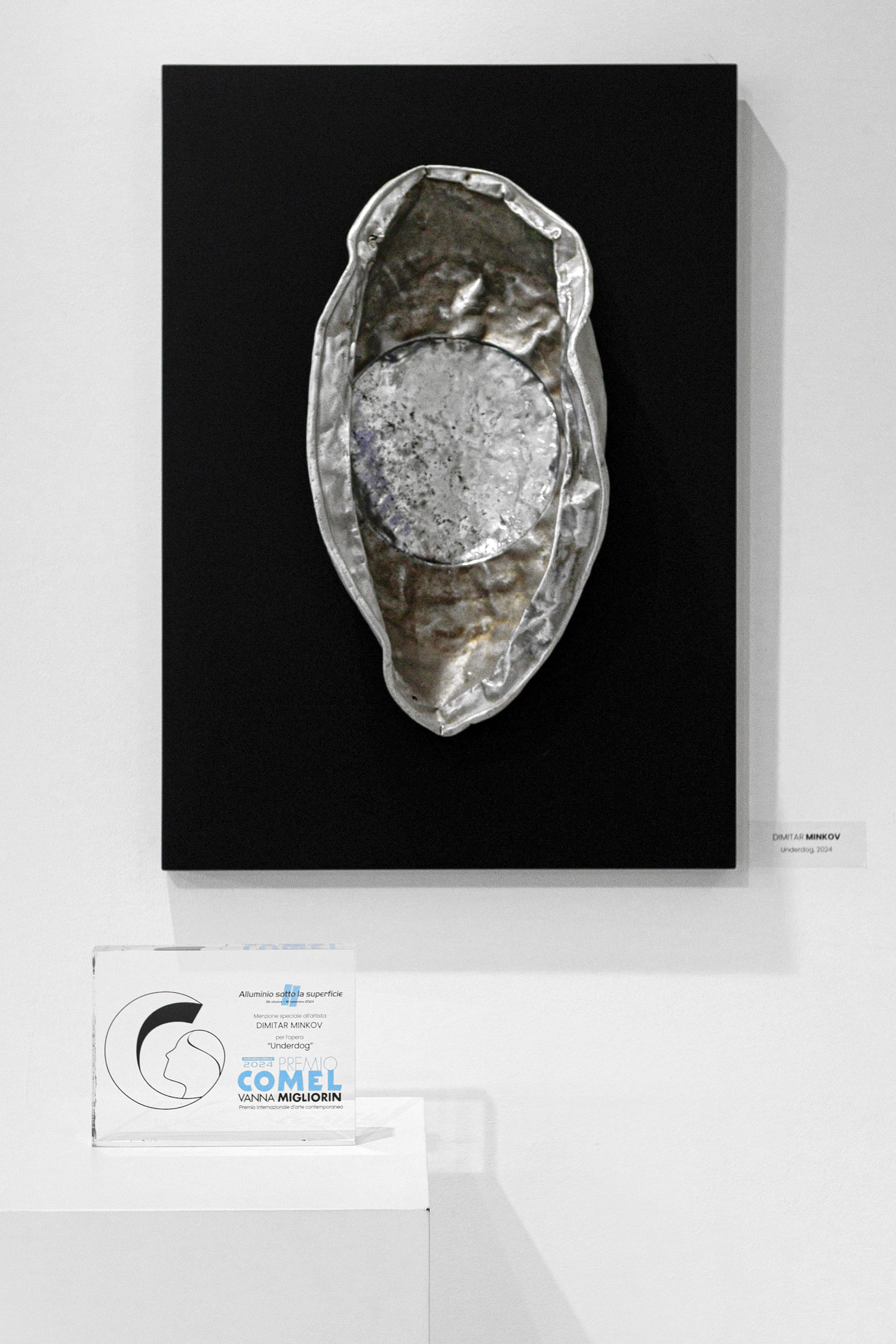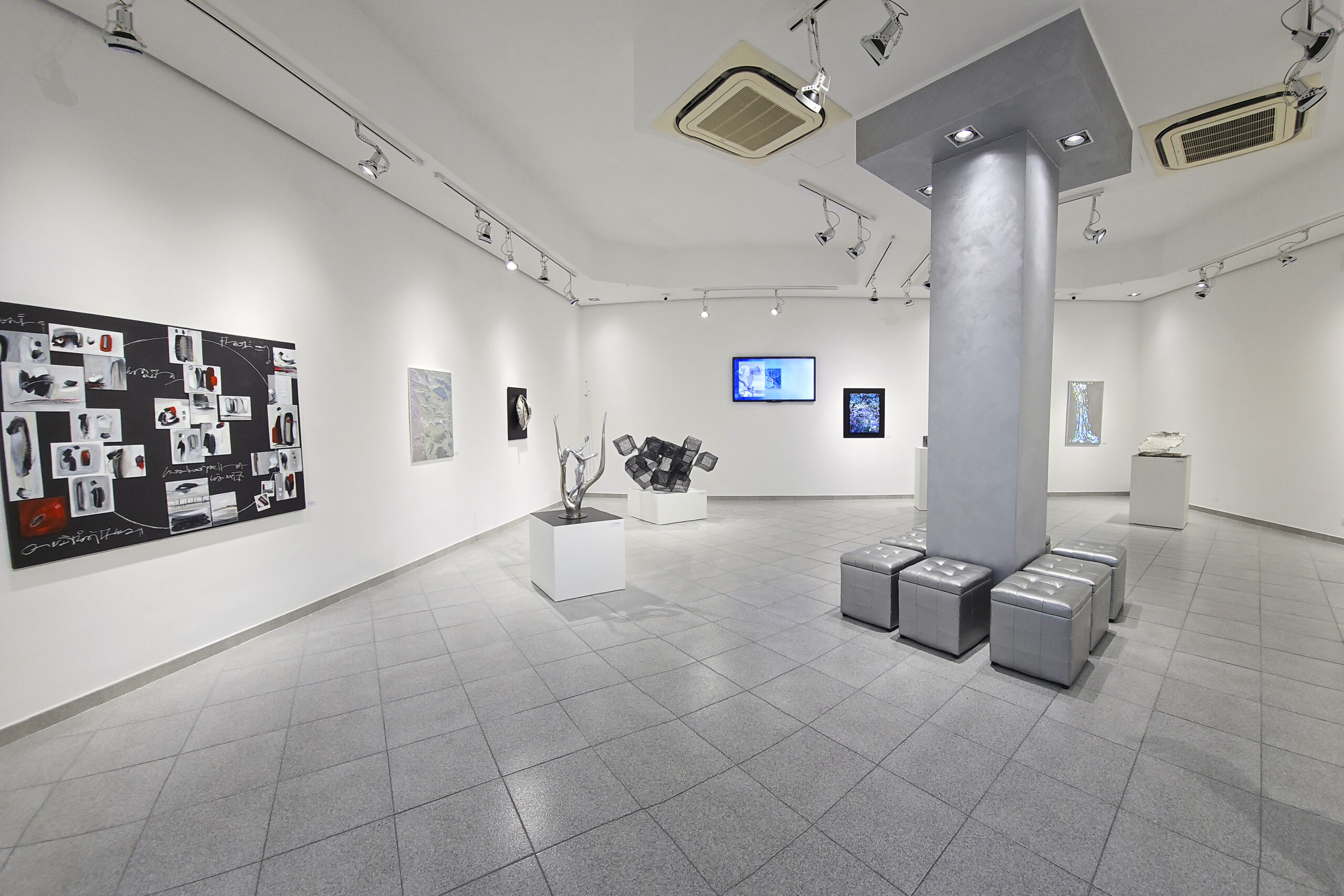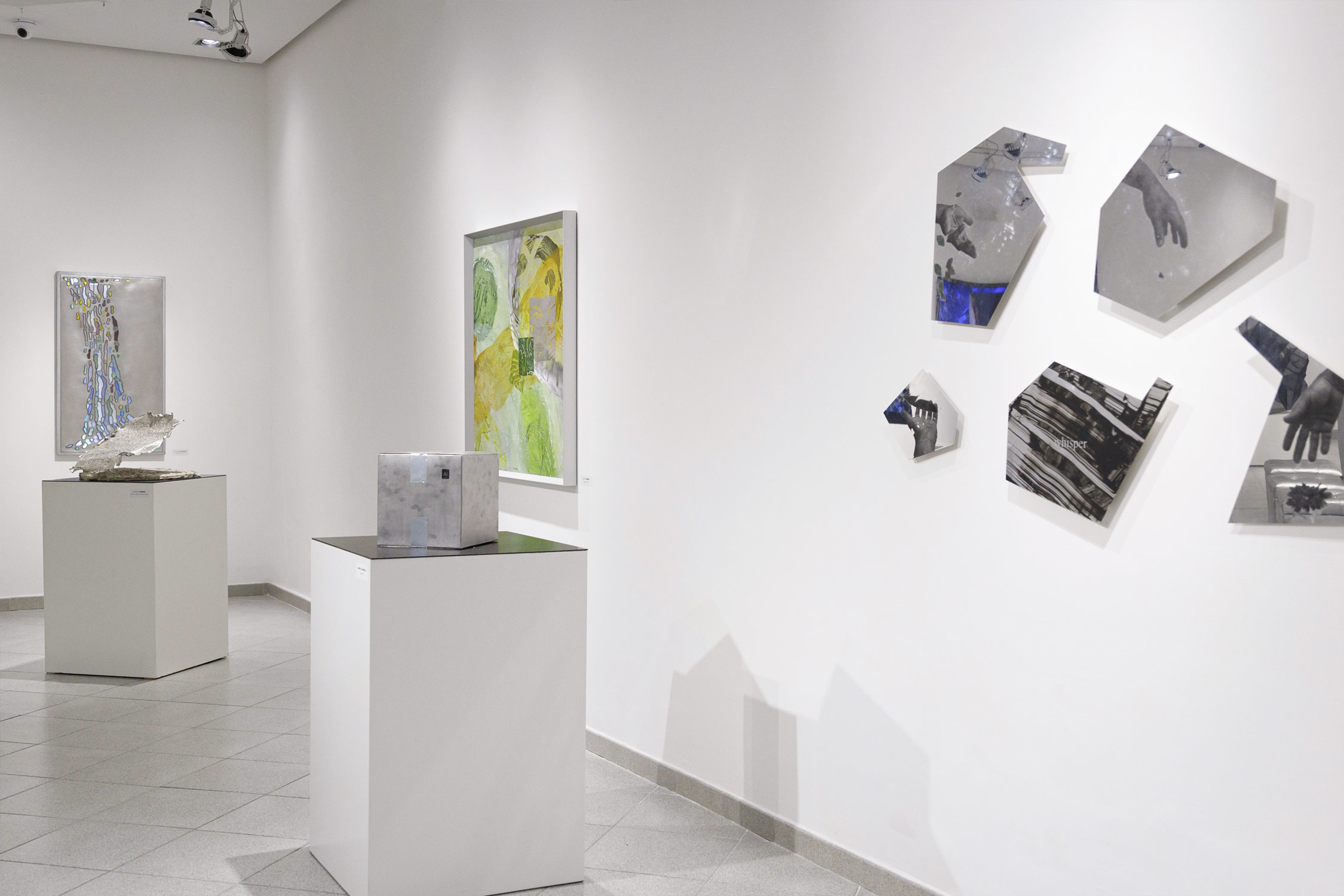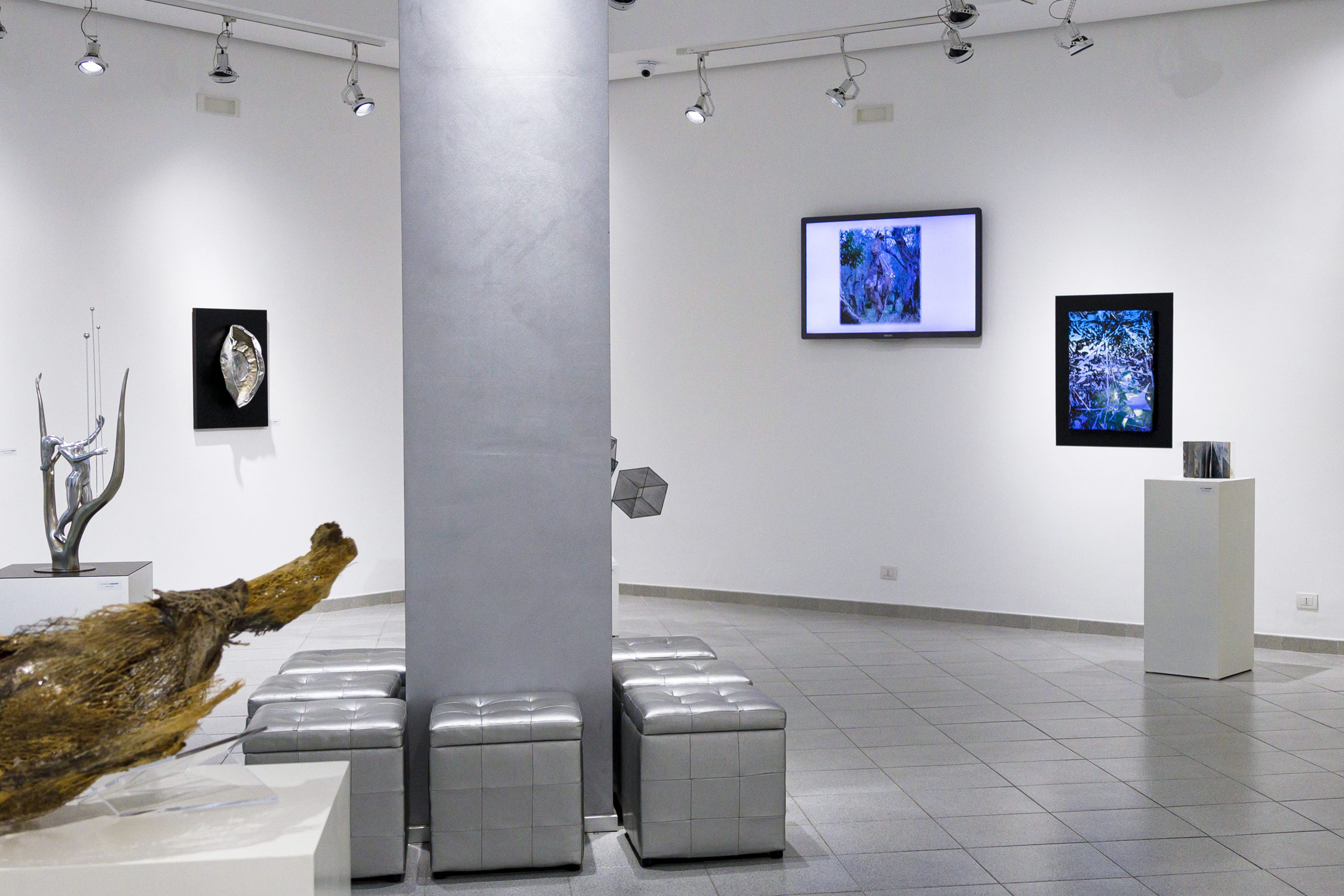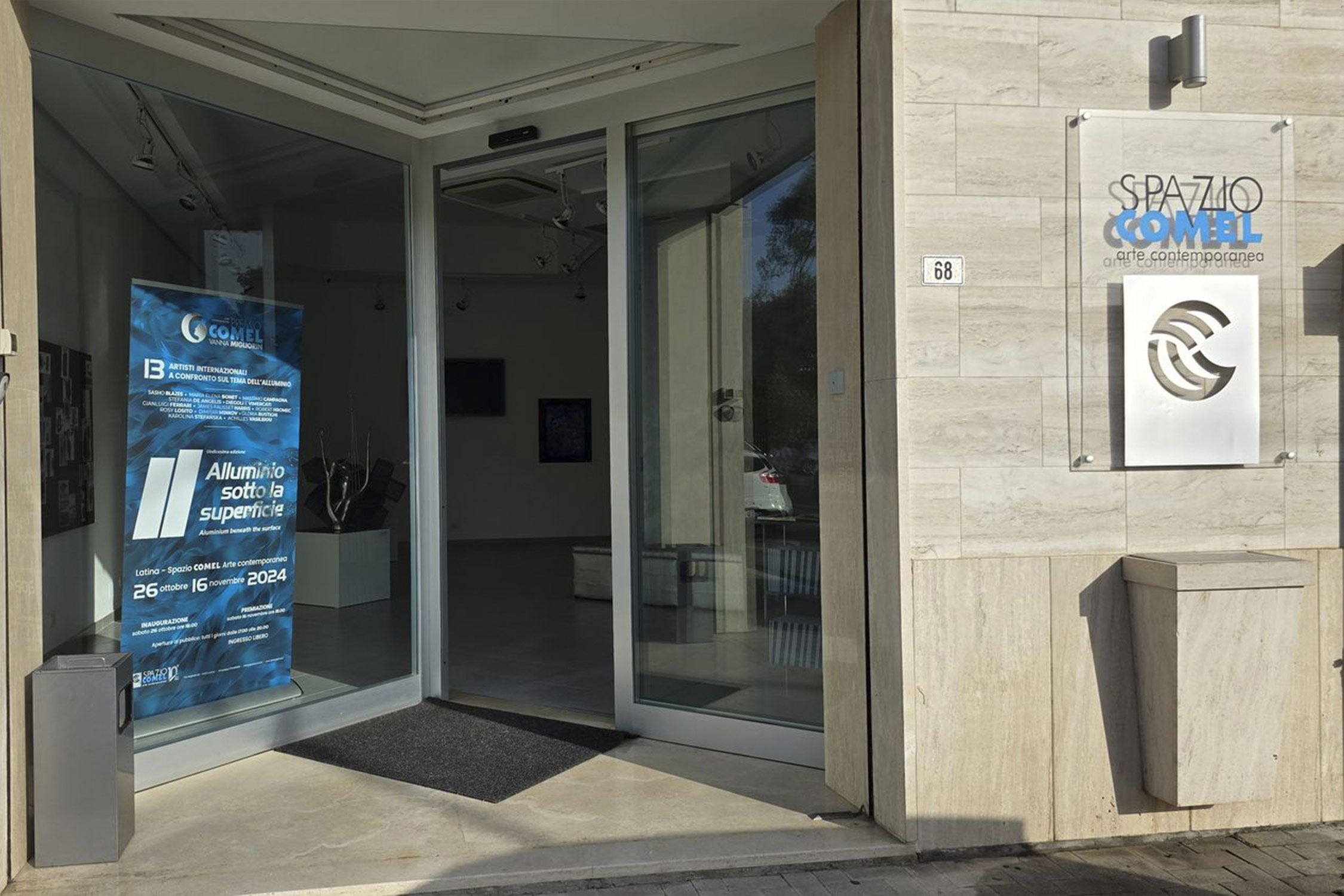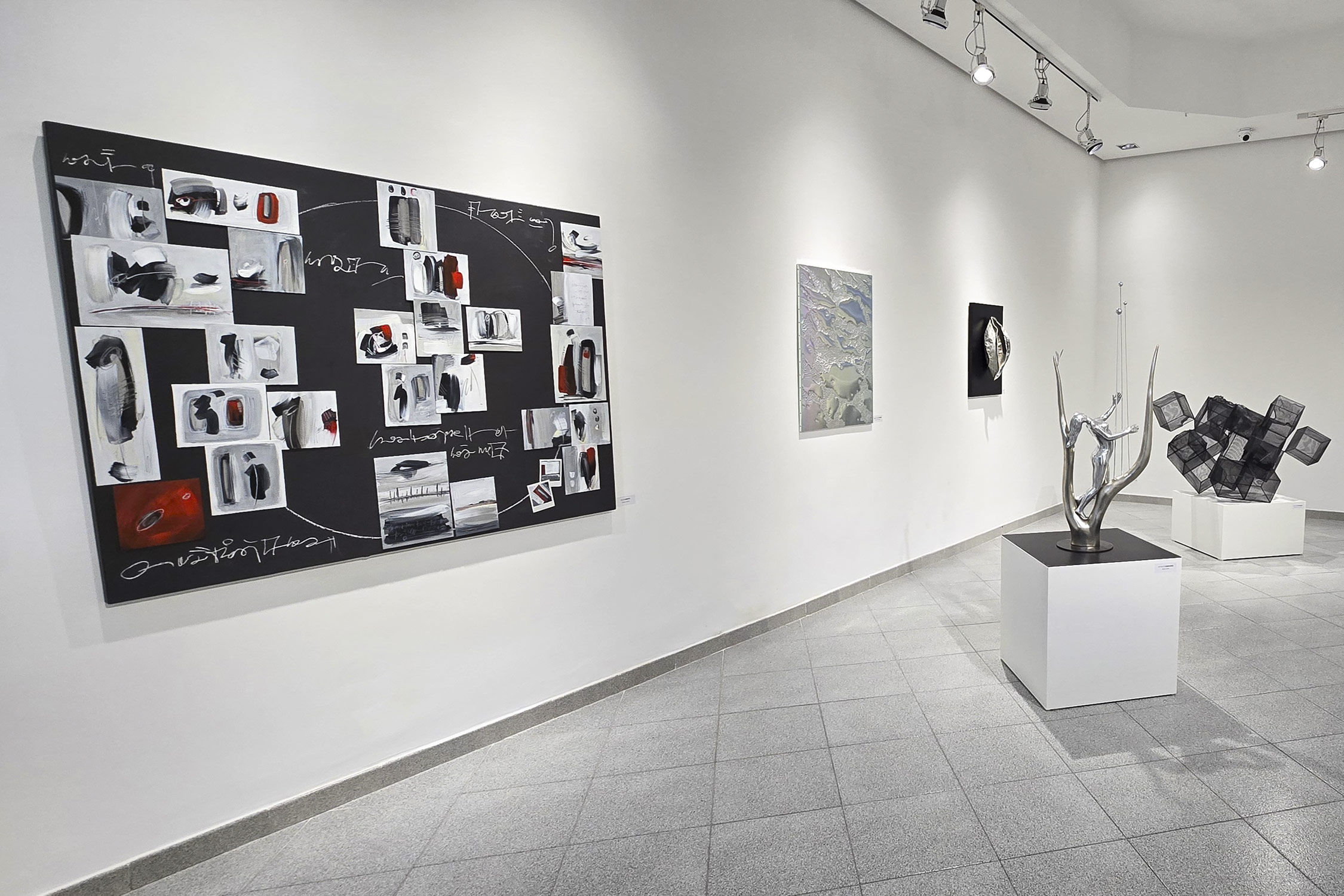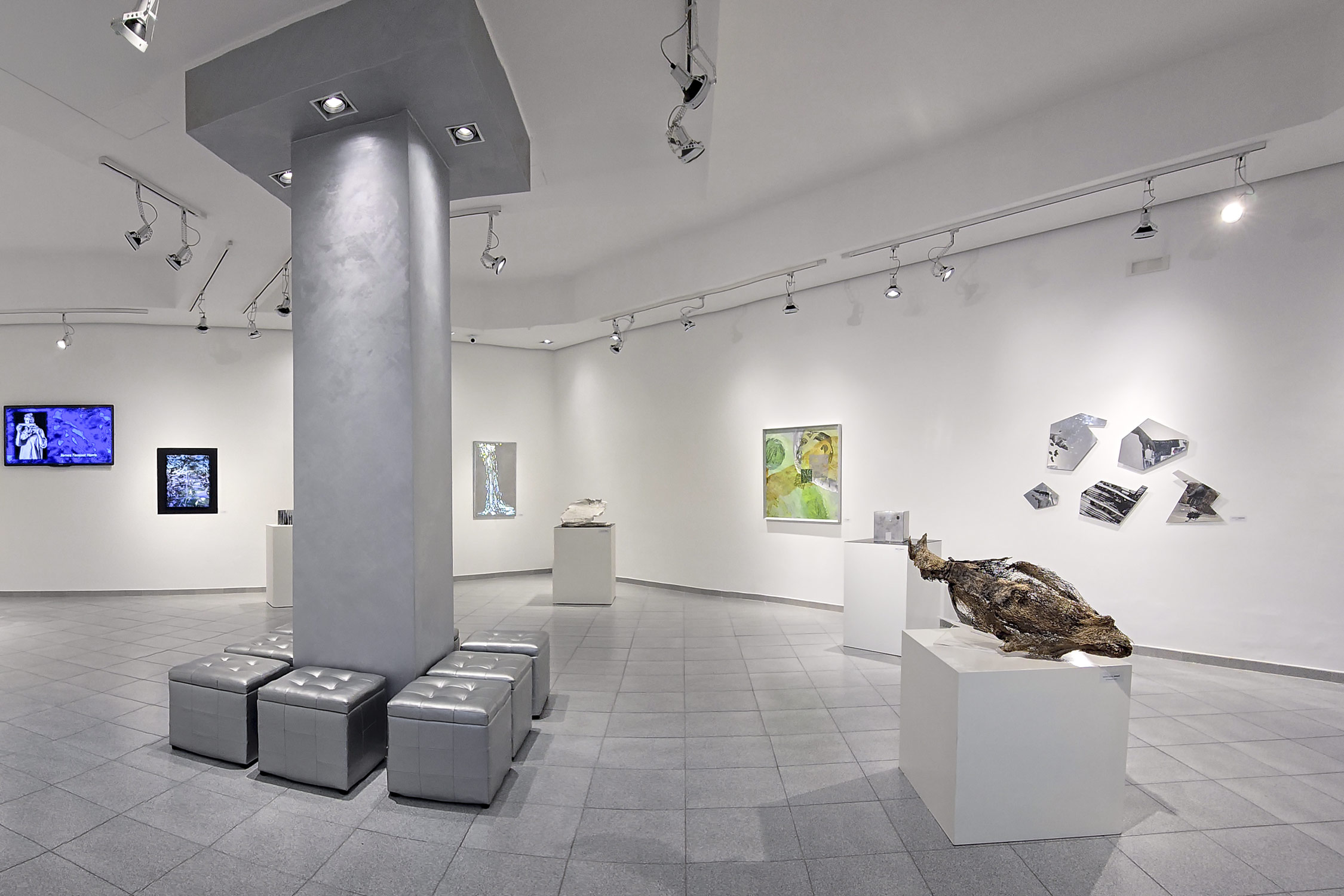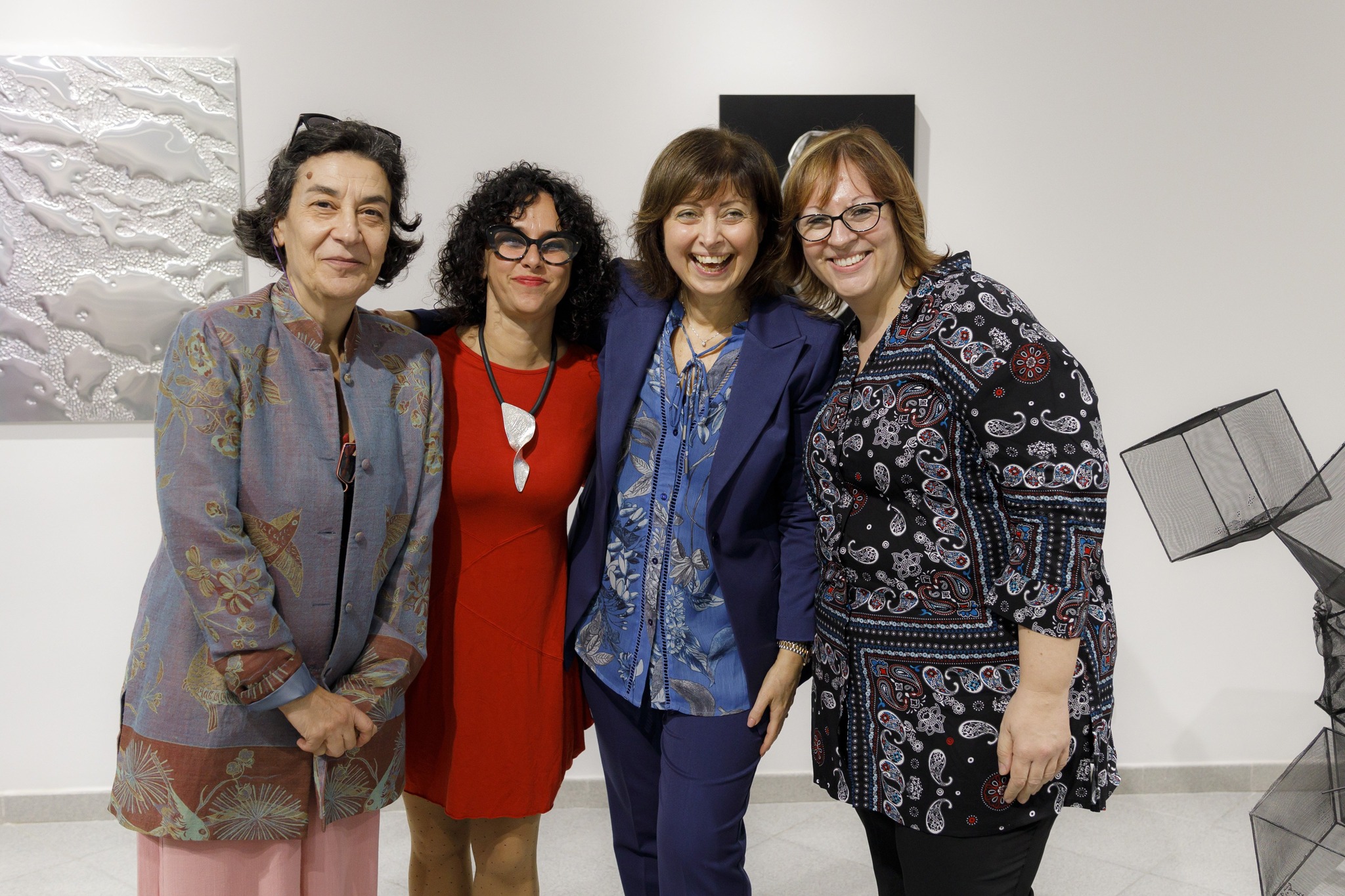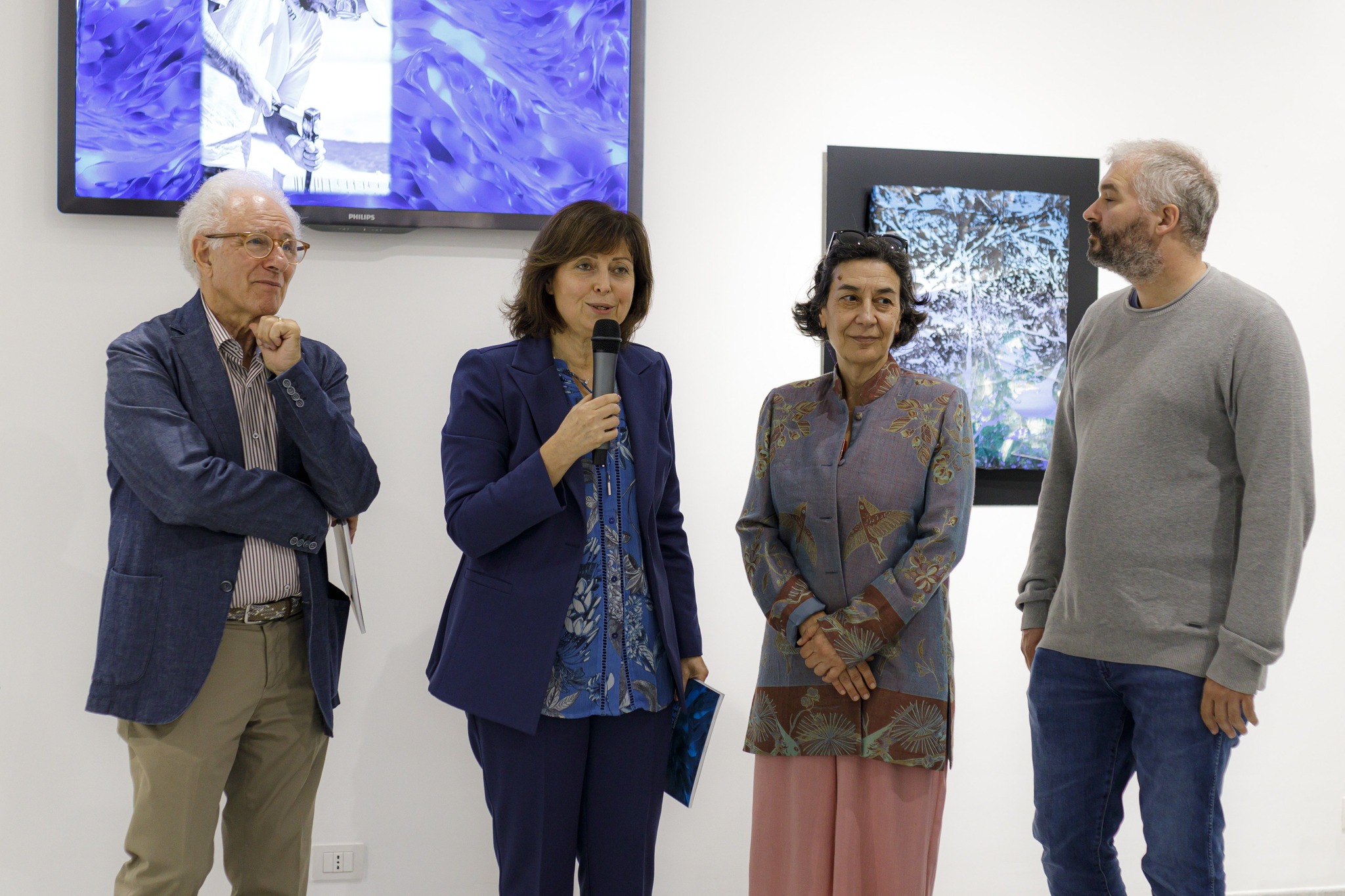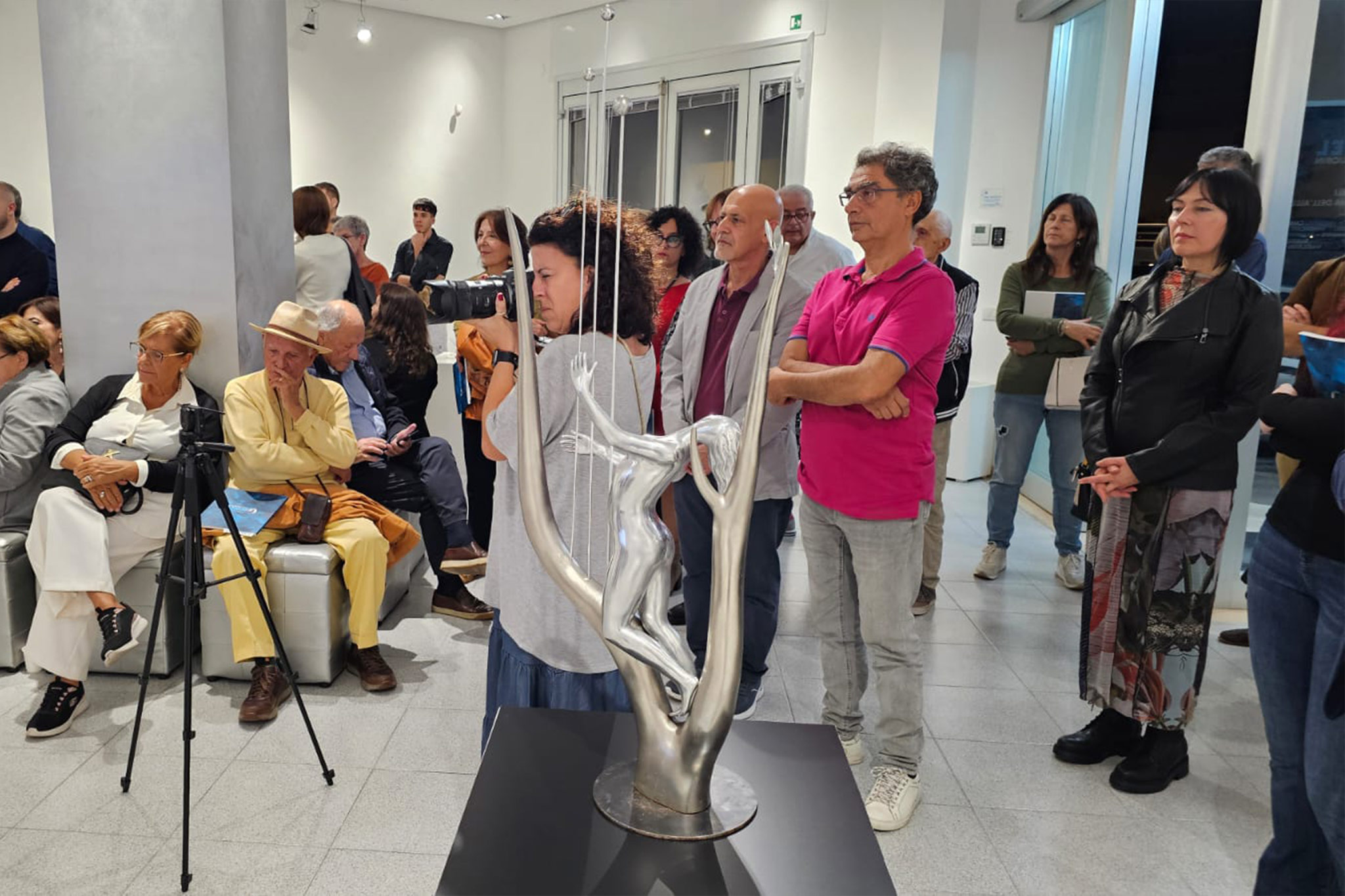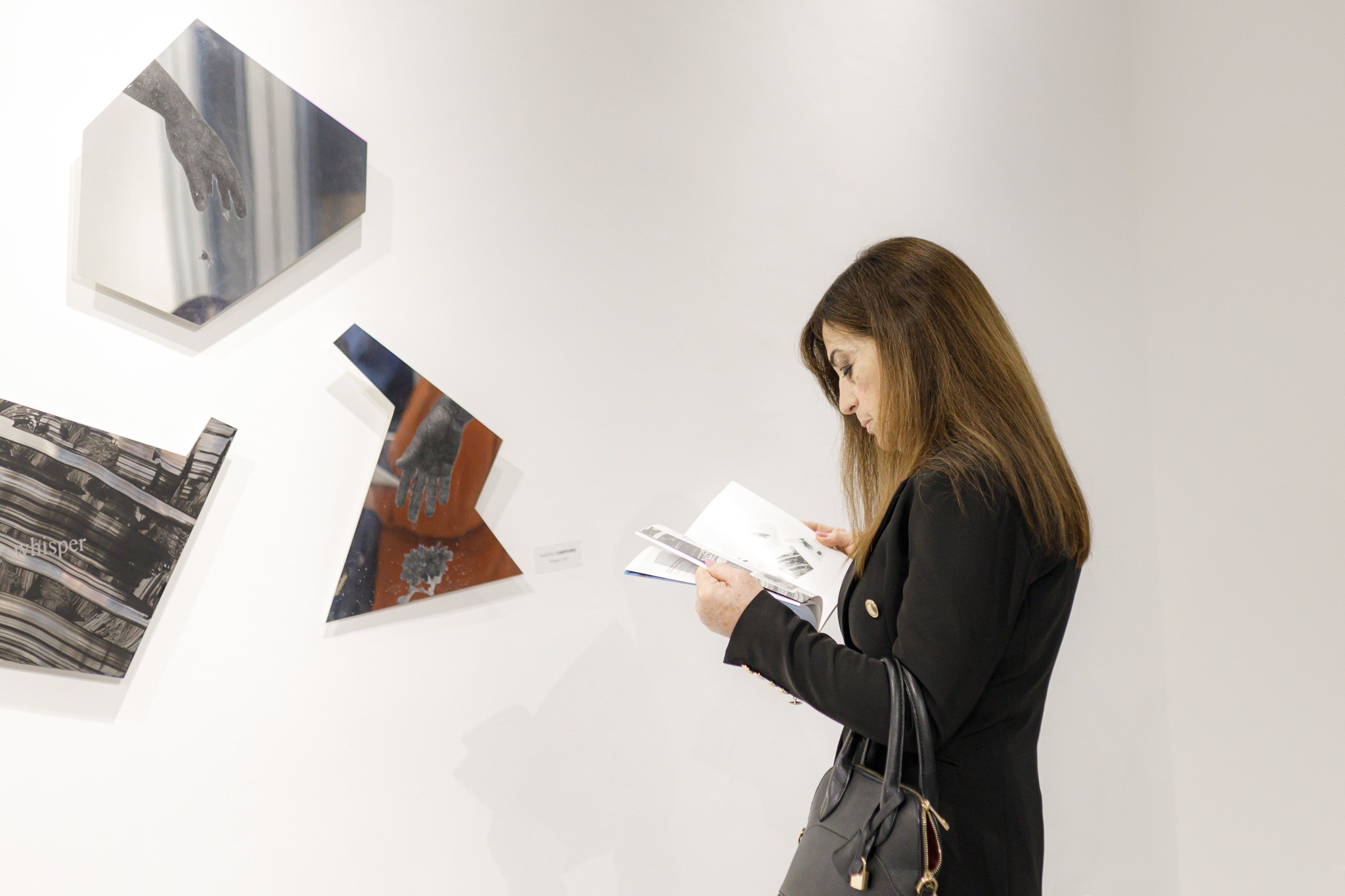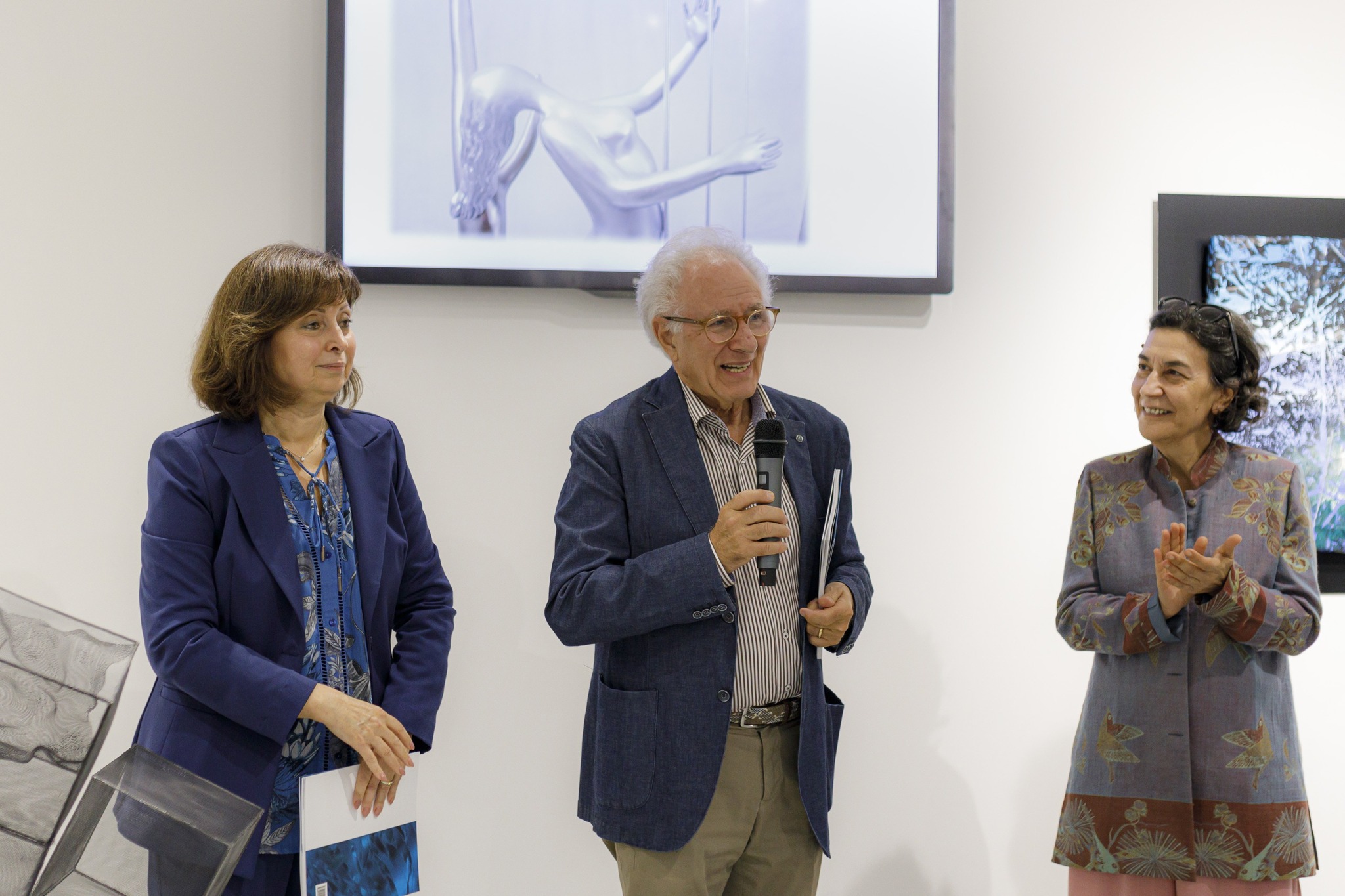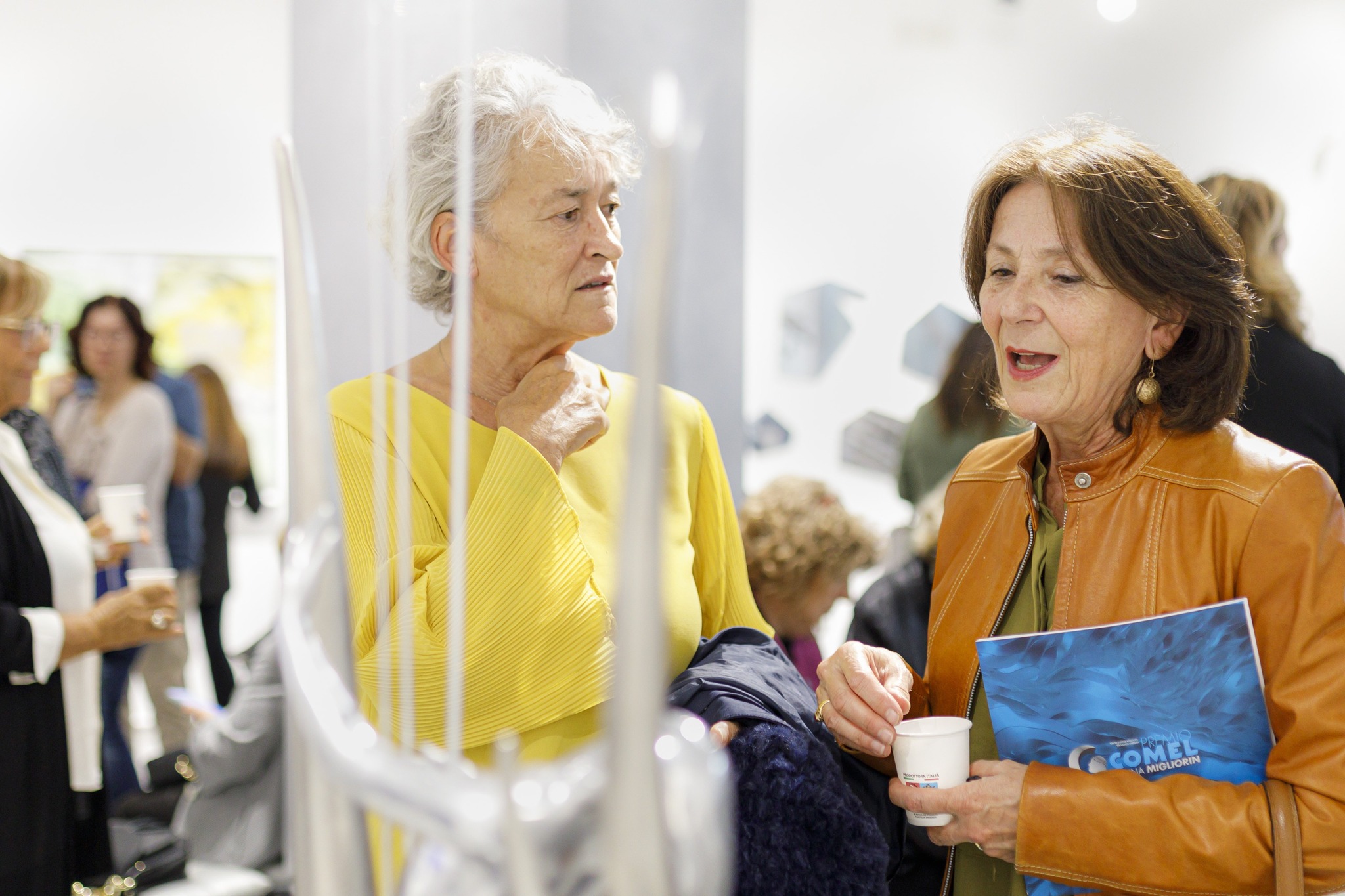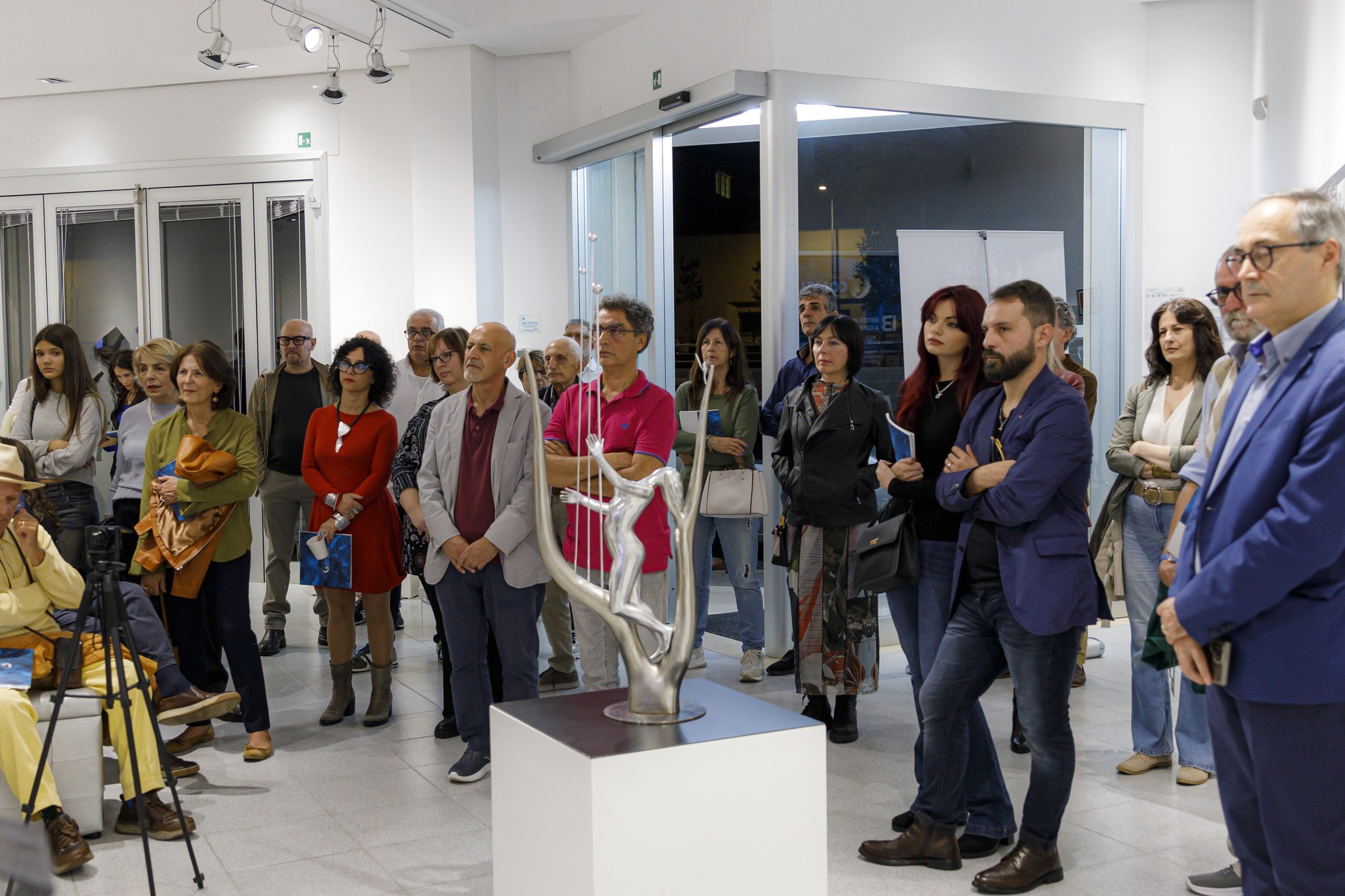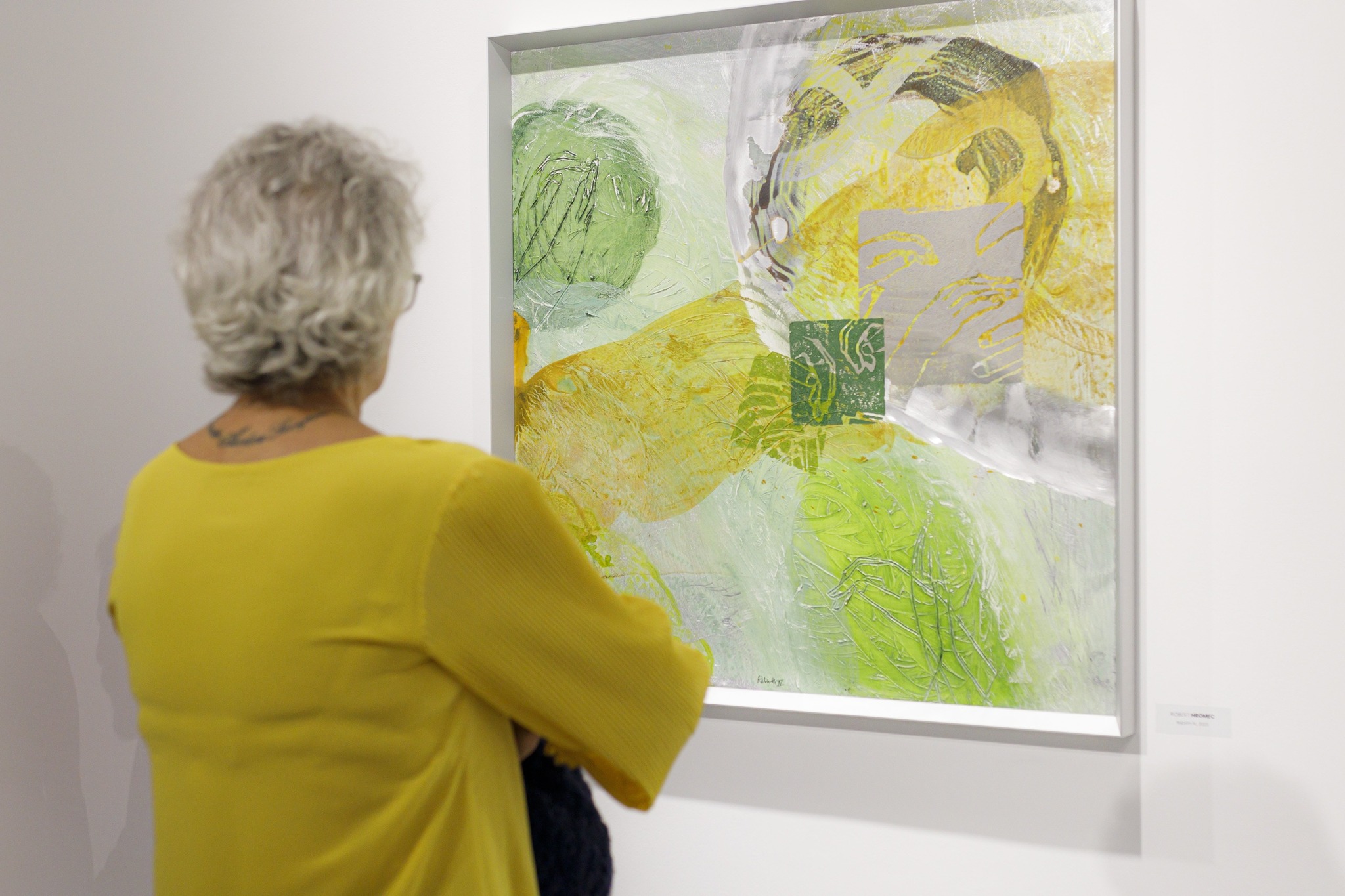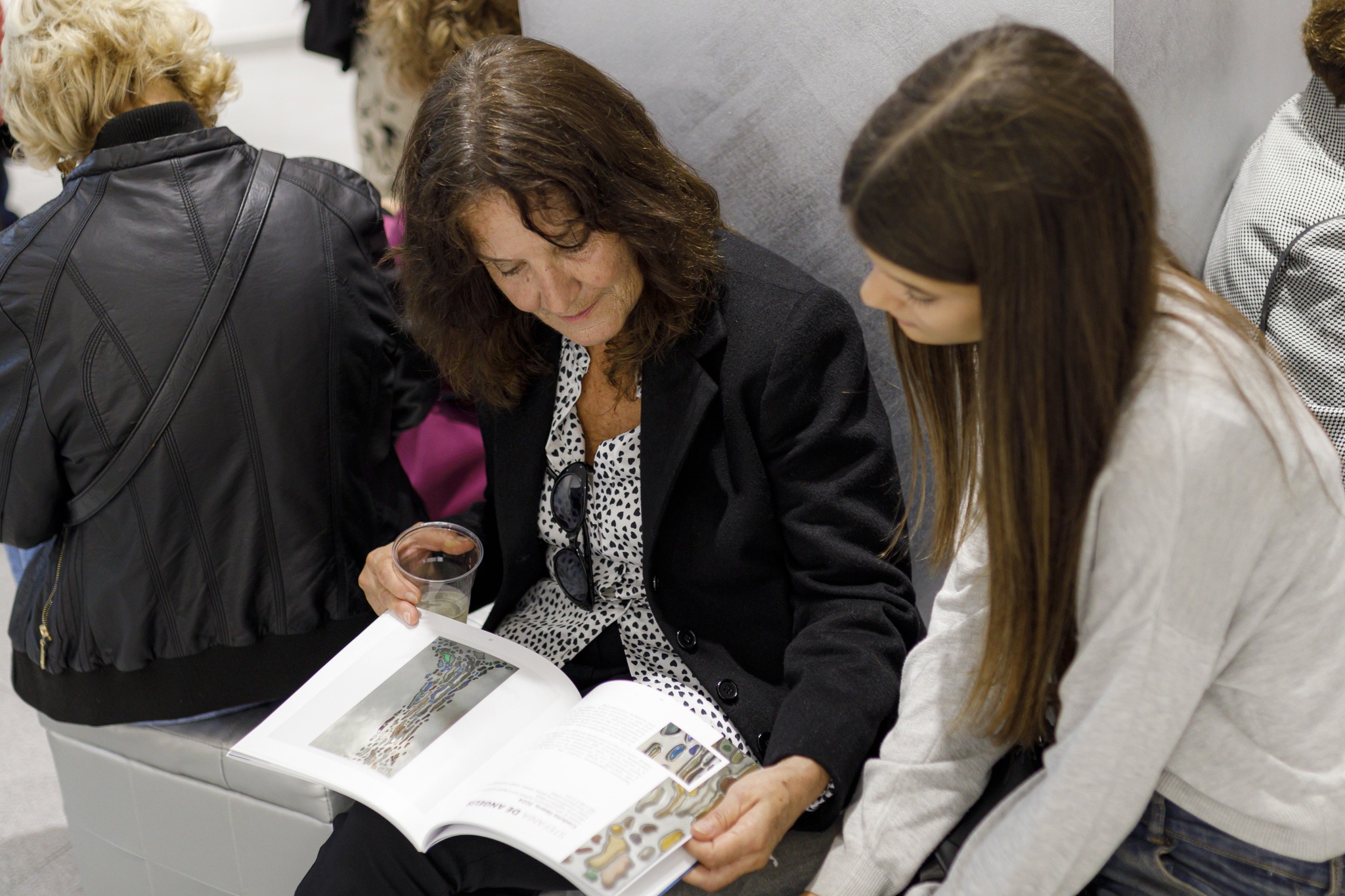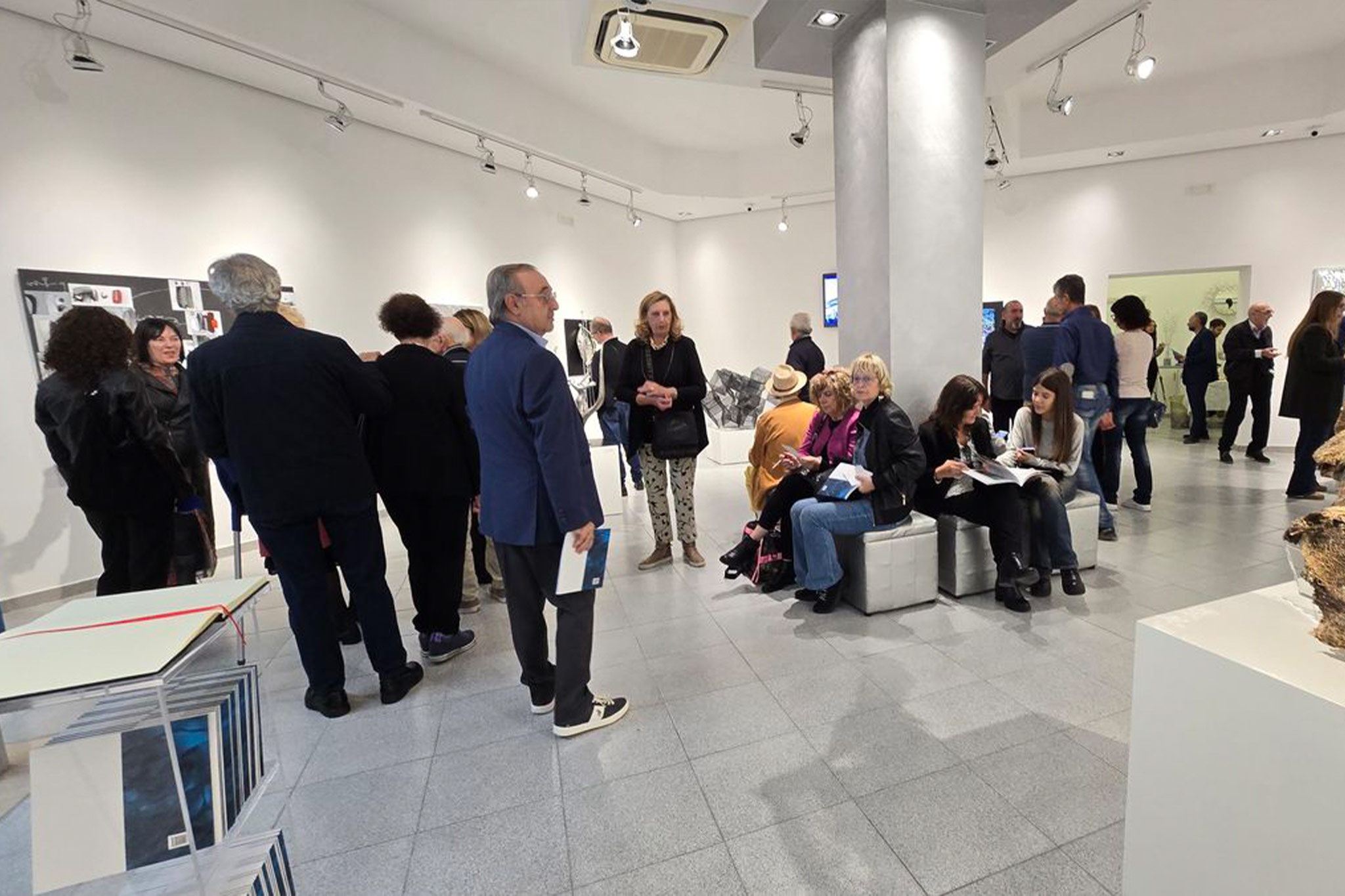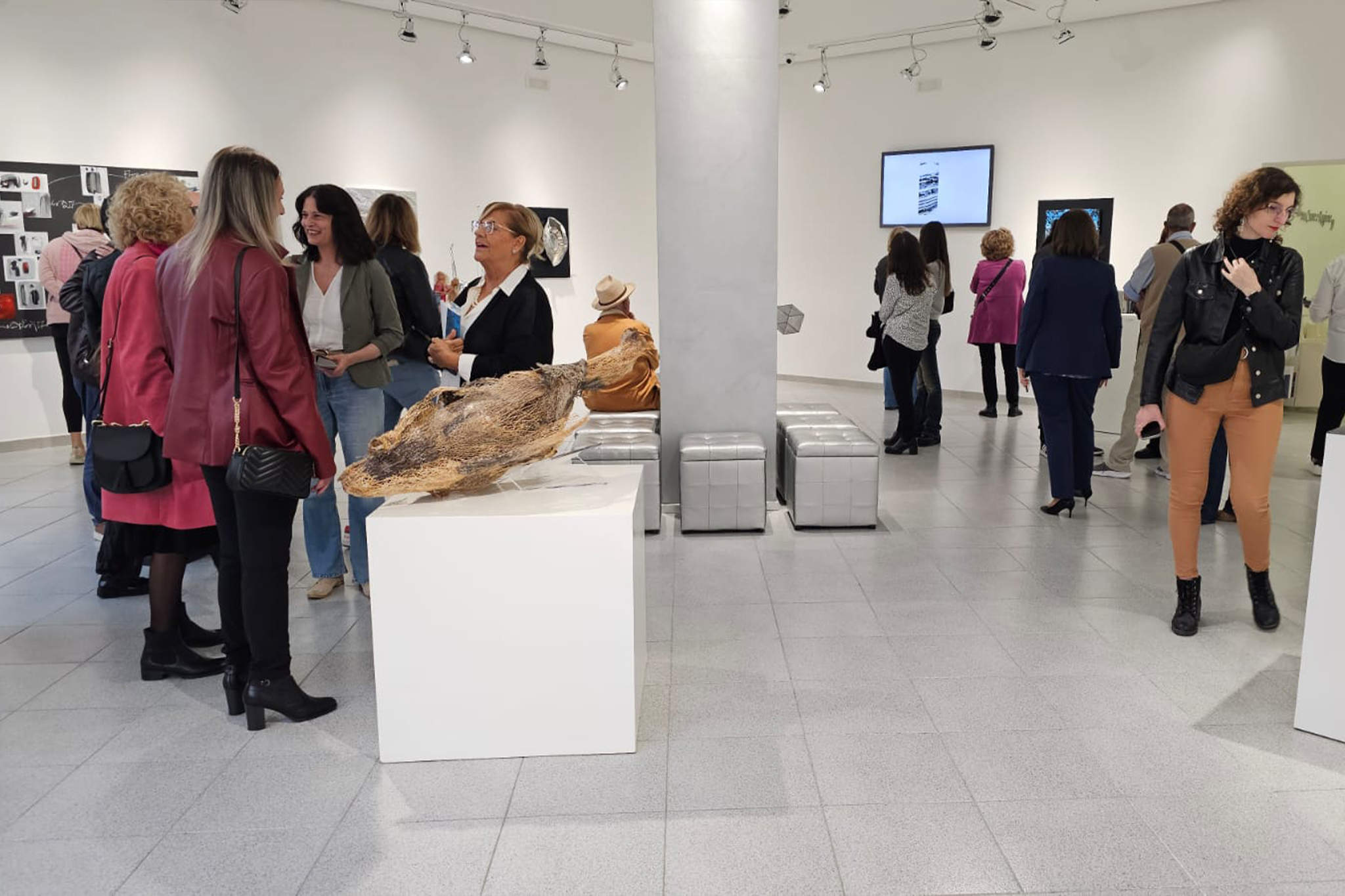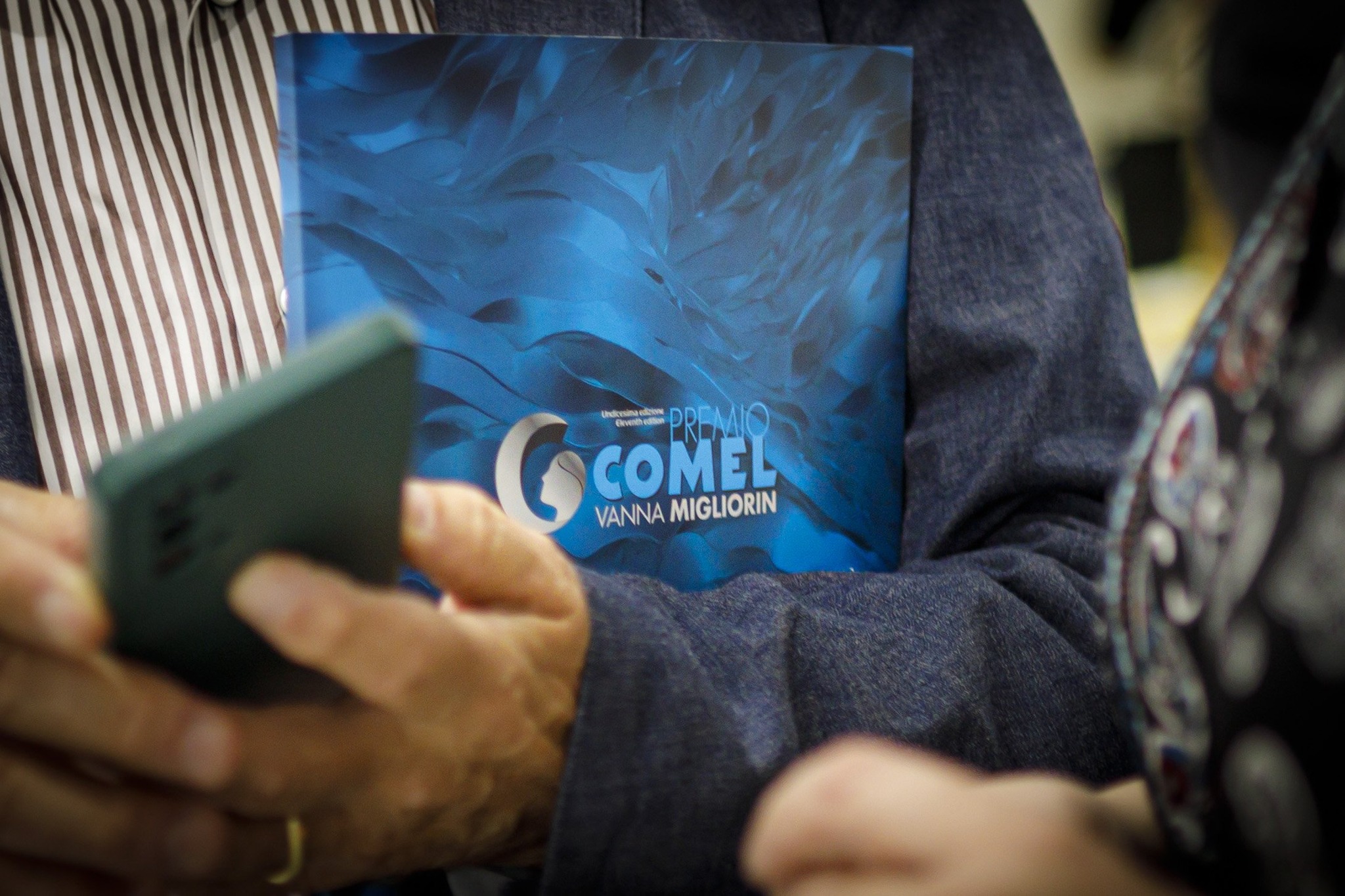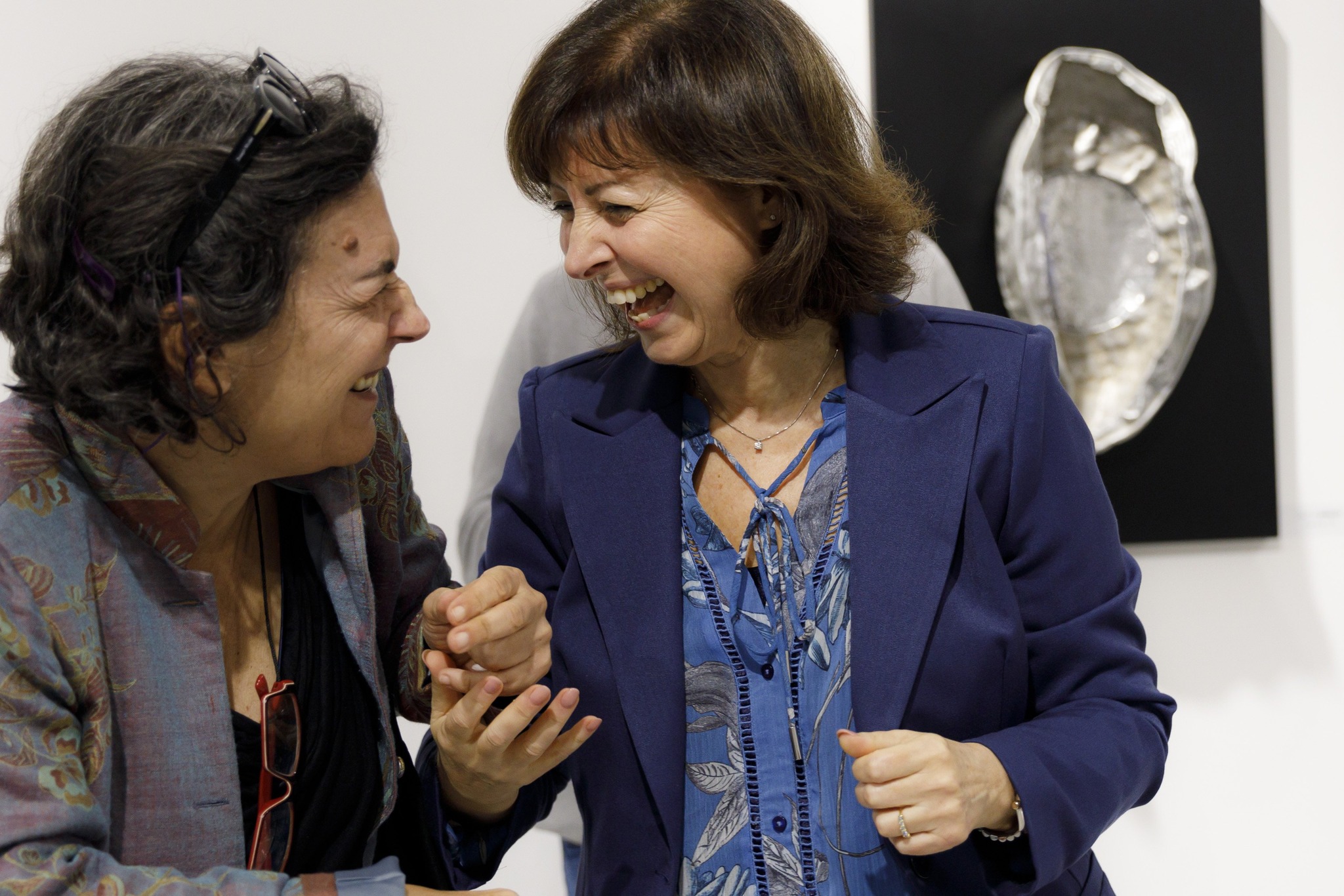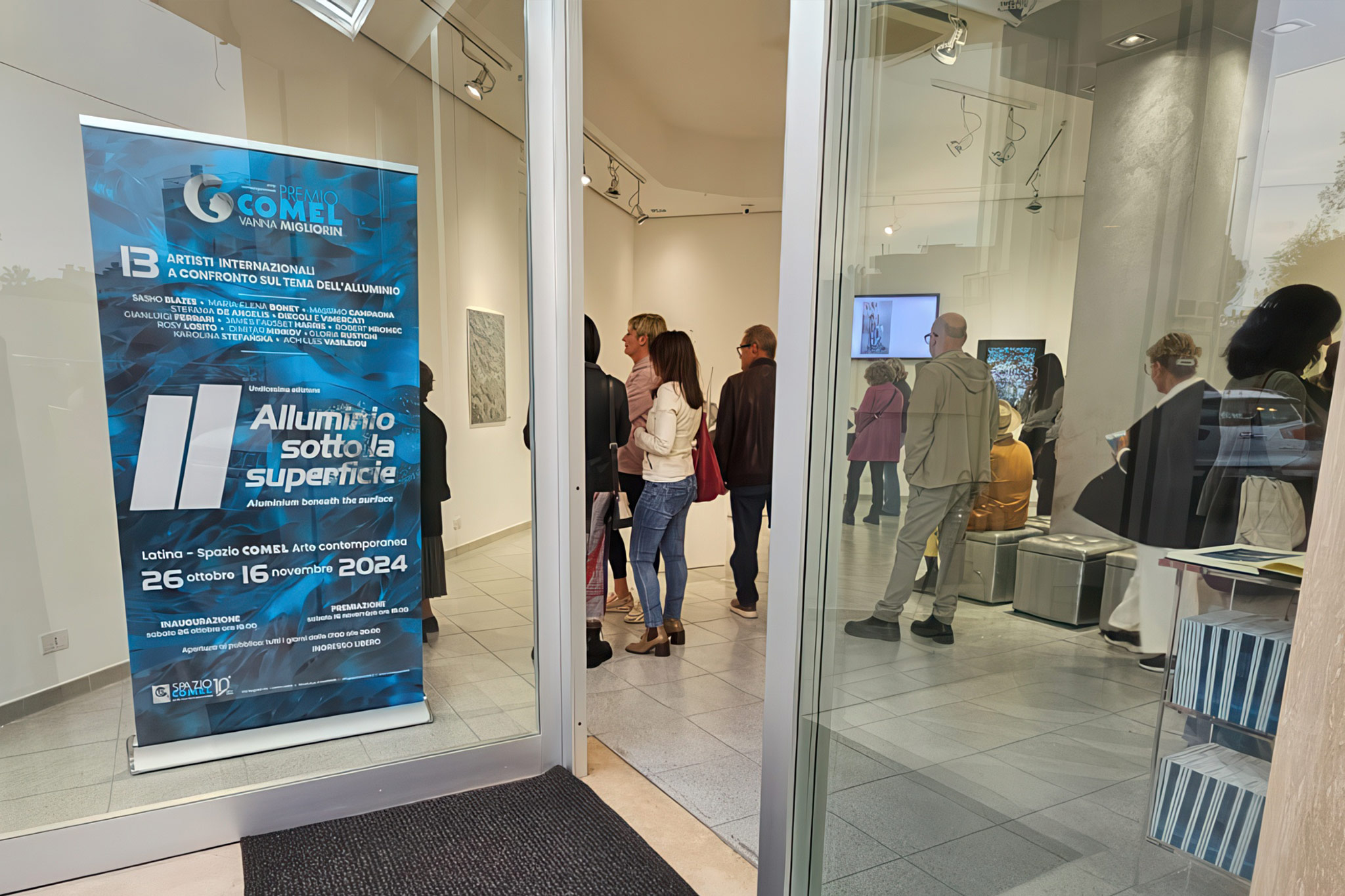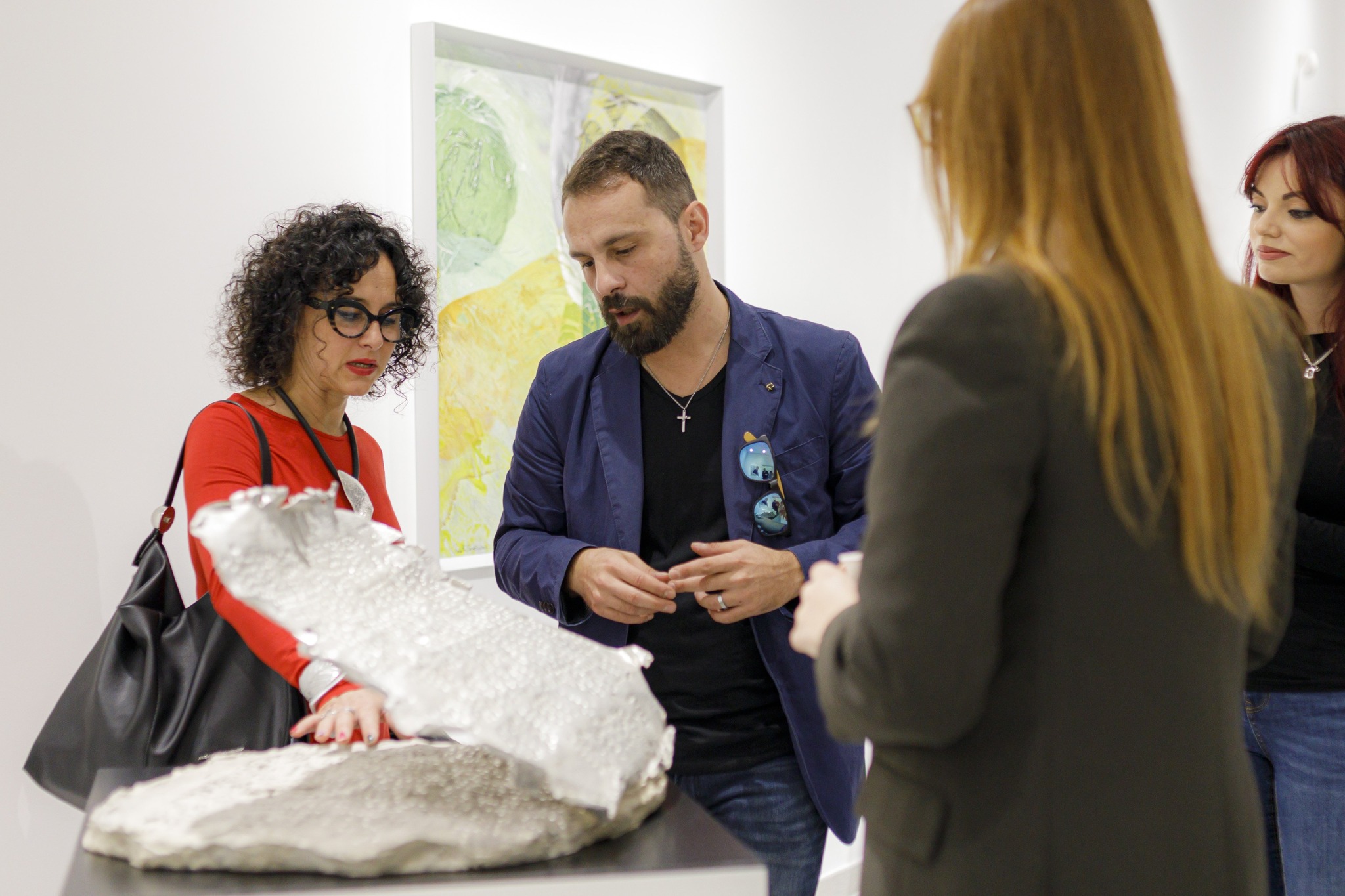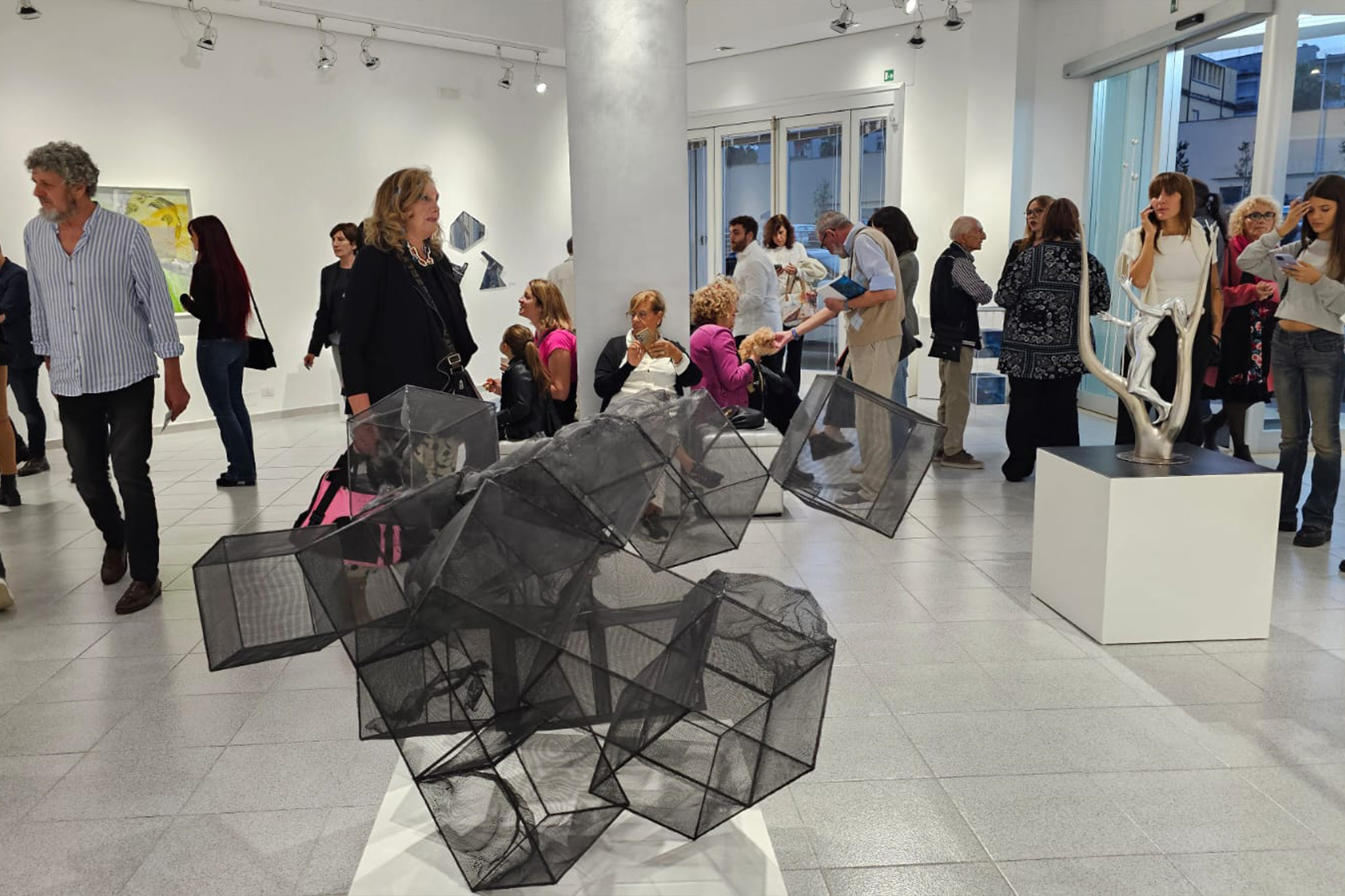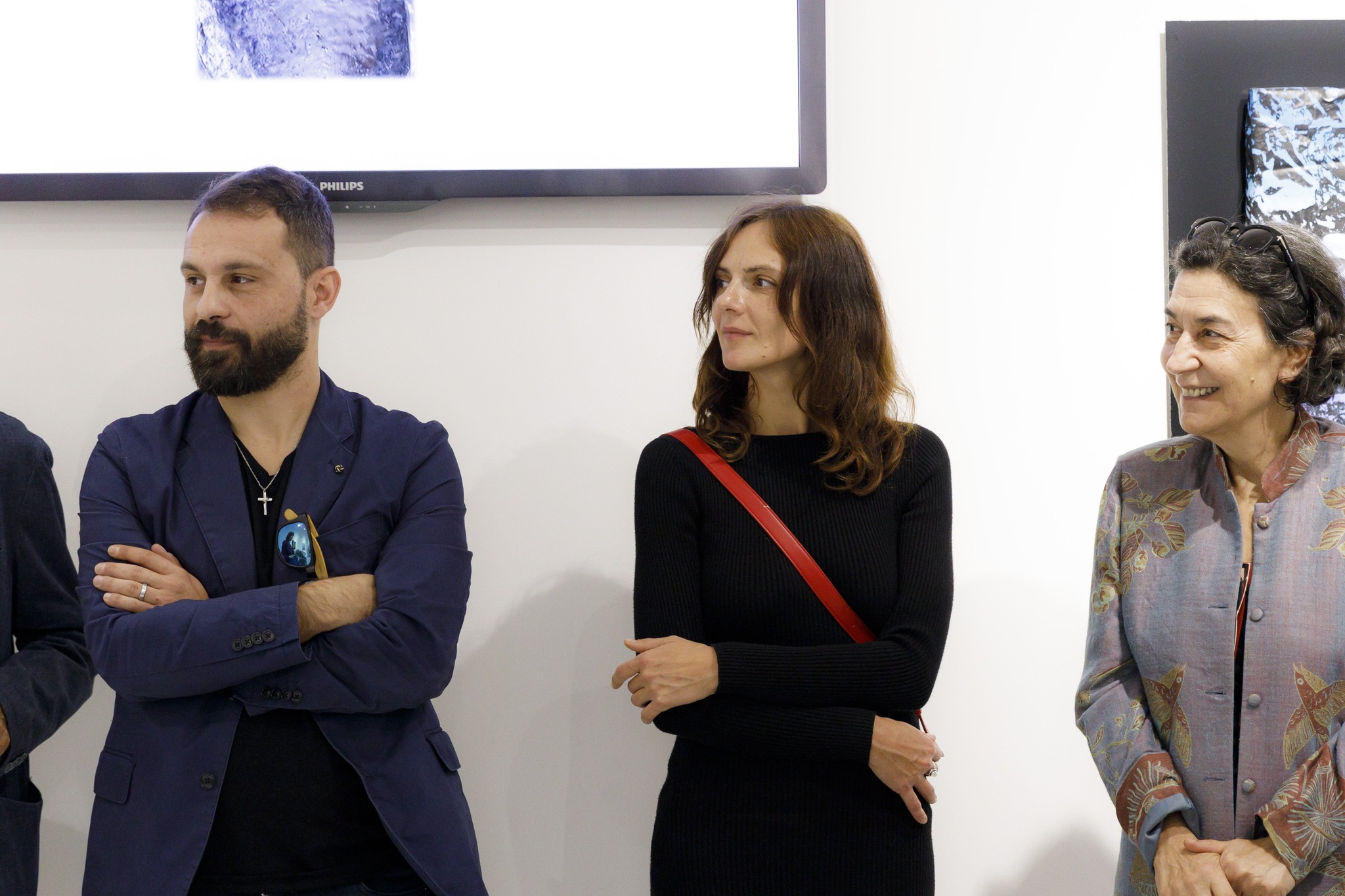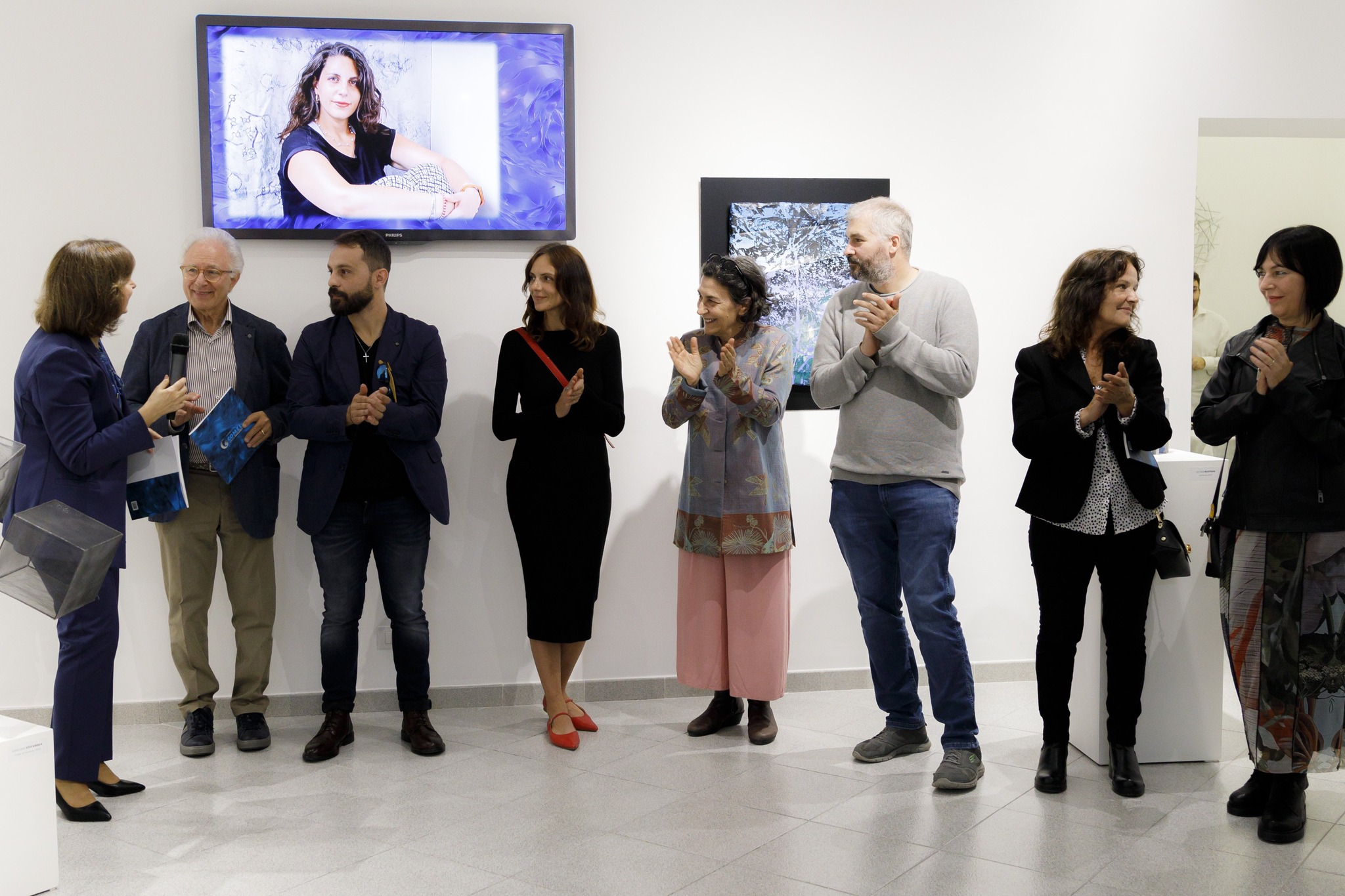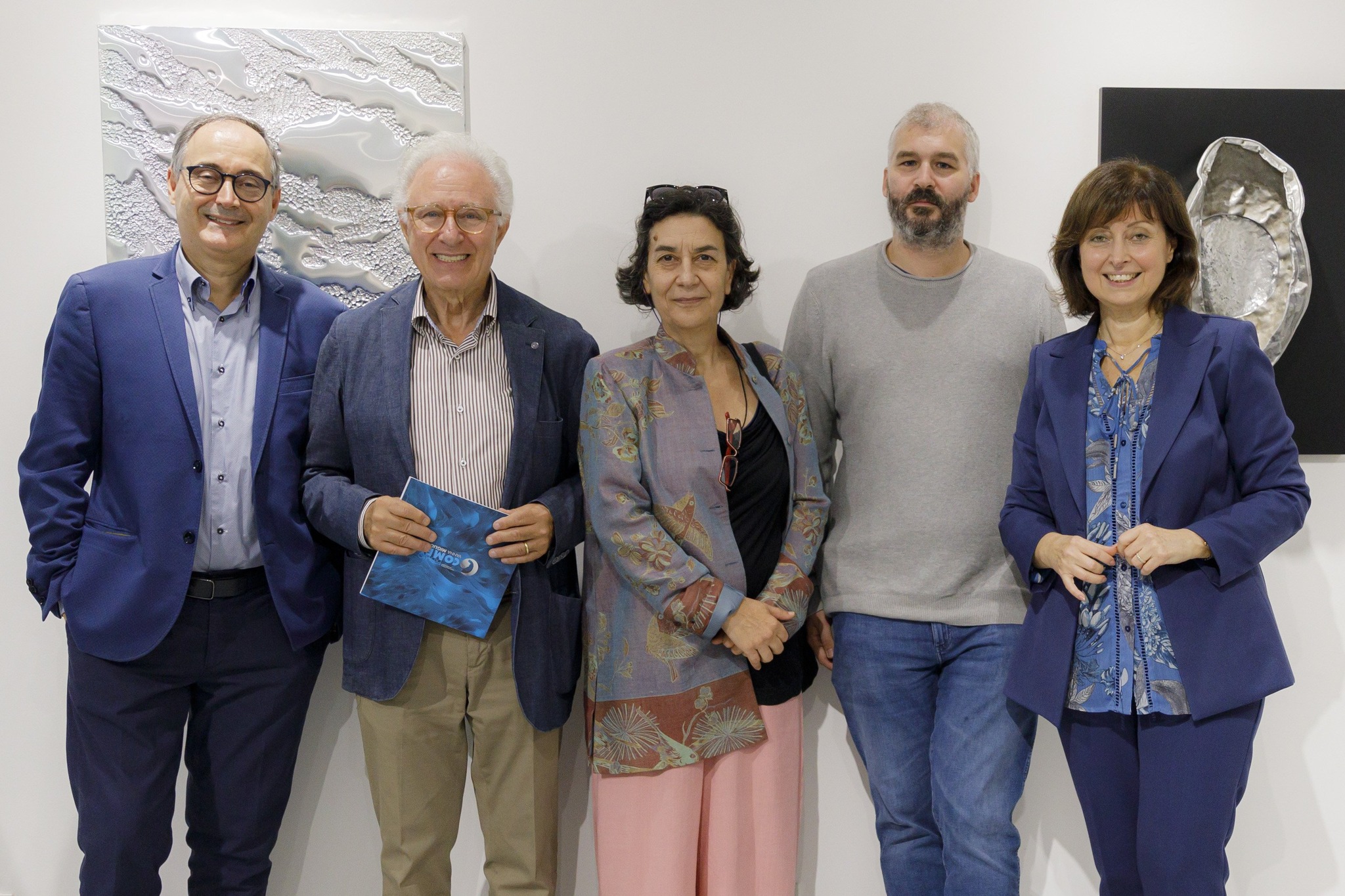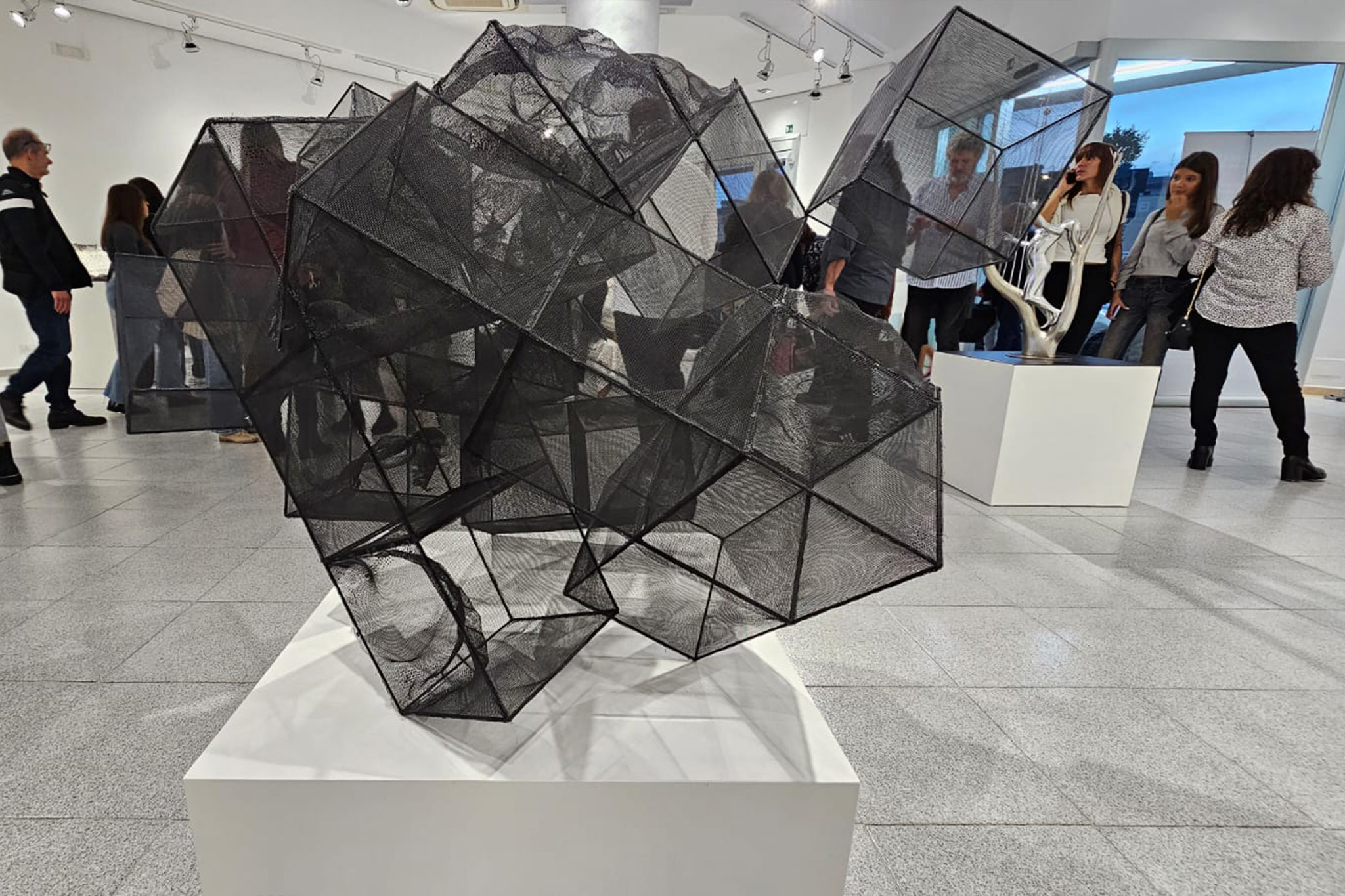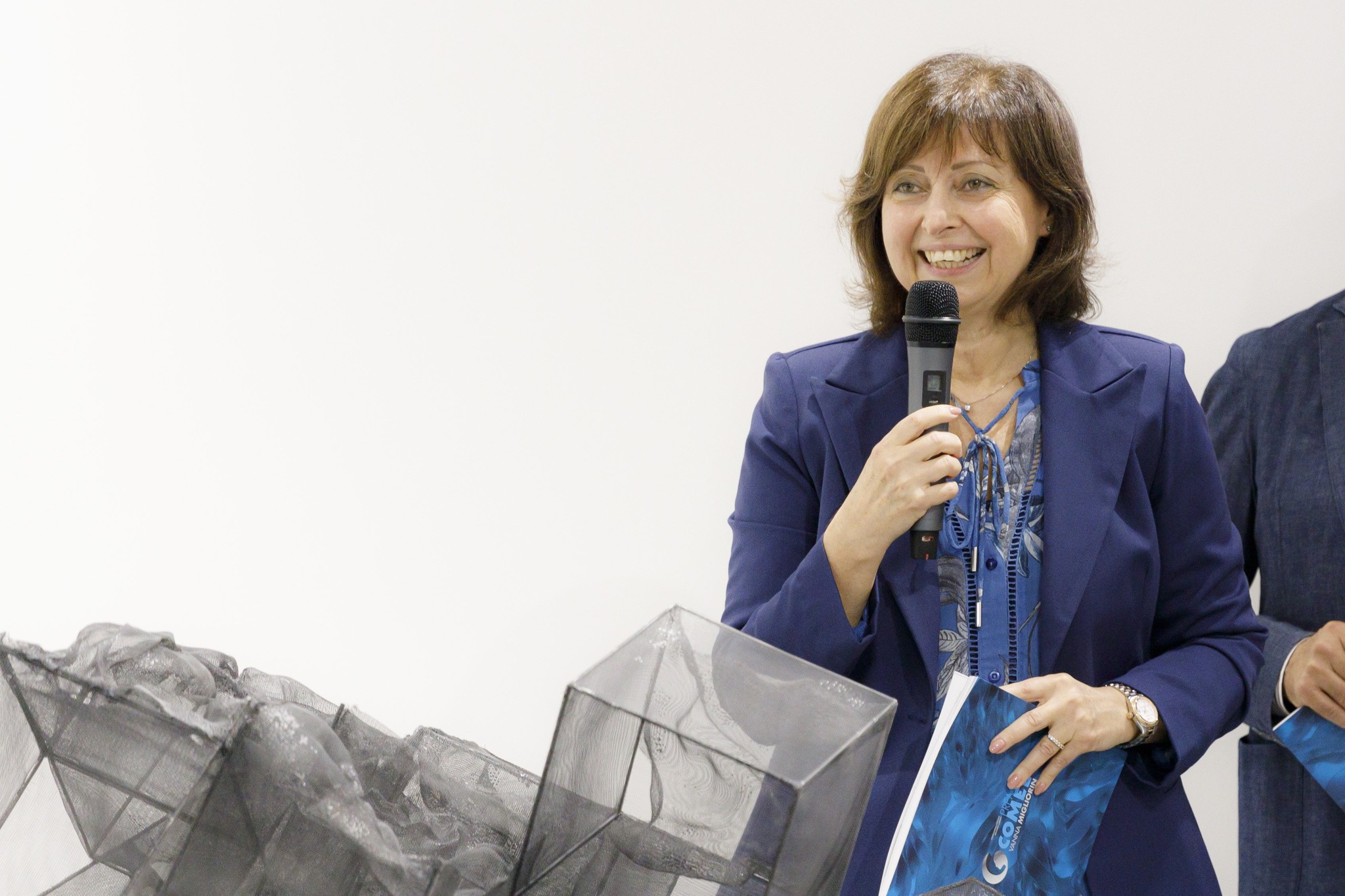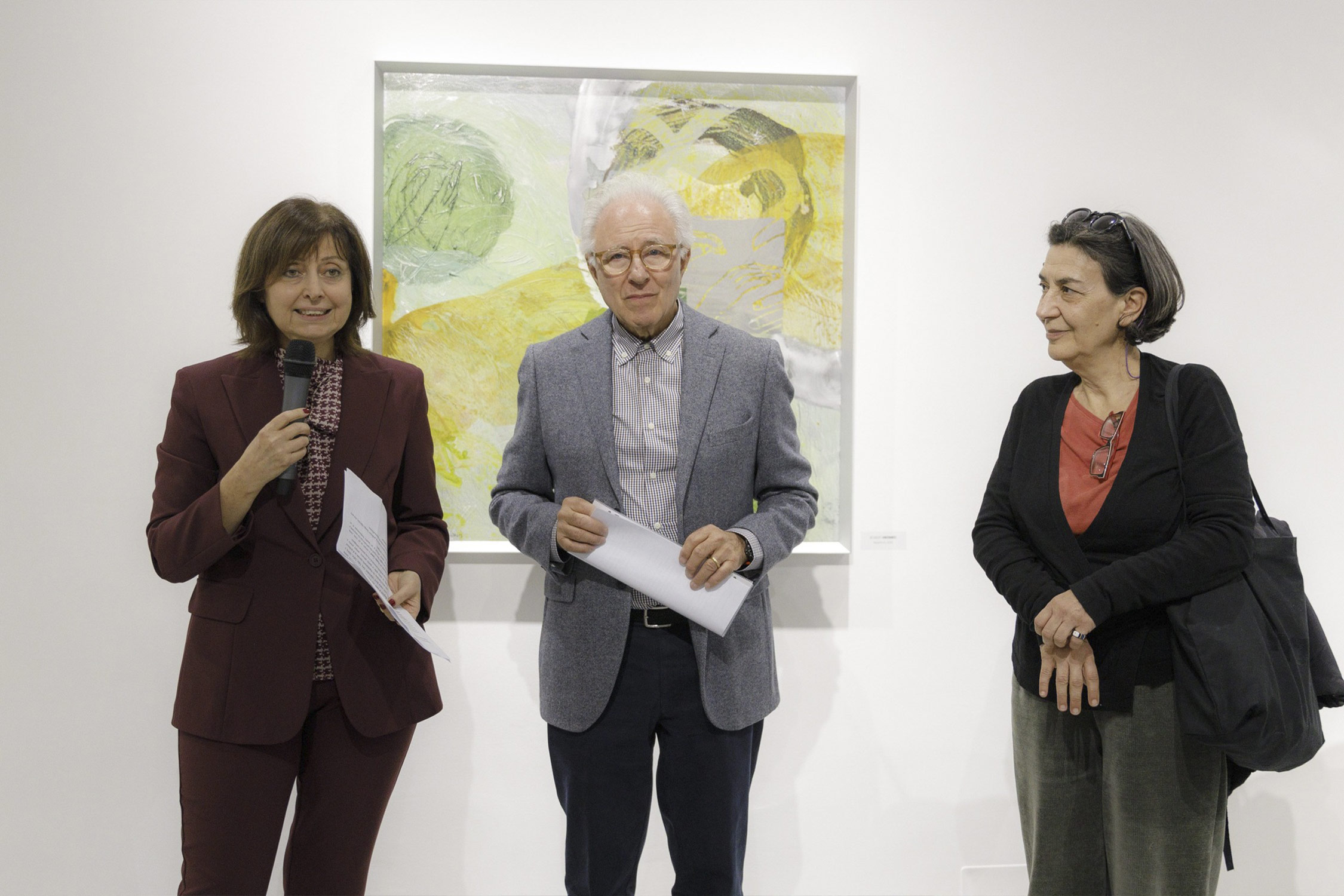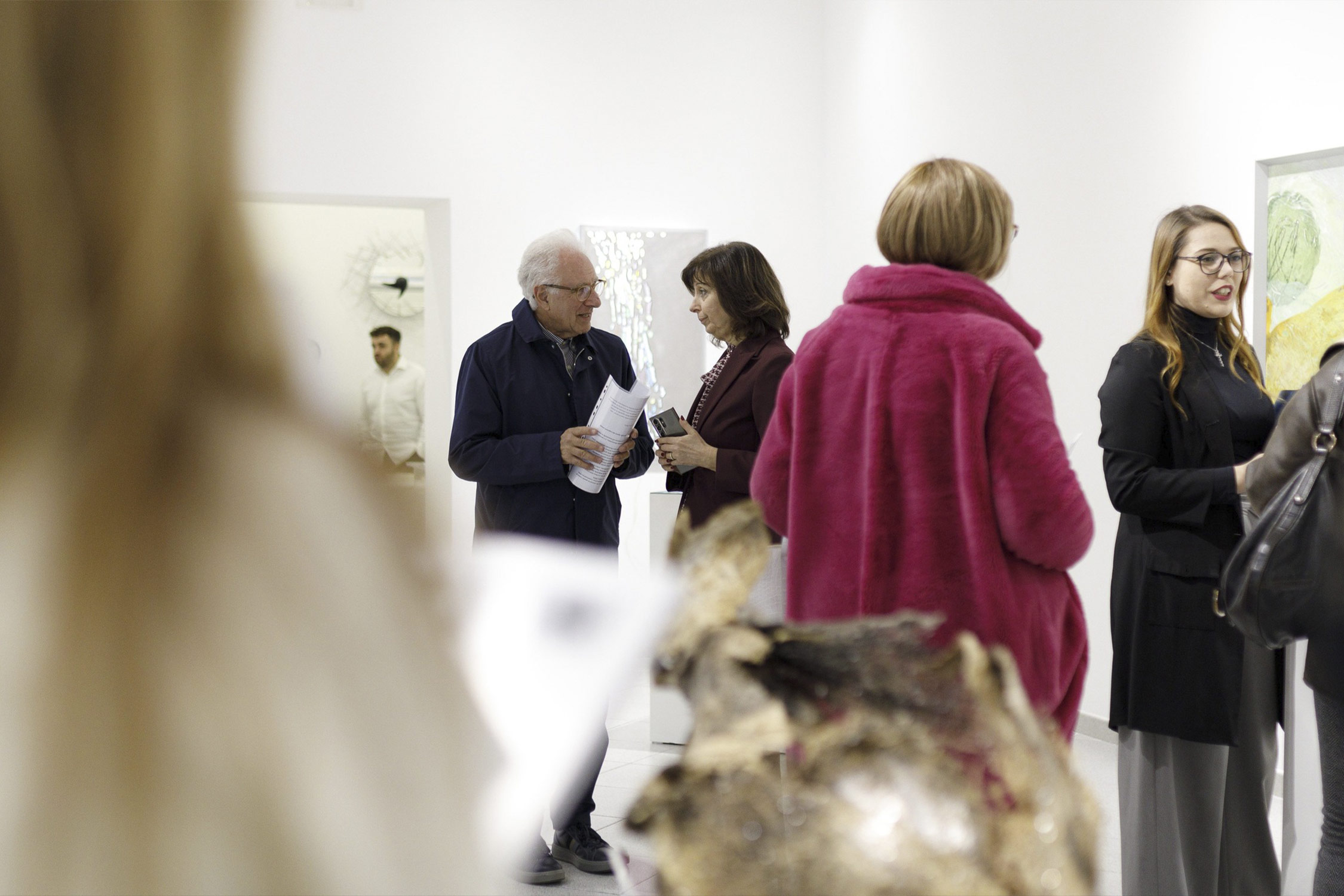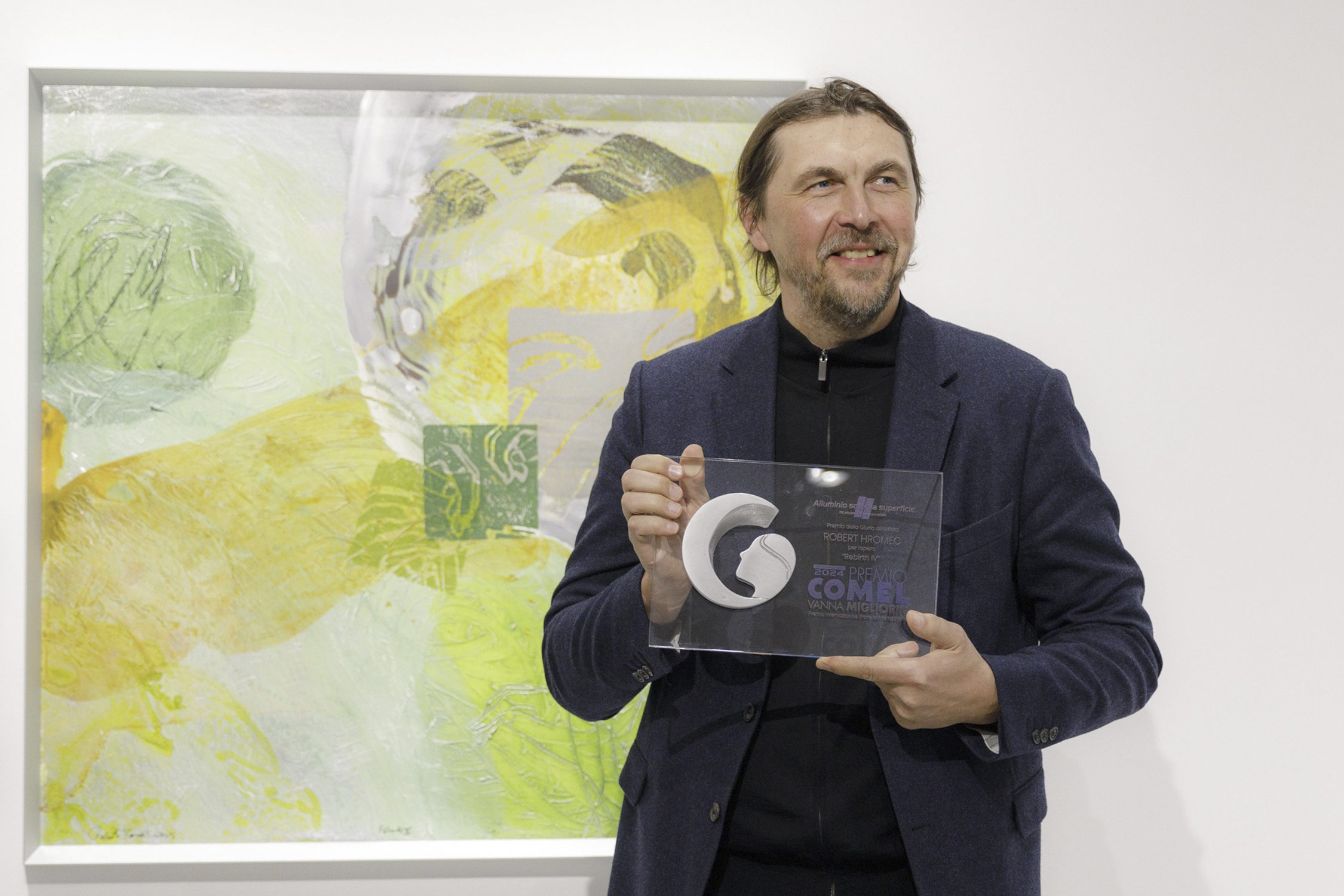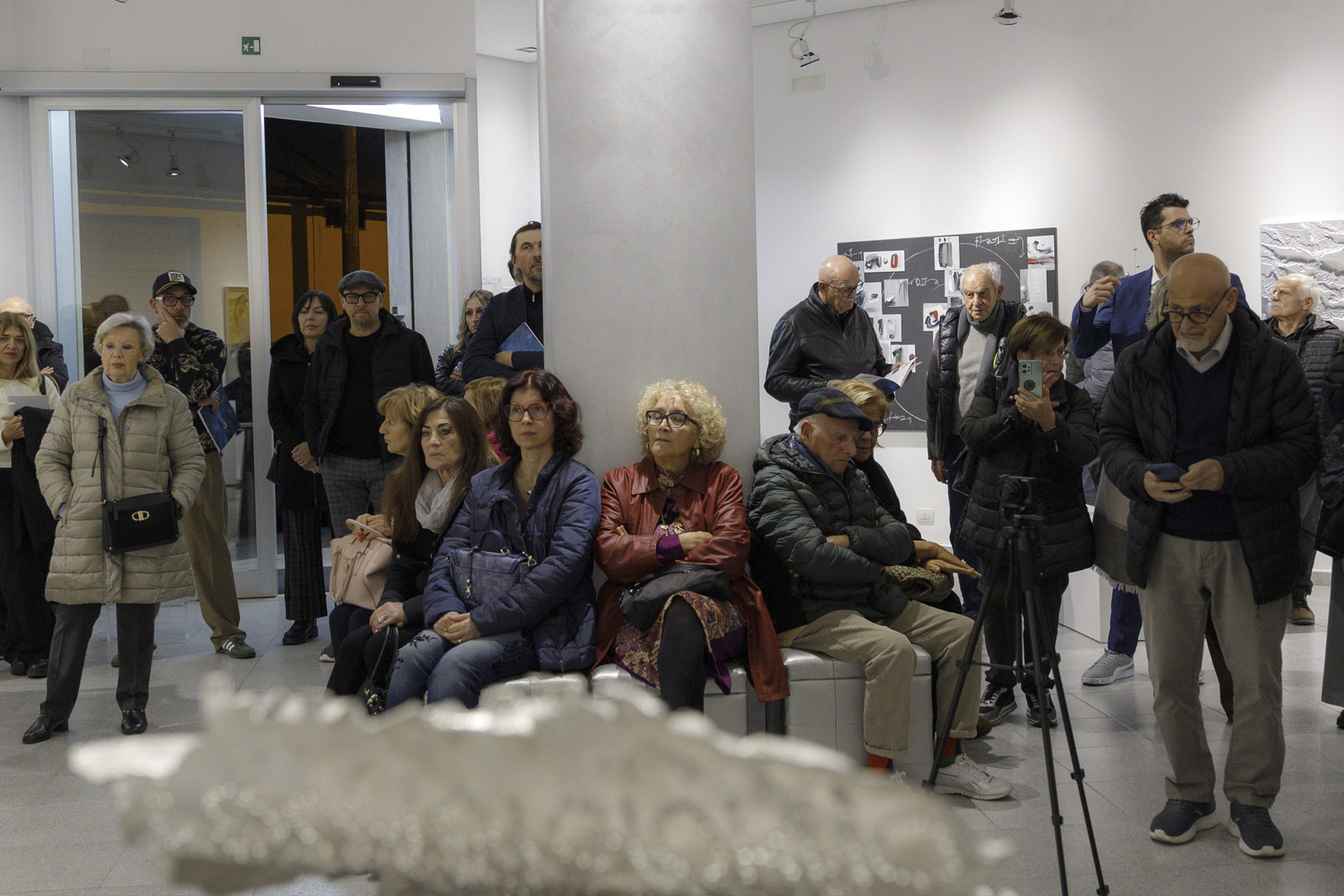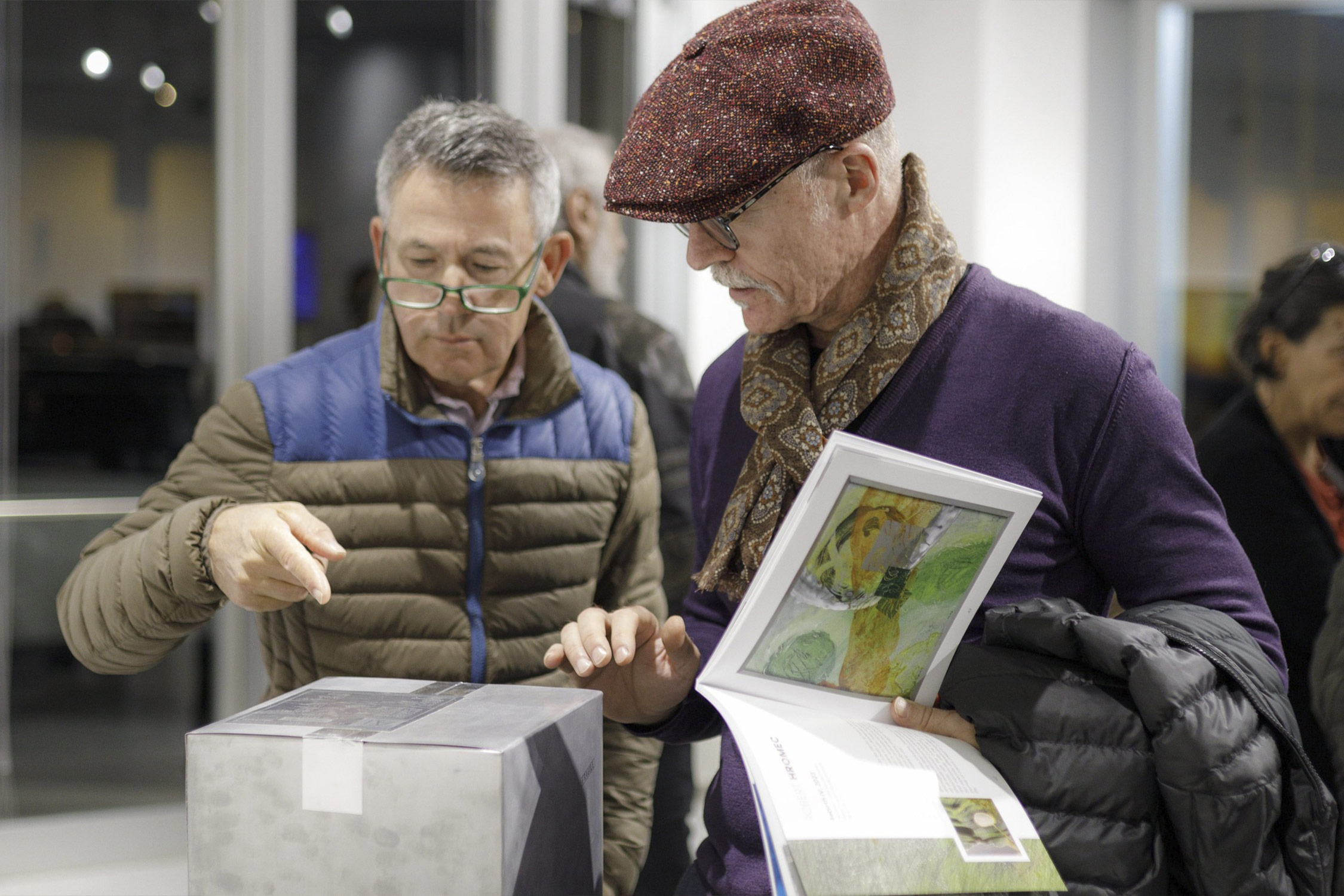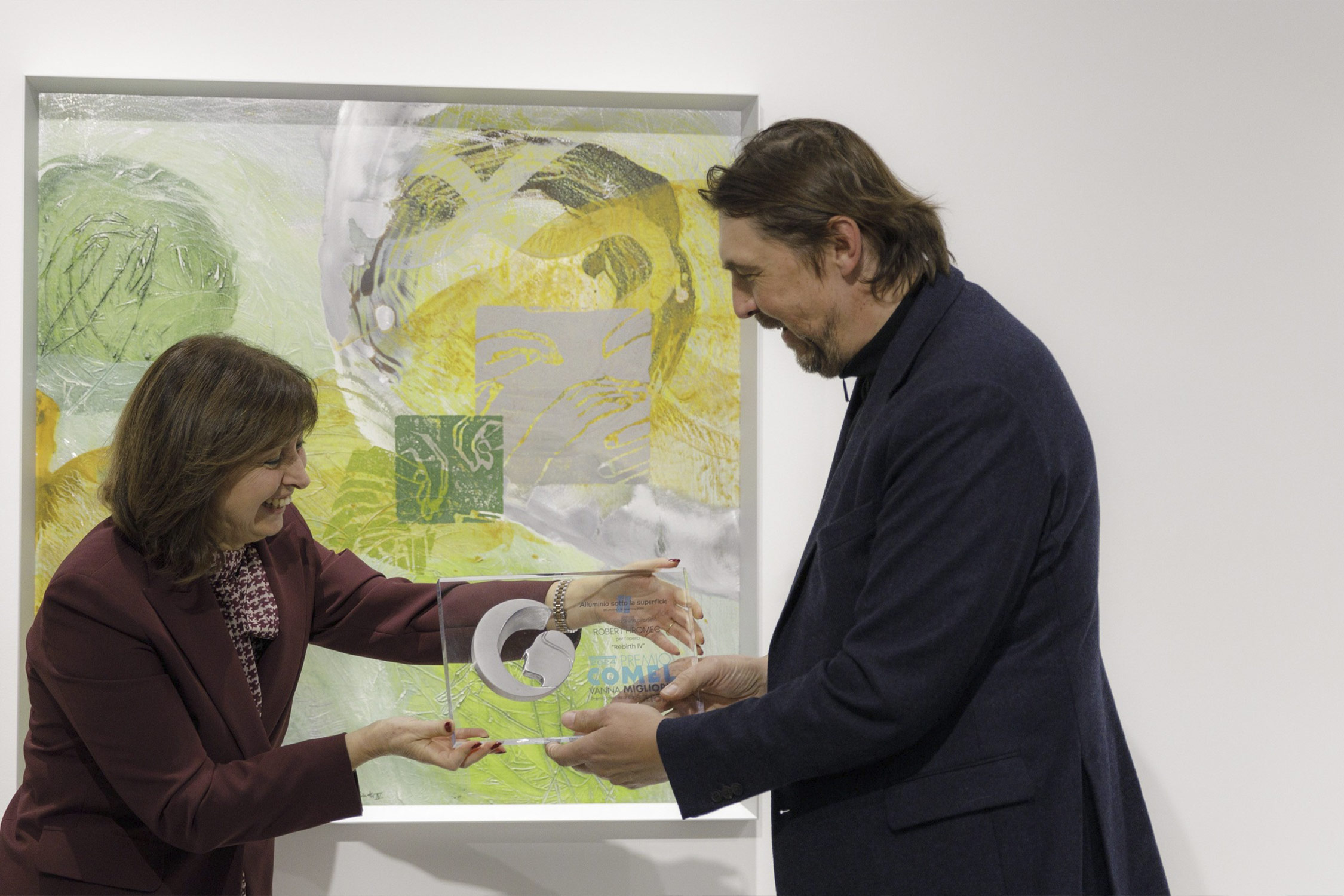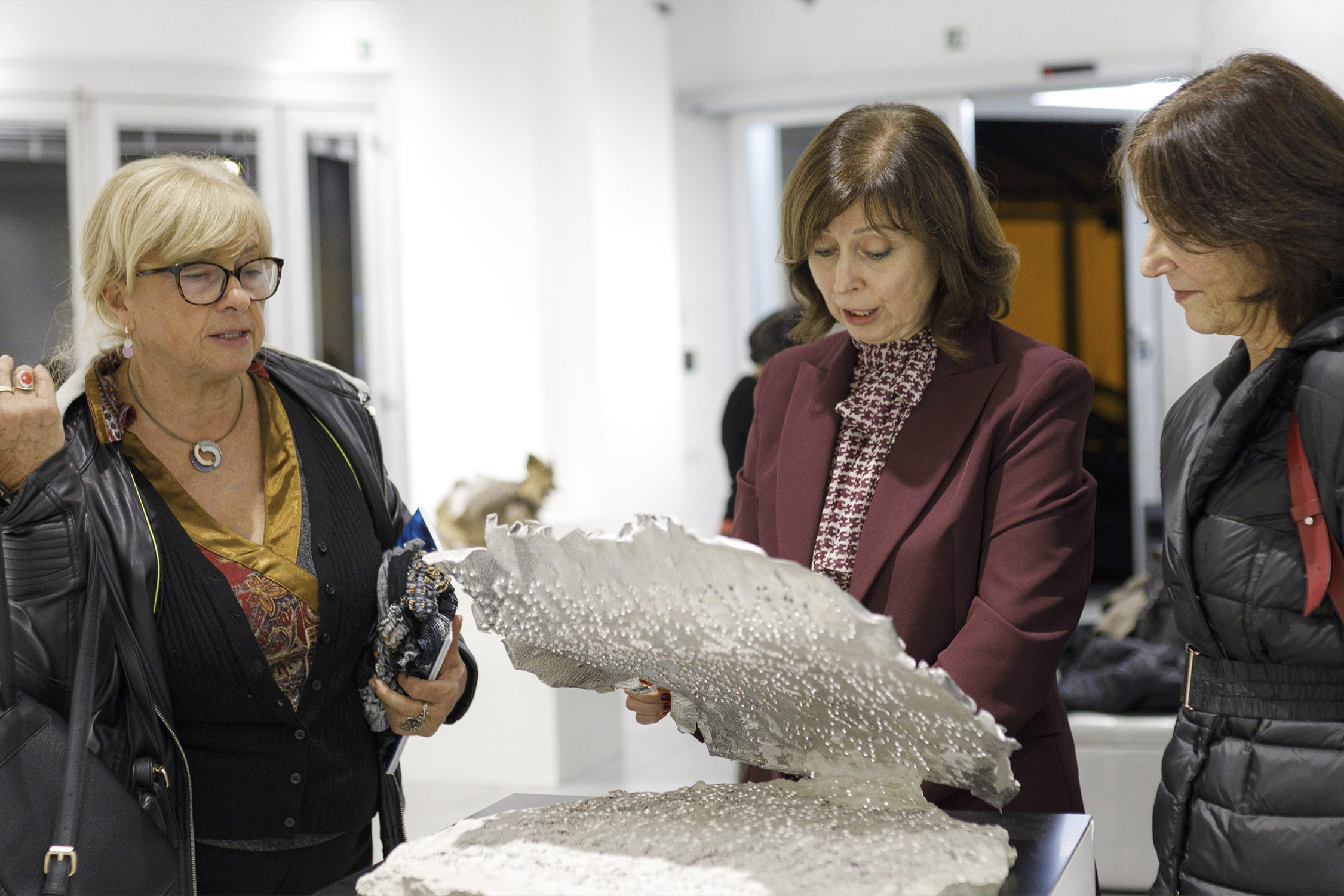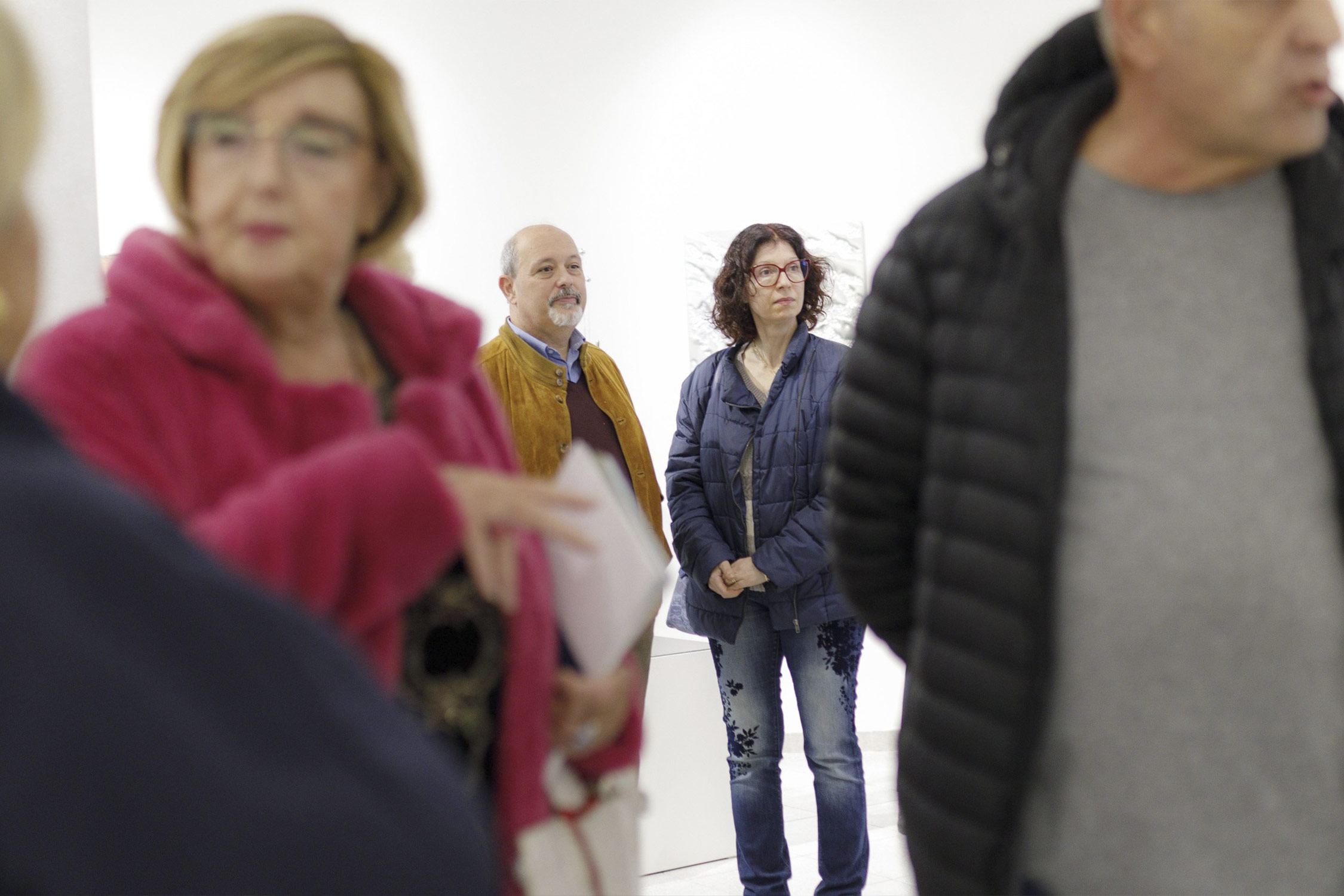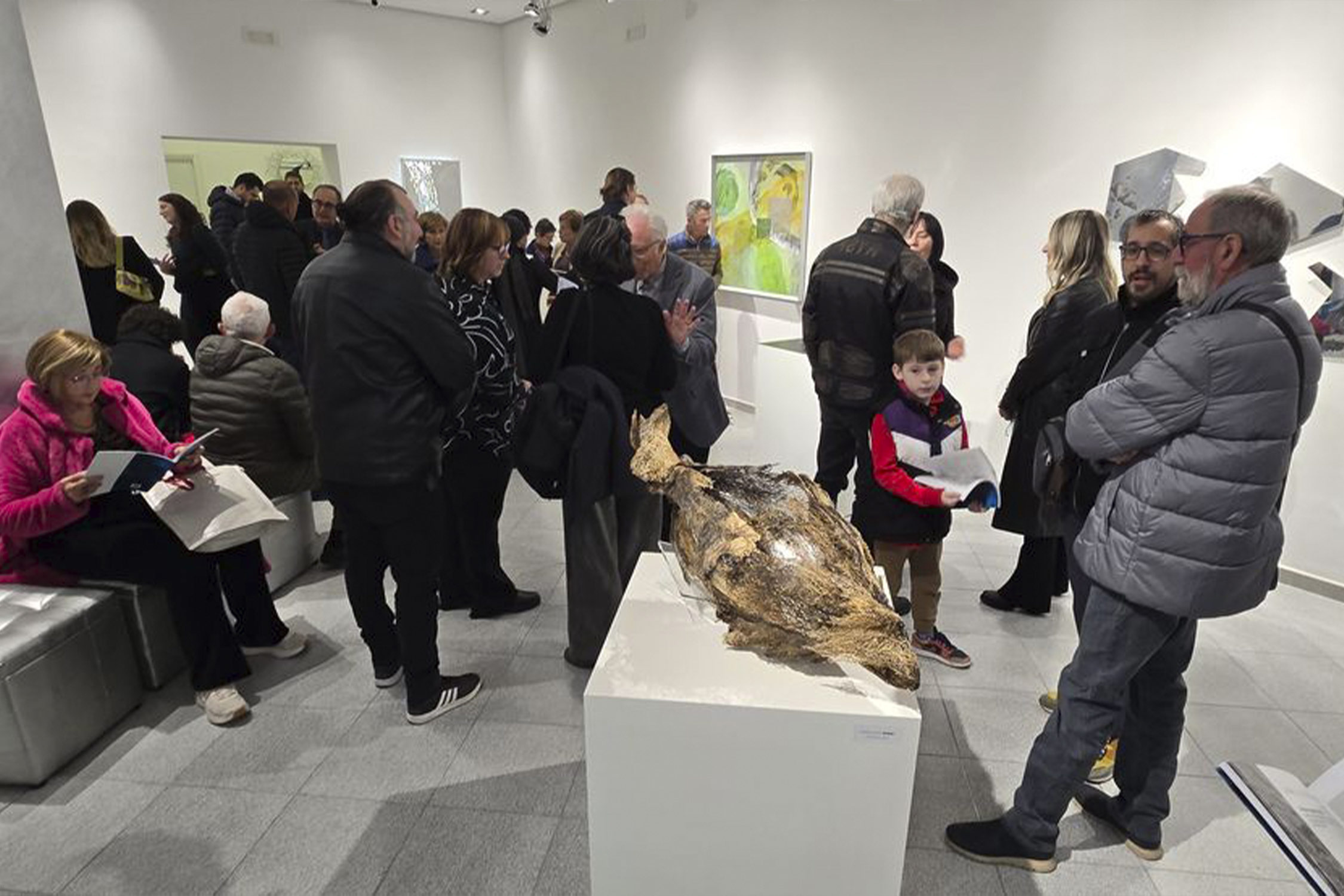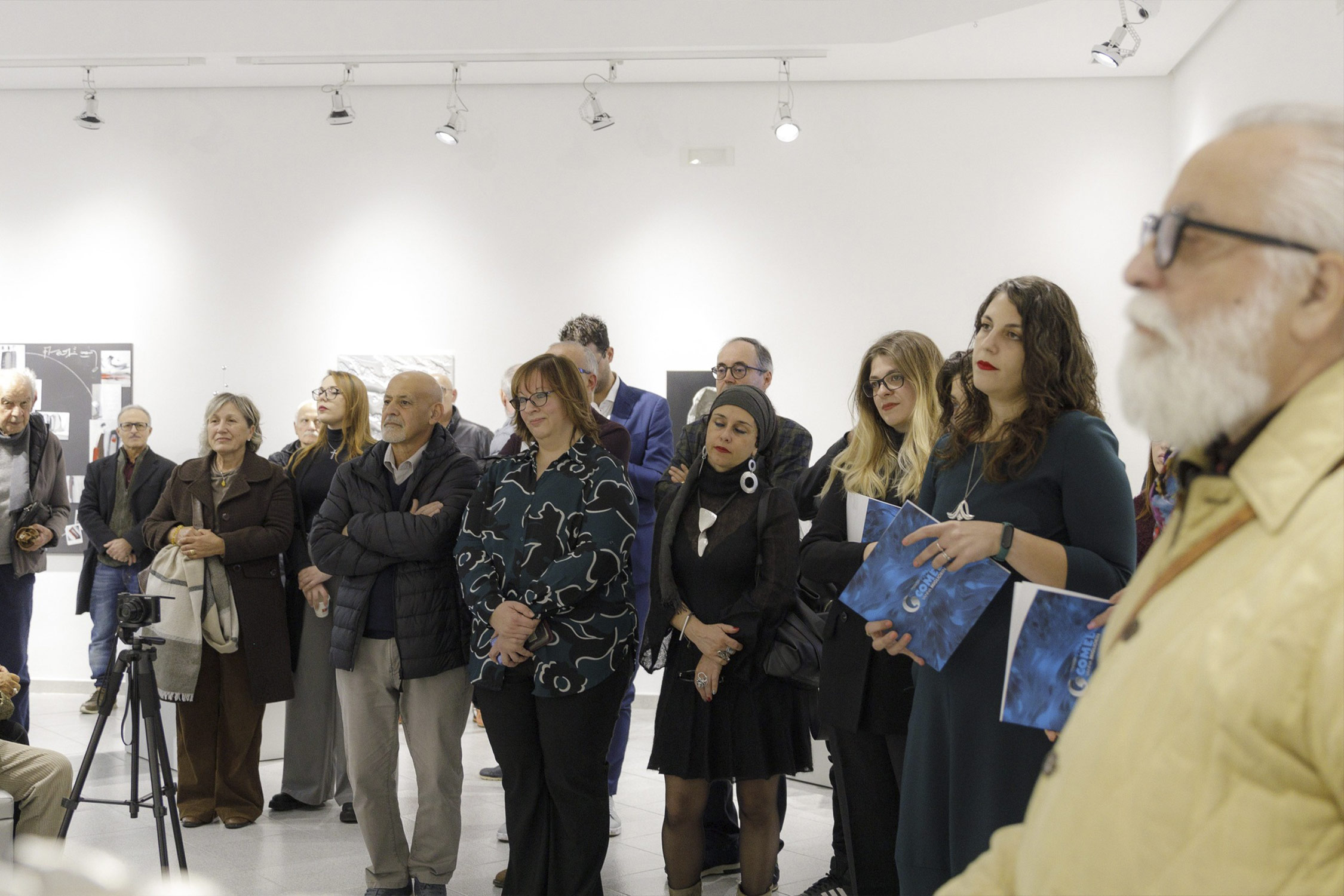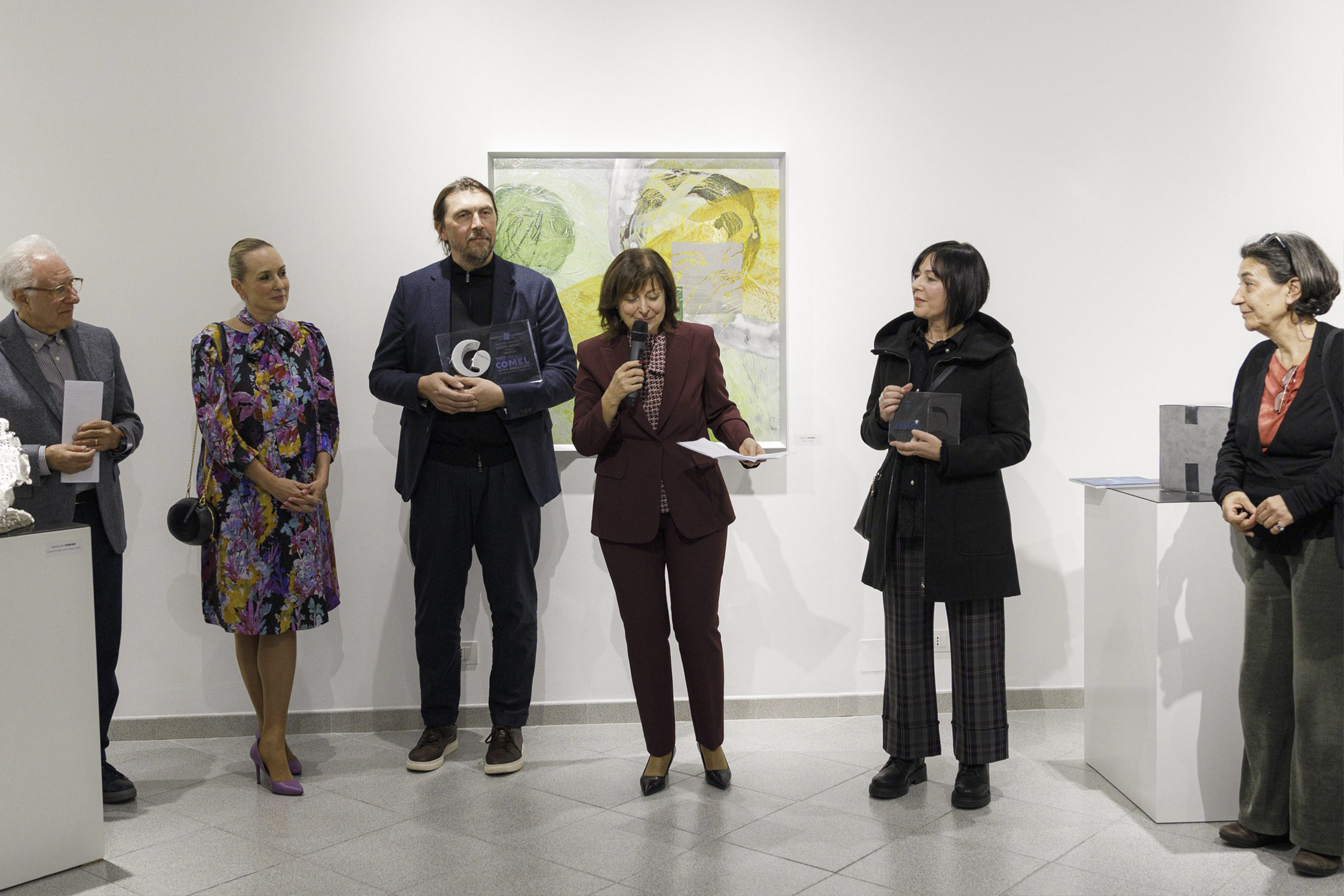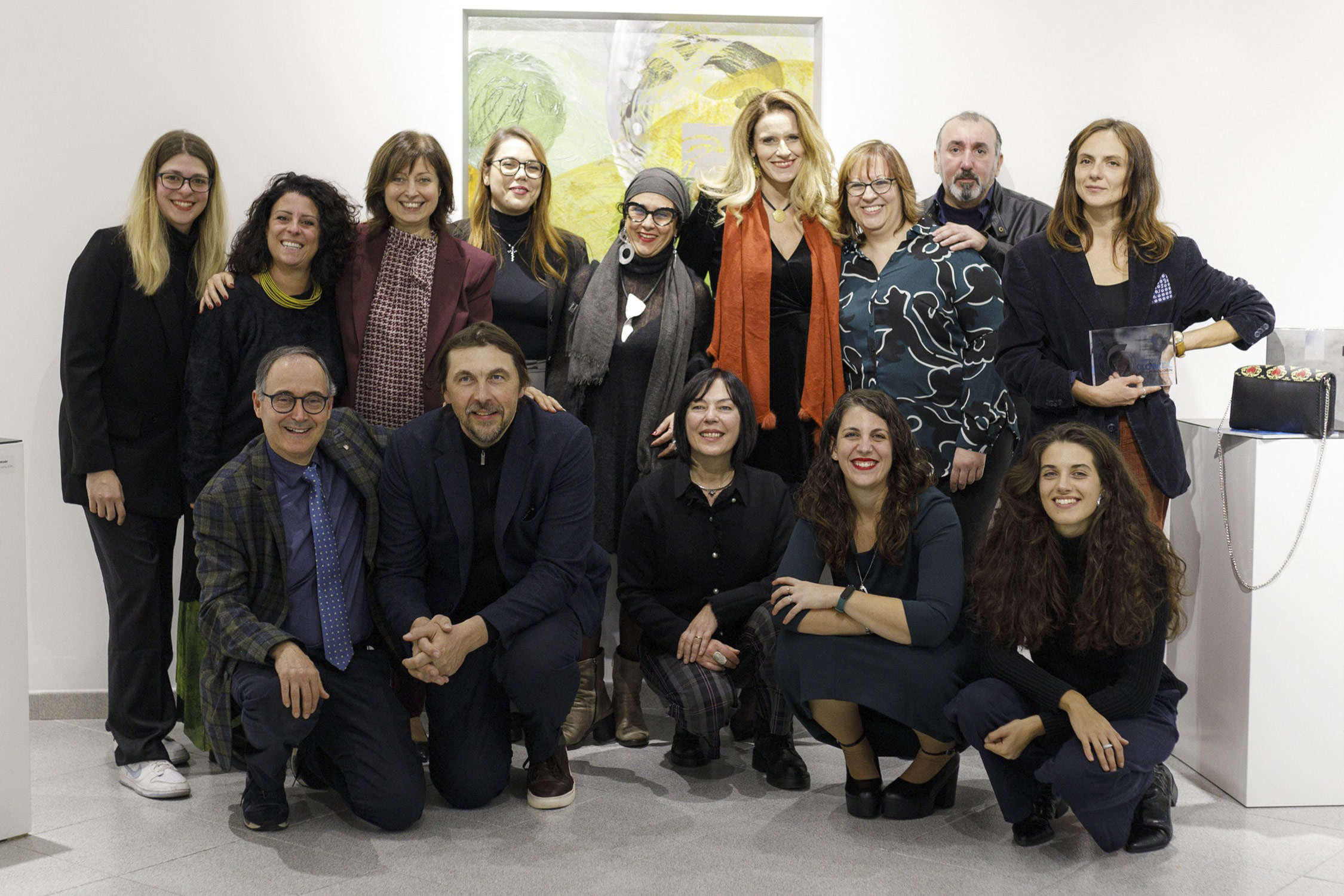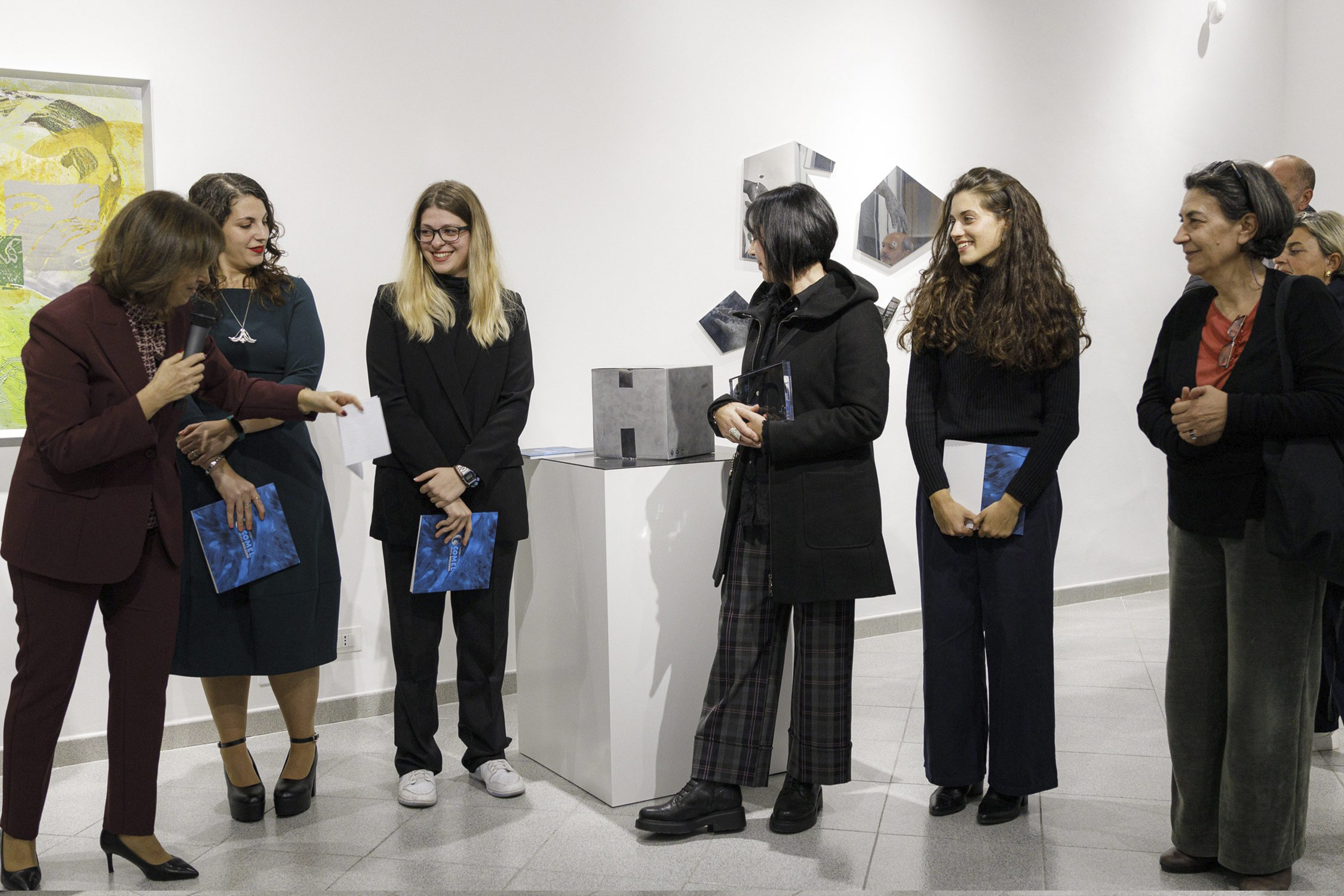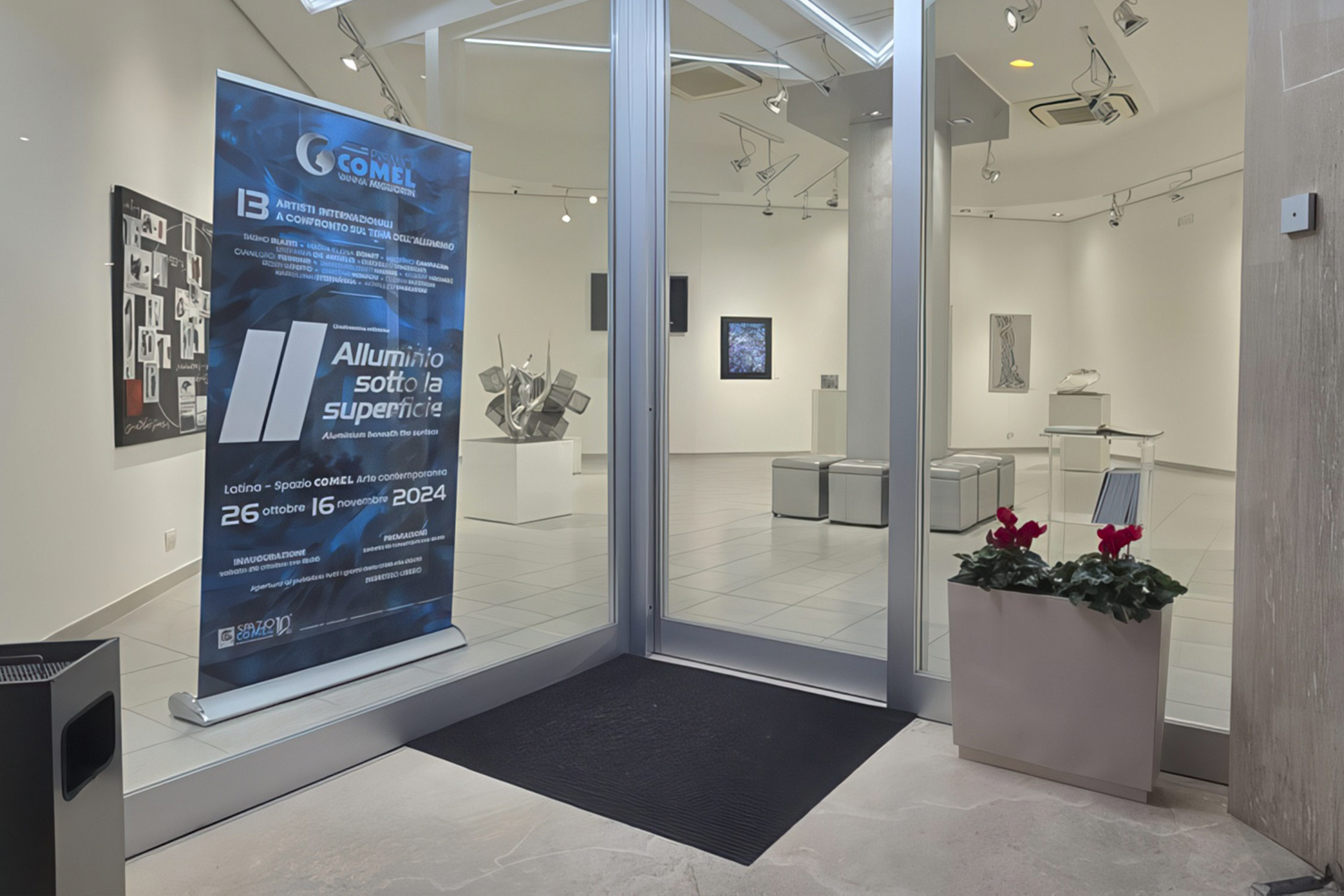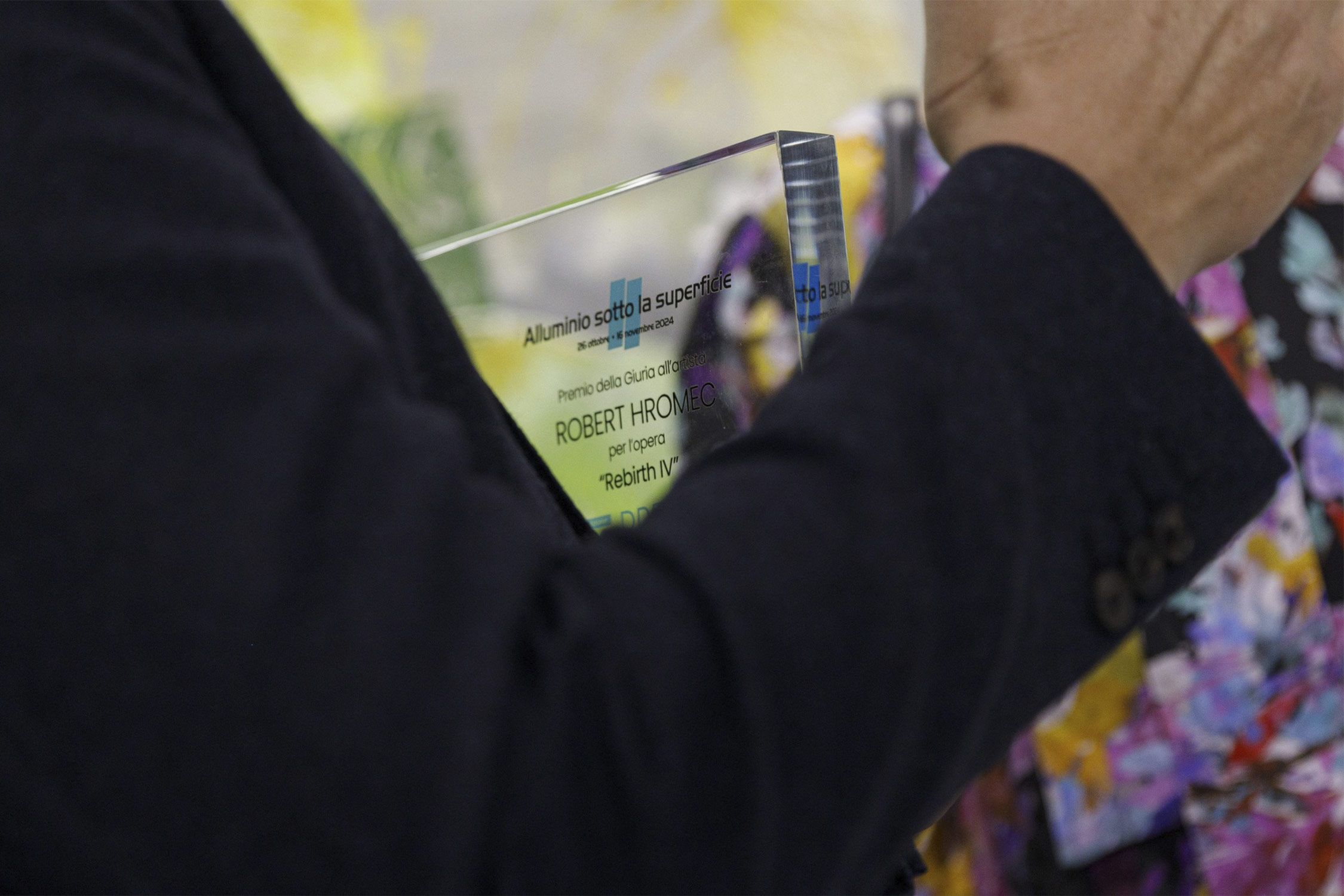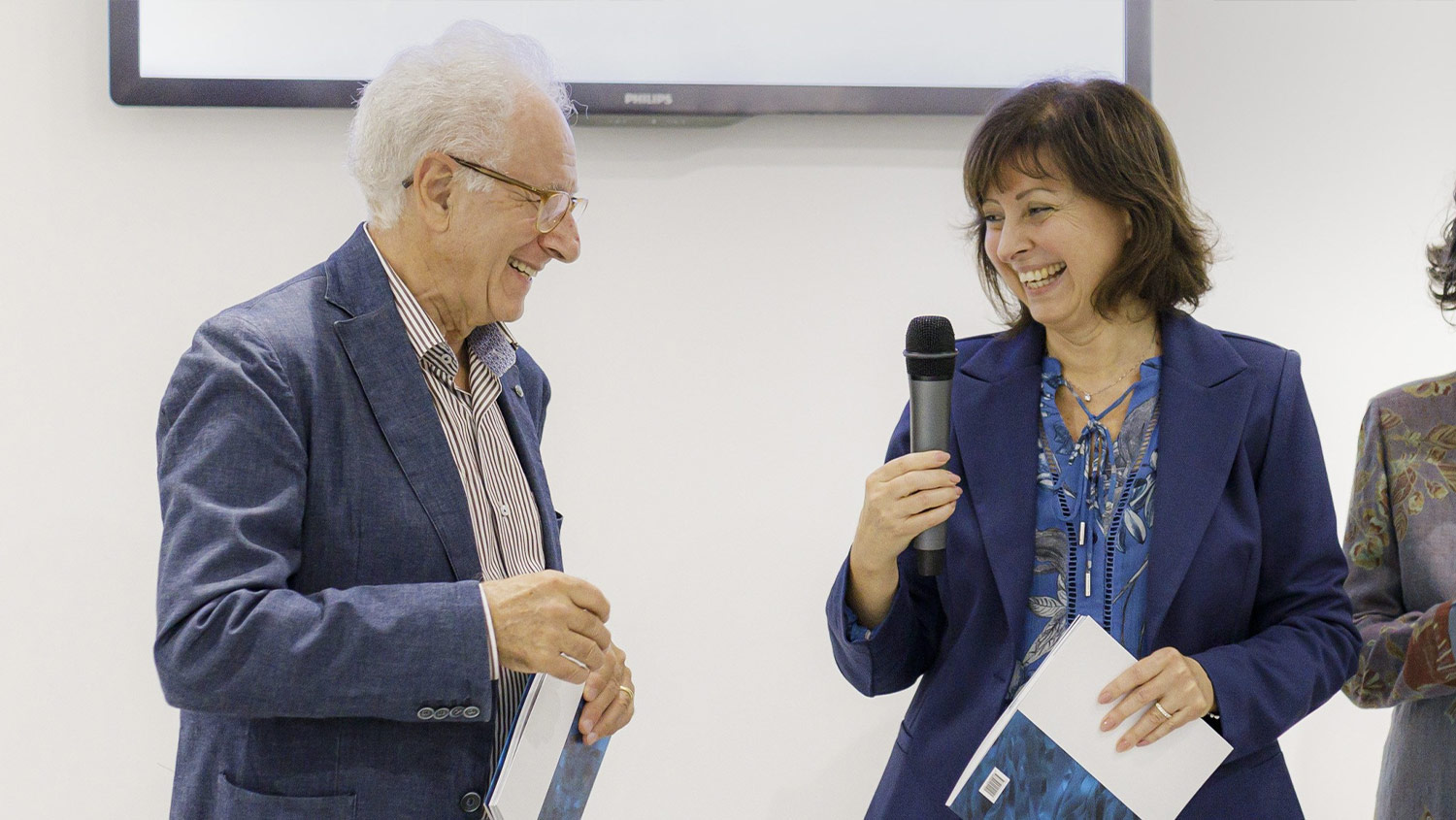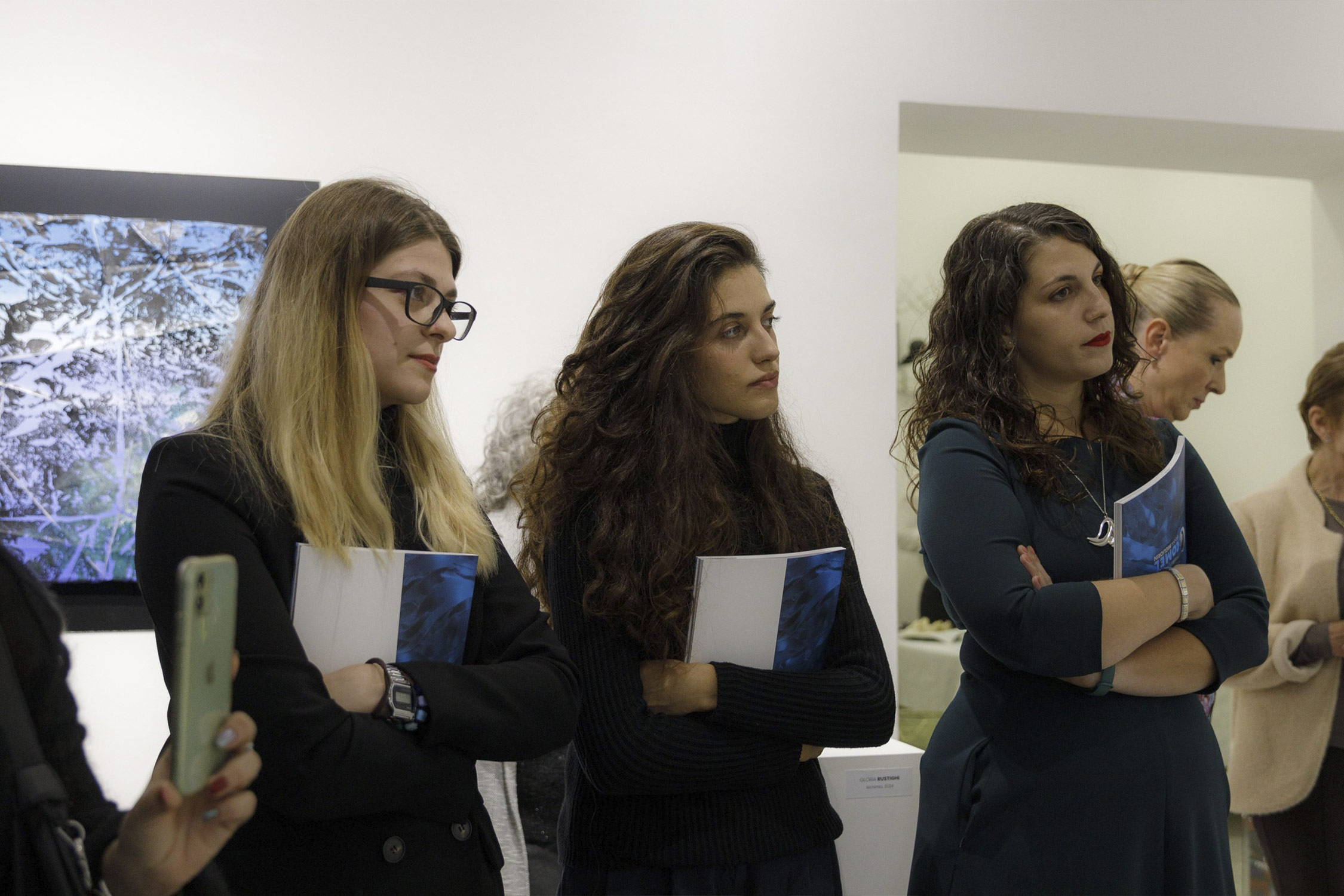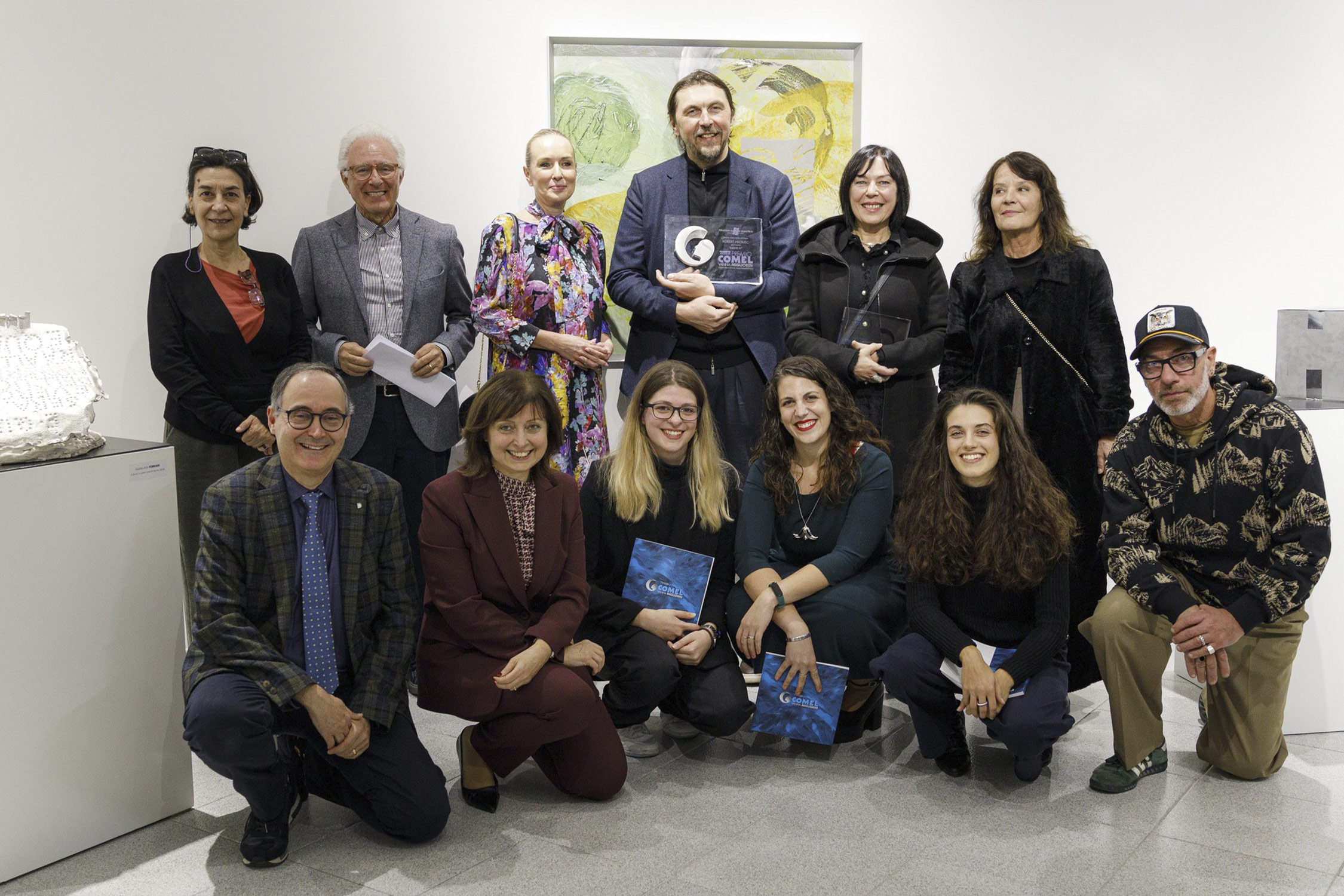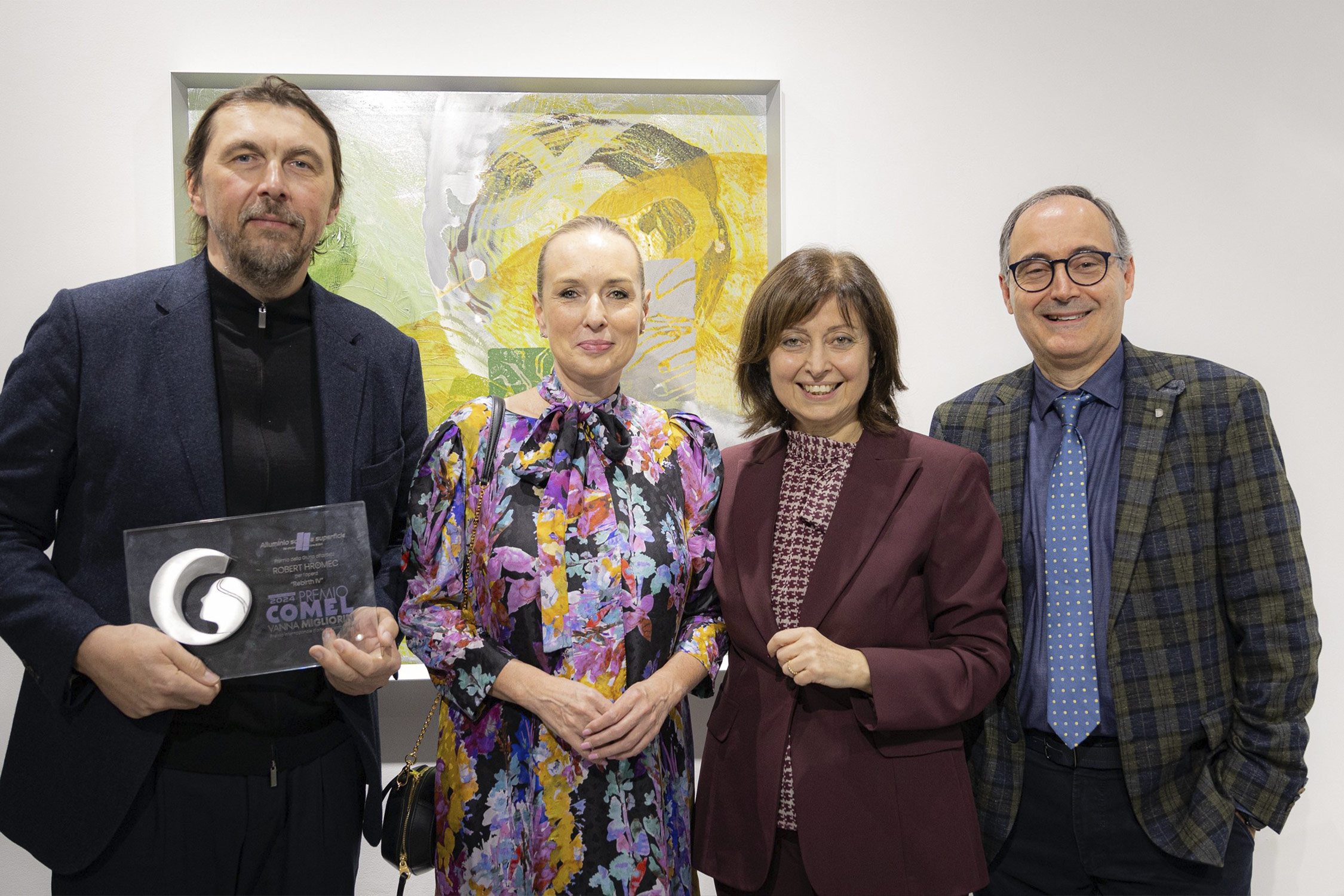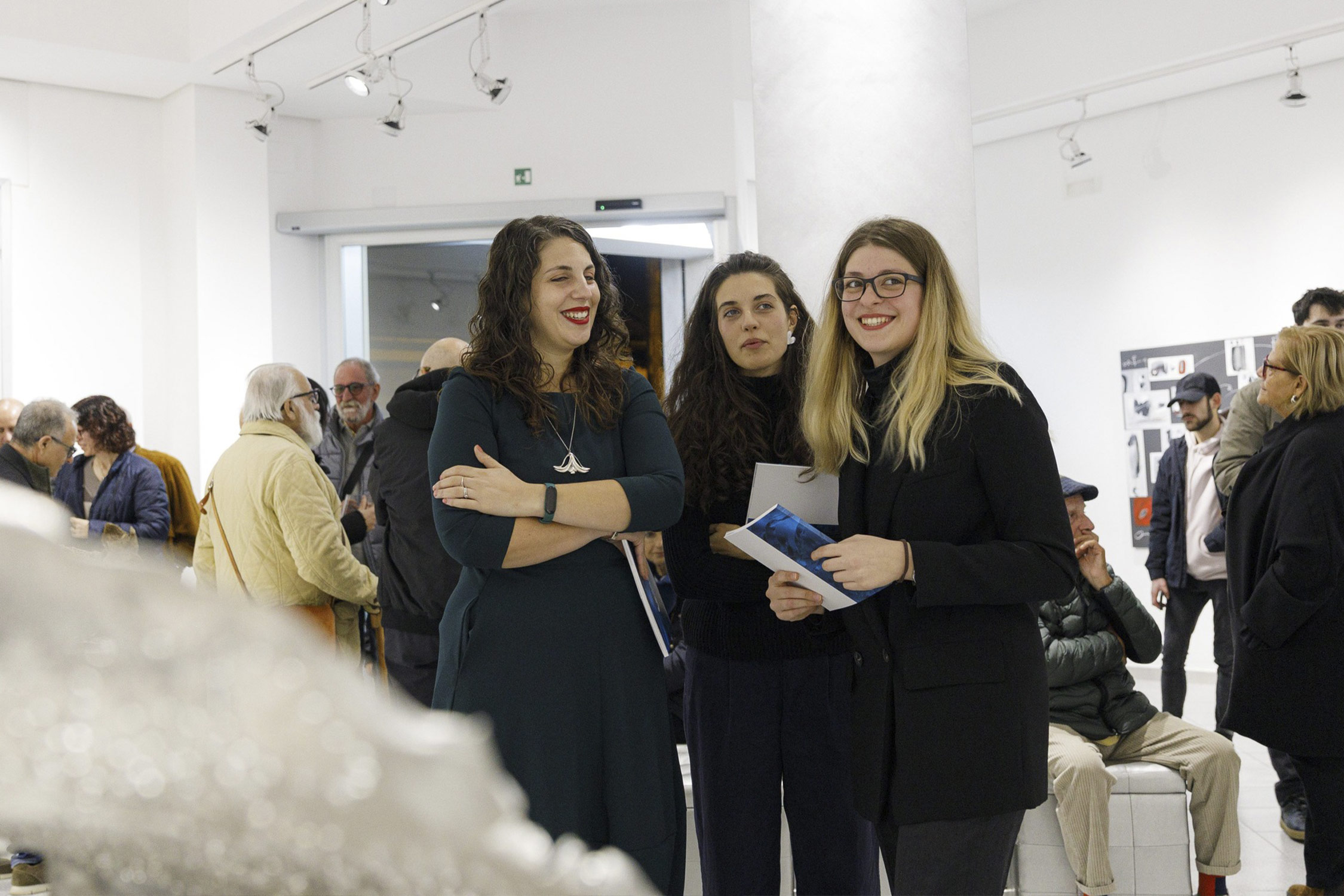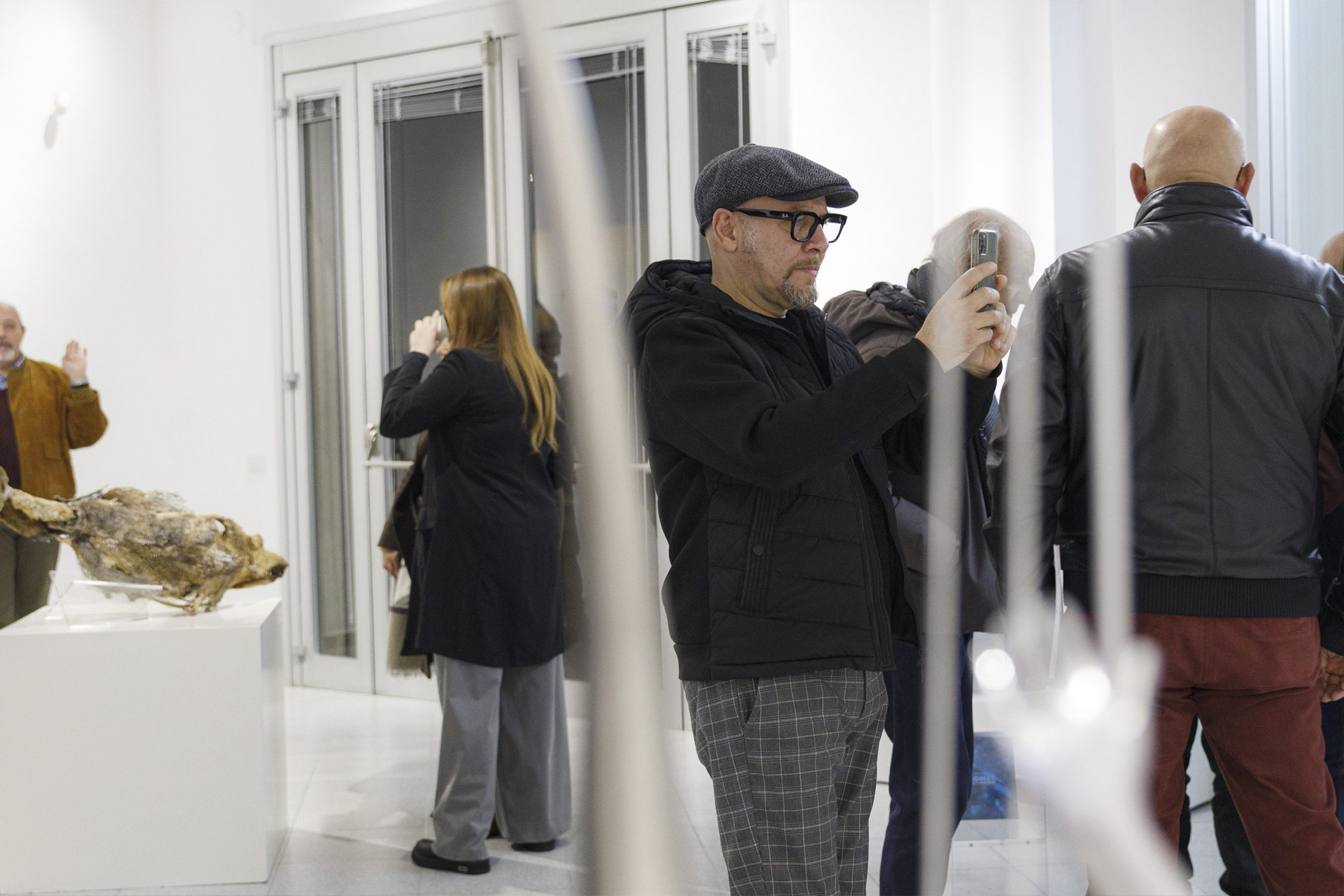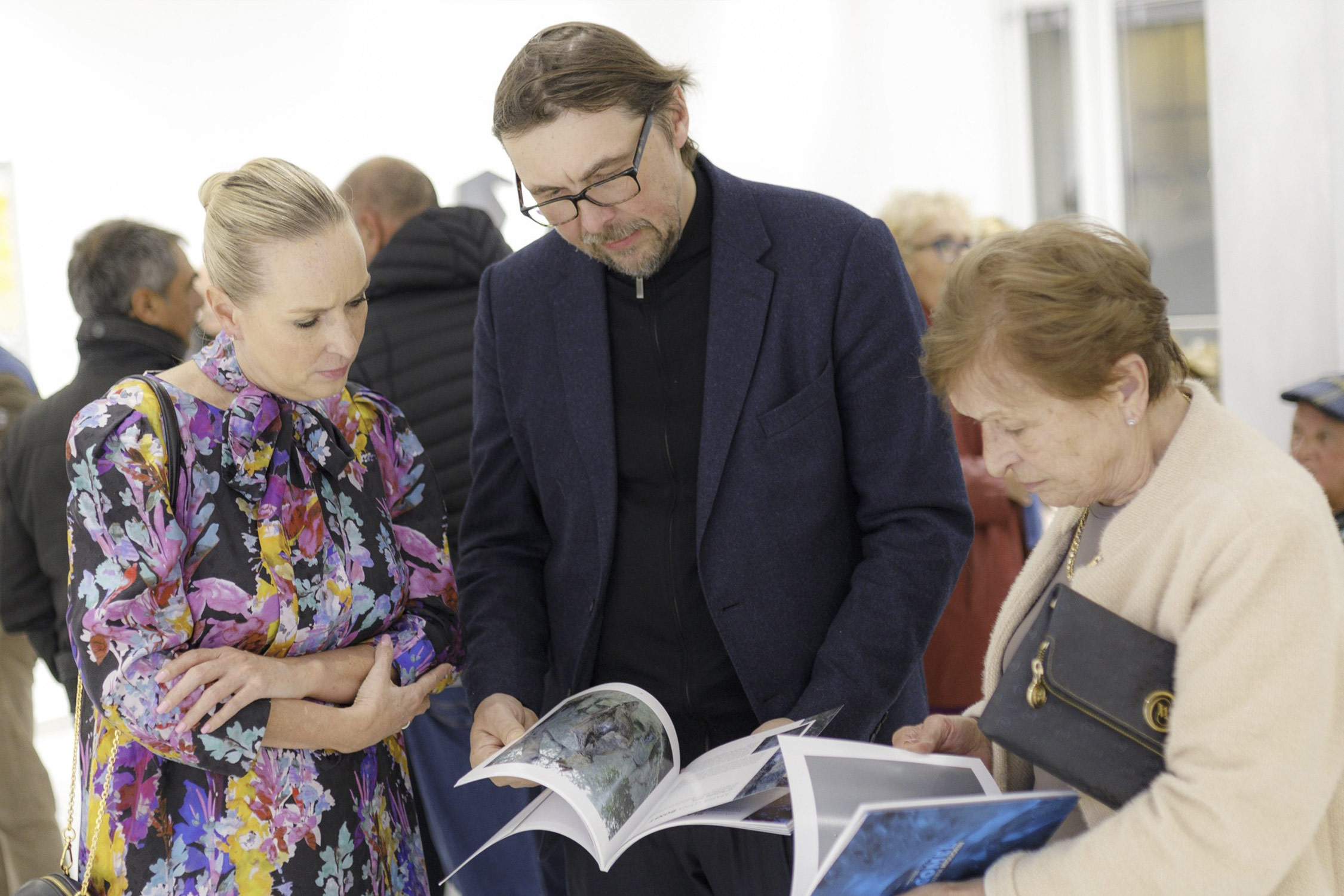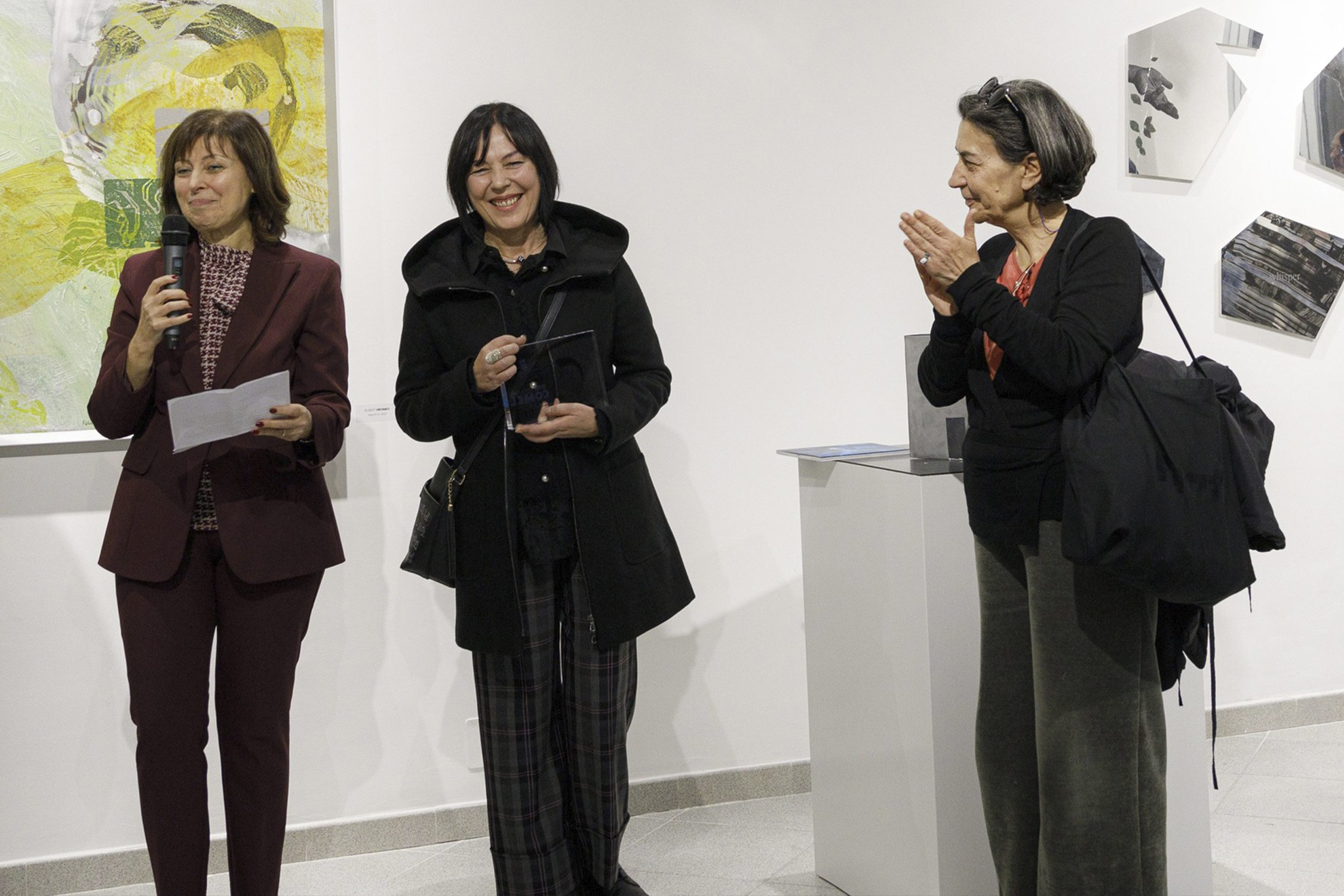“Art is always a story behind appearances.”
Anonymous
Among the characteristics of aluminium is corrosion resistance, that is, the ability of this metal to resist the action of external agents. This happens because, in contact with oxygen, a film, a protective layer, is created on the surface of aluminium, which is thin and resistant. It is as if the metal puts in place a kind of defense mechanism, protection, integrity, to endure the weather and external aggression,in order not to lose its physical and chemical characteristics. Beneath the surface, aluminium remains itself and preserves its peculiarities. A natural process that can be said to be analogous to the reactions of human beings, who often, in order to defend themselves, mask their feelings, personal and true psychological and spiritual traits.
“Aluminium, beneath the surface,” starting from a specific property of this metal, wants to be an encouragement to aim at the heart of things, to express in art what is often hidden behind appearances, what leaks out, what is not immediately visible and delineable, what is hidden. Art after all by its nature is also forwarding into the invisible, probing the inner spaces of existence.
THE JURY
GIORGIO AGNISOLA
Critico d’arte e scrittore, docente
Presidente di Giuria
Giorgio Agnisola (1947), art critic and writer, is Professor Emeritus of Sacred Art and Cultural Heritage at the Pontifical Theological Faculty of Southern Italy (ITS). He is one of Italy’s leading specialists in contemporary sacred art. He was one of the founders of the School of Higher Education in Art and Theology of the Pontifical Faculty of Naples, San Luigi section, which he co-directed from 2006 to 2019. He is valde peritus of the Faculty for Aesthetic-Theological Sciences. He edits the AT periodical, online and in print, Arts, and theologies, and is the founder and presenter of the formation project VisioDei. He worked from 1983 to 1995 in the French-speaking countries of Europe, within the framework of international agreements, as a consultant for modern and contemporary art. From 2005 to 2008, he was the Gaeta Municipal Art Gallery Director. He has curated exhibitions of international importance on a scientific level. Among them: Il Simbolismo in Belgio (Symbolism in Belgium) (Caserta, 1985), Emilio Greco, la dimensione psicologica e spirituale (The Psychological and Spiritual Dimension)(2010); Alberto Magnelli, opere 1915-1970 (Alberto Magnelli, Works 1915-1970) (2012); Alberto Burri, Unico e multiplo (Unique and Multiple) (2014), Afro, La memoria ritrovata (Afro, The Found Memory) (2016), Pietro Consagra, La memoria trasparente (Transparent Memory) (2017), Aligi Sassu, 1915-1930 (2019), Rosso Guttuso, opere 1934-1984 (Rosso Guttuso, Works 1934-1984) (2020). He has written and edited many books. Among the most recent ones: Lo sguardo e l’oltre (The Look and the beyond (2018), Arte e dialogo nel Mediterraneo (Art and dialogue in the Mediterranean) (edited) ( 2019), La materia trasparente (The transparent matter) (2021), Henri Matisse, Gioia di vivere (Henri Matisse, Joy of living) (2022)(edited), L’amore spezzato, Dei distacchi e degli addii ( The broken love, of detachments and farewells) (2023), Quale arte sacra oggi? ( Which sacred art today?) (edited, with A. Dall’Asta). He is a member of the International Association of Art Critics. He has contributed to the cultural pages of the daily newspaper Avvenire since 1990. For his work as an art critic he has received two international awards: Chevalier de l’Ordre de Leopold II in Belgium, in 1987, and Officier de l’Ordre de Mérite in Luxembourg, in 1991. He was recently awarded the Premio Montale Fuori di casa for the Art section.
ALESSANDRO BERTRAMI
Journalist and Art Historian
Alessandro Bertrami (born 1977) is an art historian with a degree from the Università Cattolica in Milan, a professional pianist, and a professional journalist. He is the deputy editor of the cultural section of the daily newspaper Avvenire, where he focuses on topics related to art, architecture, and cultural policies. He is also part of the editorial team for the monthly cultural magazine Luoghi dell’Infinito, where he regularly writes about the relationship between art and the sacred, particularly regarding contemporary issues and artistic languages. He is the author of numerous articles and critical essays. He lives in Lodi.
BRUNA ESPOSITO
Artist
In the field of visual arts, he works primarily with drawing, installation, photography, video, performance, and site-specific projects. He has participated in prestigious institutional exhibitions, including the Rome Quadriennale (2021, 2008, 1996), the Cuenca Biennial in Ecuador (2016), the New Orleans Biennial in the USA (2008), the Gwanjiu Biennial in South Korea (2004), the Istanbul Biennial in Turkey (2003), Sonsbeek 9 in Arnhem, Netherlands (2001), the Venice Biennale (1999, 2005), and Documenta X in Kassel, Germany (1997). His awards include the 9th Edition of the Italian Council Prize, MIC, Rome (2021), selection for the Chamber of Deputies Prize for the 150th Anniversary of Italian Unification, Palazzo Montecitorio, Rome (2011), the National Prize for Young Italian Art, MAXXI, Rome (2001), P.S.1 Italian Program, New York, USA (1999), and the Golden Lion at the 48th International Art Exhibition of the Venice Biennale with the group pavilion Dapertutto, Venice (1999). He is currently part of the Research Fellowship program at the Museum of Civilizations in Rome and teaches sculpture techniques at the Academy of Fine Arts in Rome.

Art History Professor, Freelance Curator, Journalist
Born in Naples in 1981, he is a critic and curator with a PhD in Archaeological and Art Historical Research Methods from the University of Salerno. From 2013 to 2015, he taught contemporary art history at RUFA – Rome University of Fine Arts. His published monographs include Hans Haacke. Il contesto politico come materiale (Plectica, 2010); La contestazione dell’arte. La pratica artistica verso la vita in area campana. Da Giuseppe Desiato agli esordi dell’arte nel sociale (Iod, 2015); and La radicalità dell’avanguardia (Ombre Corte, 2017). He has also authored two volumes of short stories and poetry collections. He regularly contributes to the magazines Segno and OperaViva Magazine. His writings have appeared in magazines such as Boîte, sdefinizioni, Roots§Routes, Titolo, Tracce, and undo.net. He currently teaches art history at the secondary school level.
MARIA GABRIELLA MAZZOLA
Aluminium Sector Manager
Running the company COMEL Industrie. with her brother Adriano and sister Luisa, she combines technical-business preparation with organizational and coordination skills, bringing the company new guidelines such as attention to communication, innovation and marketing. She has always supported, personally and with the company, cultural activities in favour of the territory and animal protection. In December 2012 Maria Gabriella received an award for entrepreneurial merits from the “Nuova Immagine Latina Cultural Association”. She is president of the “VANNA MIGLIORIN Cultural Association” which promotes contemporary intellectual and artistic works to the public, in all their forms and expressions. Among the various activities of the association, the promotion of the COMEL Award and the organization of monographic exhibitions dedicated to artists of international fame.
THE 13 FINALISTS
THE WINNERS
MINUTES OF THE JURY
COMEL AWARD VANNA MIGLIORIN 2024
On Monday, 28th October 2024, at 3 p.m., at the Spazio COMEL in Latina via Neghelli, the panel of examiners for the 11th edition of the COMEL Award 2024 met.
Present were the following: Alessandro Beltrami, art historian, critic, and journalist; Bruna Esposito, artist; Maria Gabriella Mazzola, entrepreneur and promoter of the award; Stefano Taccone, art critic and historian; members; and Giorgio Agnisola, president, art critic.
First of all, the award guidelines were reiterated, mainly focusing on aluminium as a specific and founding element in creating the works taking part in the competition and their compliance with the rules of the relative call for entries. An initial analysis of the 13 finalists’ works in the gallery was then carried out individually, followed by a collective review of personal preferences. Based on this first reading of the works, a smaller shortlist was drawn up, and a second evaluation was carried out, first individually and then collectively.
Finally, based on a wide-ranging and calm discussion, we moved on to the concluding examination, from which the following results emerged unanimously:
The jury awards the COMEL Award 2024, eleventh edition, to the work “Rebirth IV”, 2023 by Robert Hromec with the following motivation:
In his work Rebirth IV, the Slovakian artist Robert Hromec interprets a lyrical and fantastic dynamism of planes and forms, in which colour is a sign of space and light. To such a representation, aluminium corresponds with its bright and variously allusive, almost symbolic nature. One can also read the artist’s refined technical ability to work metal and make it almost pictorial matter. While the general expressive framework recalls well-established registers of especially informal post-war art, the multifaceted and shrewd intervention on aluminium is an absolute, inspired novelty.
Special mentions were awarded to the works of the following artists:
Gianluigi Ferrari for the work “Come in cielo così in terra”, 2024,
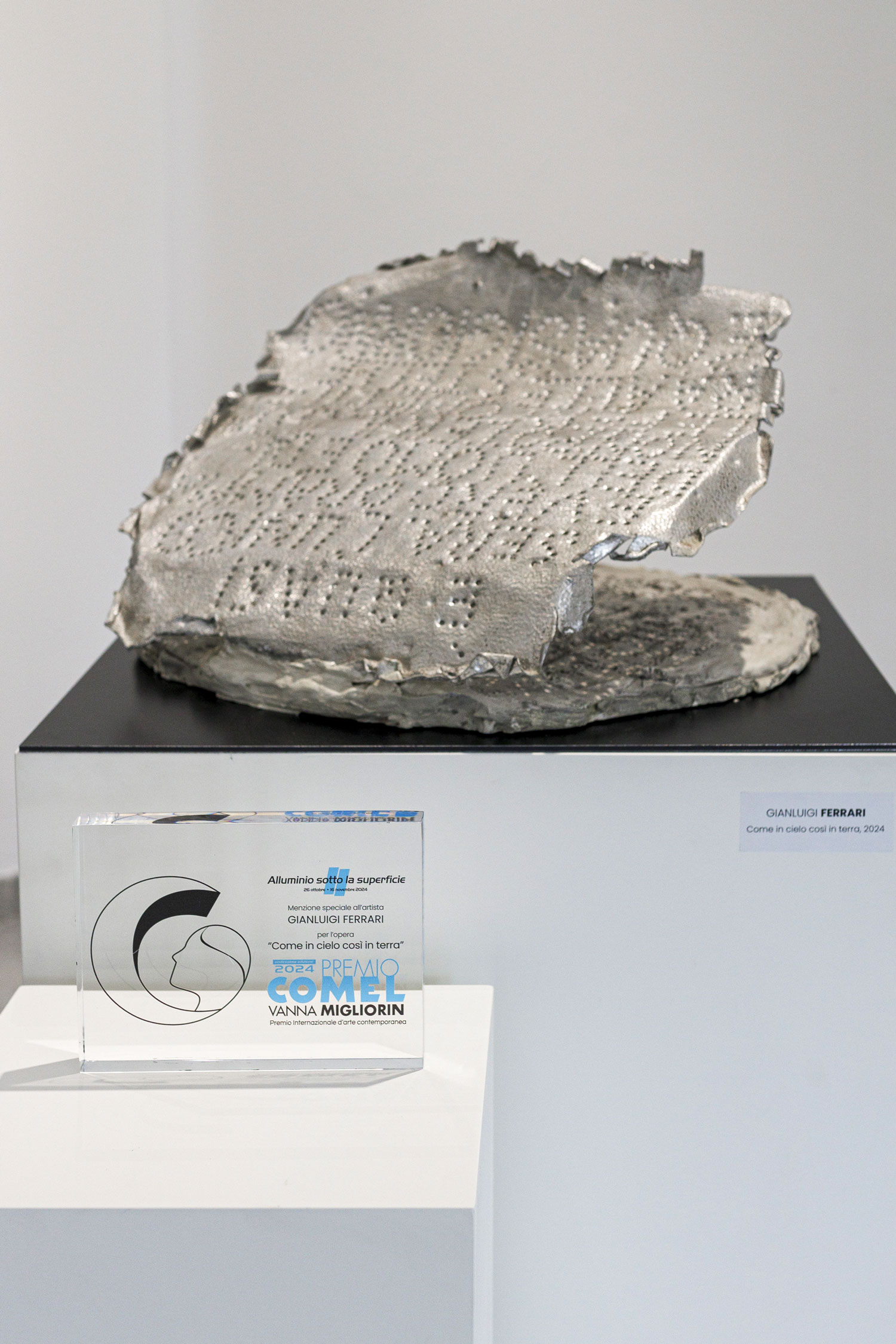
In his work ‘Come in cielo così in terra’ (As in heaven so on earth), the artist proposes a linguistic metamorphosis and a spiritual and almost mystical reversal of the gaze. The light crosses a shapeless aluminium wall on which a sort of epigraph is carved along the path of a sort of epigraph and is reflected on the dark, backplane of the inspired installation, becoming in the sign of writing the symbolic and narrative motif of an inner catharsis.
The work “Underwater” , 2024 by Sasho Blazes
In the work of Macedonian artist Sasho Blazes, the light of aluminium leaks out, subtended and diffused, within an abstract and evocative tangle of chromatic signs that seem to allude to a naturalistic and aquatic world, to an imaginary underwater seabed. The result is a sense of emerging and symbolic expectation, of a revelatory source: intimate, inspired, mysterious and silent.
The work “13° bozzolo”, 2024 by Maria Elena Bonet
The counterpoint between randomness and idealistic drive characterizes the work of the Belarusian artist Maria Elena Bonet, part of the project “Tu sei il giardino” (You are the garden), in which, in the sign of a symbolic realism, she seems to interpret the vitalistic secret of nature. An aluminum egg, with a vague alchemical reference, is placed in the center of a hollow root, symbolizing the hidden and mysterious perfection of the world.
The work “Underdog” , 2024 by Dimitar Minkov
The Bulgarian artist Dimitar Minkov, starting with the aluminium form of a conventional utensil, aims with his work ‘Undrdog’ to create a symbolic envelope of a precious organic material, holding the hint of a primordial mystery at the bottom of its informal arrangement.
The Audience’s Award goes ex equo to the work “Strato Liquido” by James Fausset Harris and “Indizi II” by Rosi Losito.
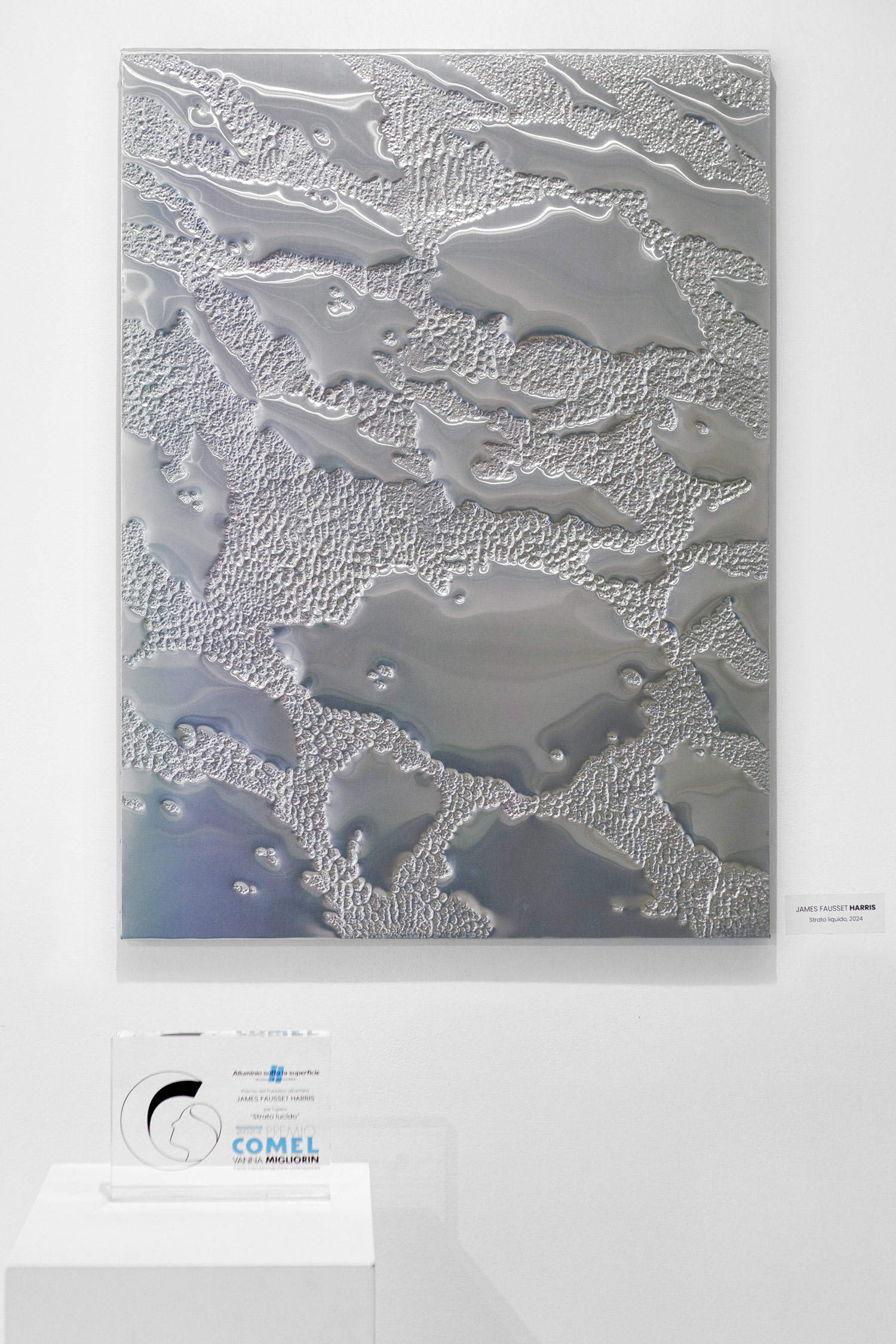
James Harris created an extraordinary work through the use of polished aluminum. His ability to make the most hidden elements shine is truly remarkable. With a series of precise hammer blows, the artist, working in small sections, unveiled a new image hidden beneath the original surface, capturing the gaze and attention of the exhibition’s visitors.
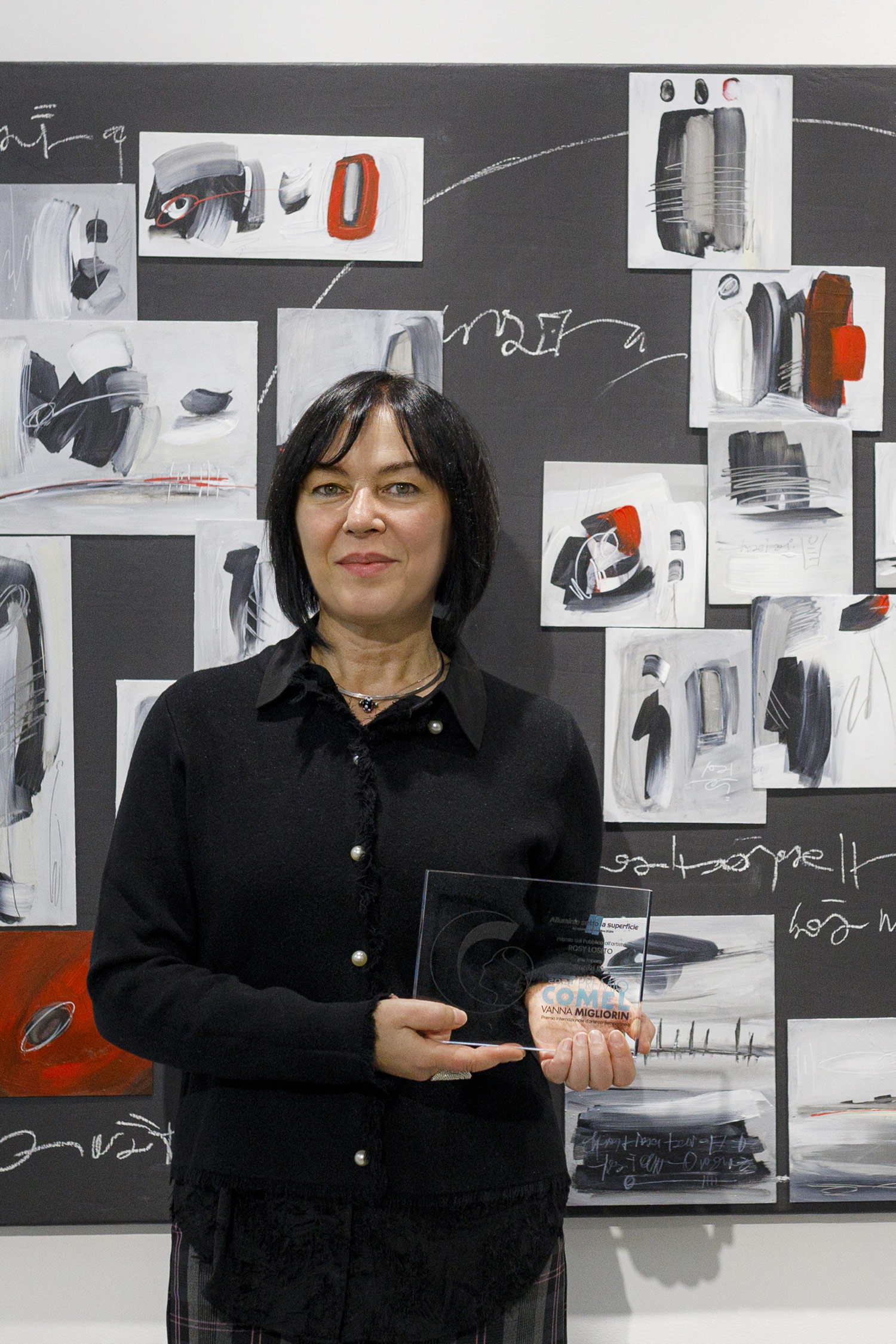
The jury, concluding their work and expressing their best wishes for the event’s continuation, expresses their sincere appreciation for the quality of the works received in the competition and the growing success of the award internationally.
Latina, 28th October 2024
PHOTO GALLERY
Exhibition setup
Inauguration of the XI edition
Award ceremony

